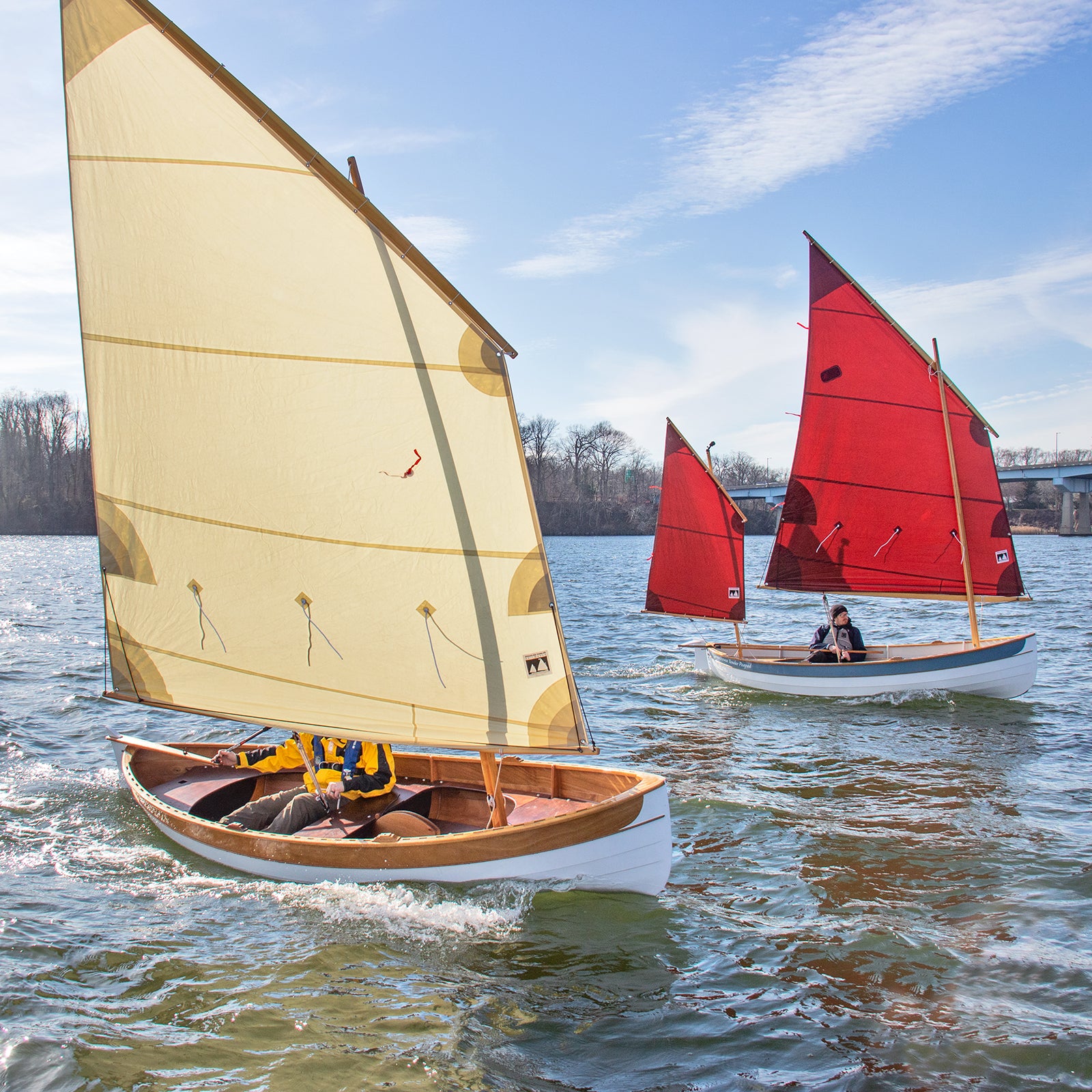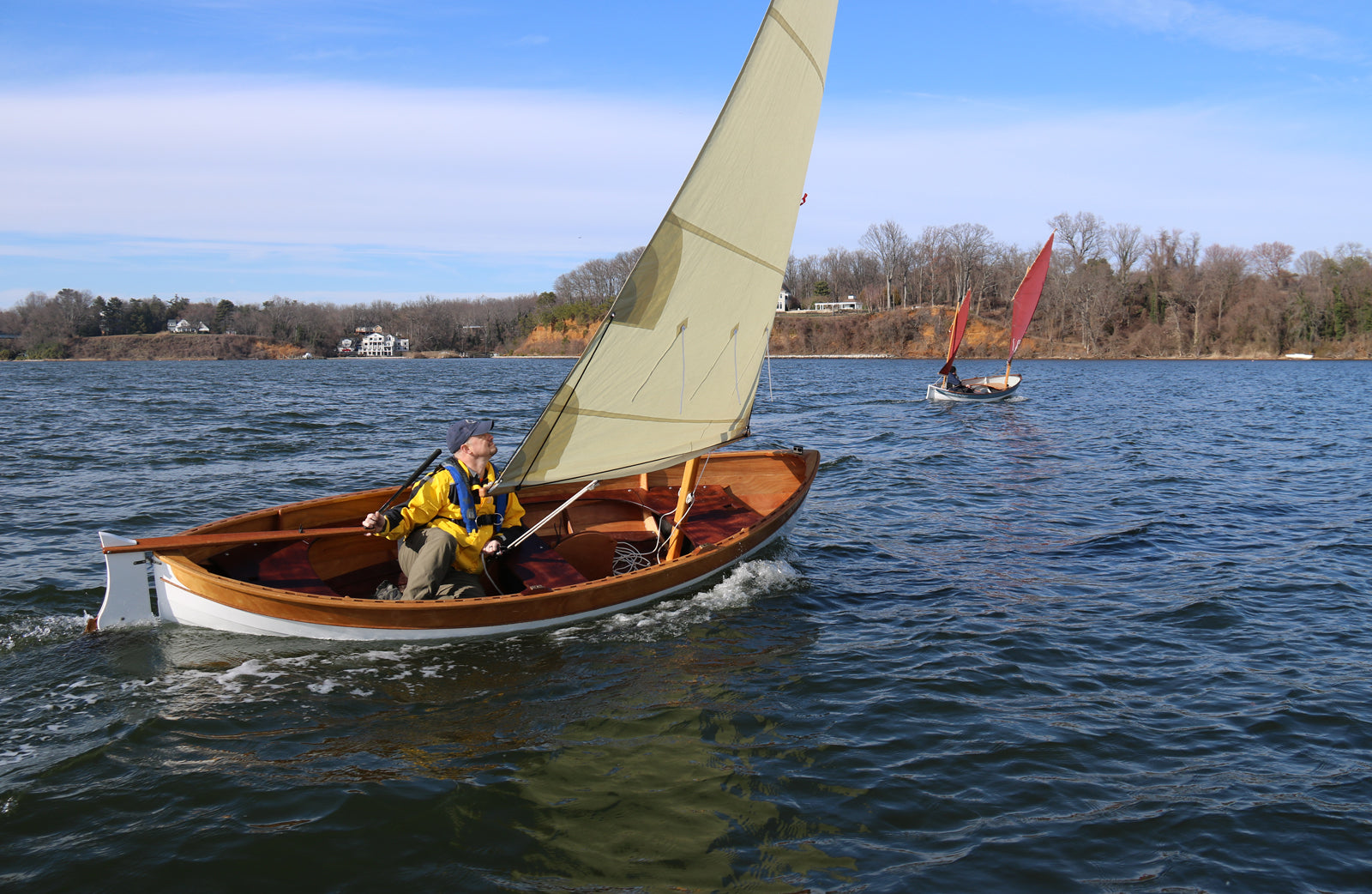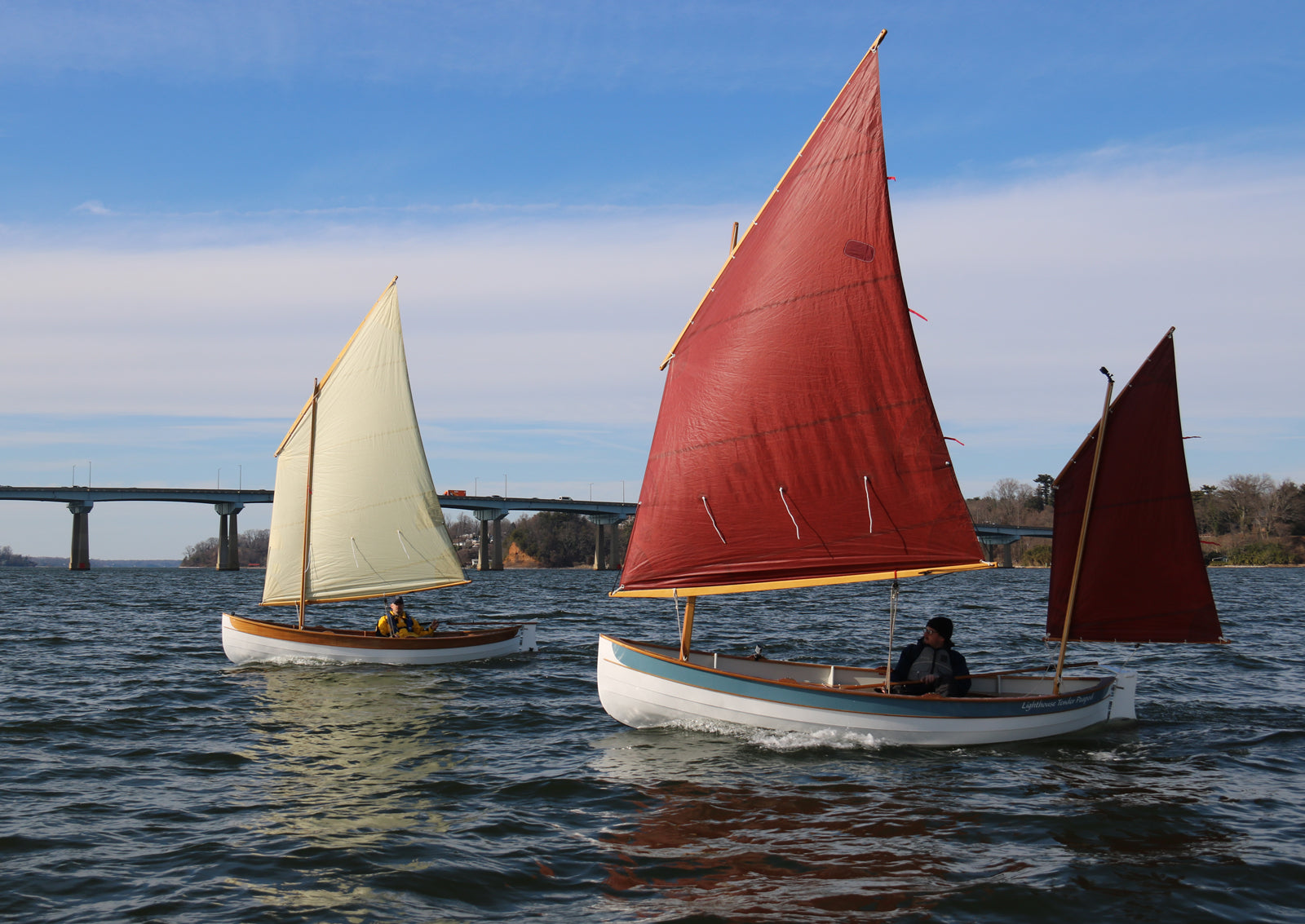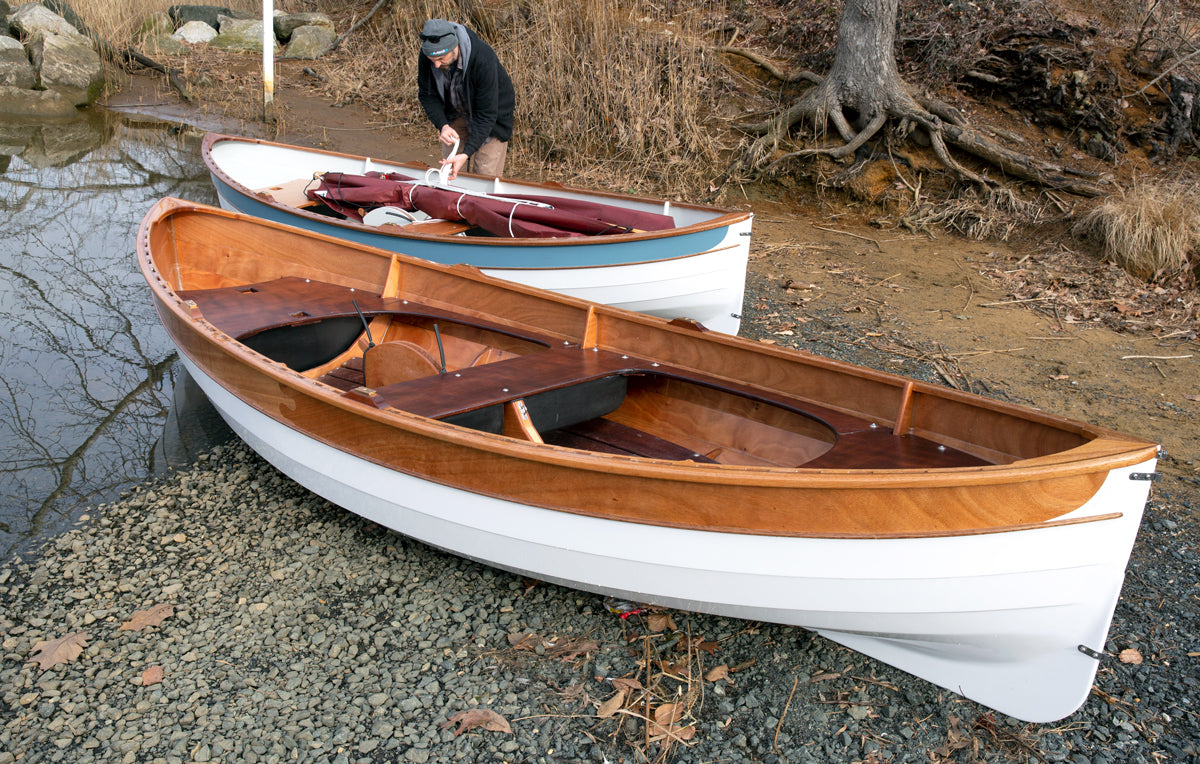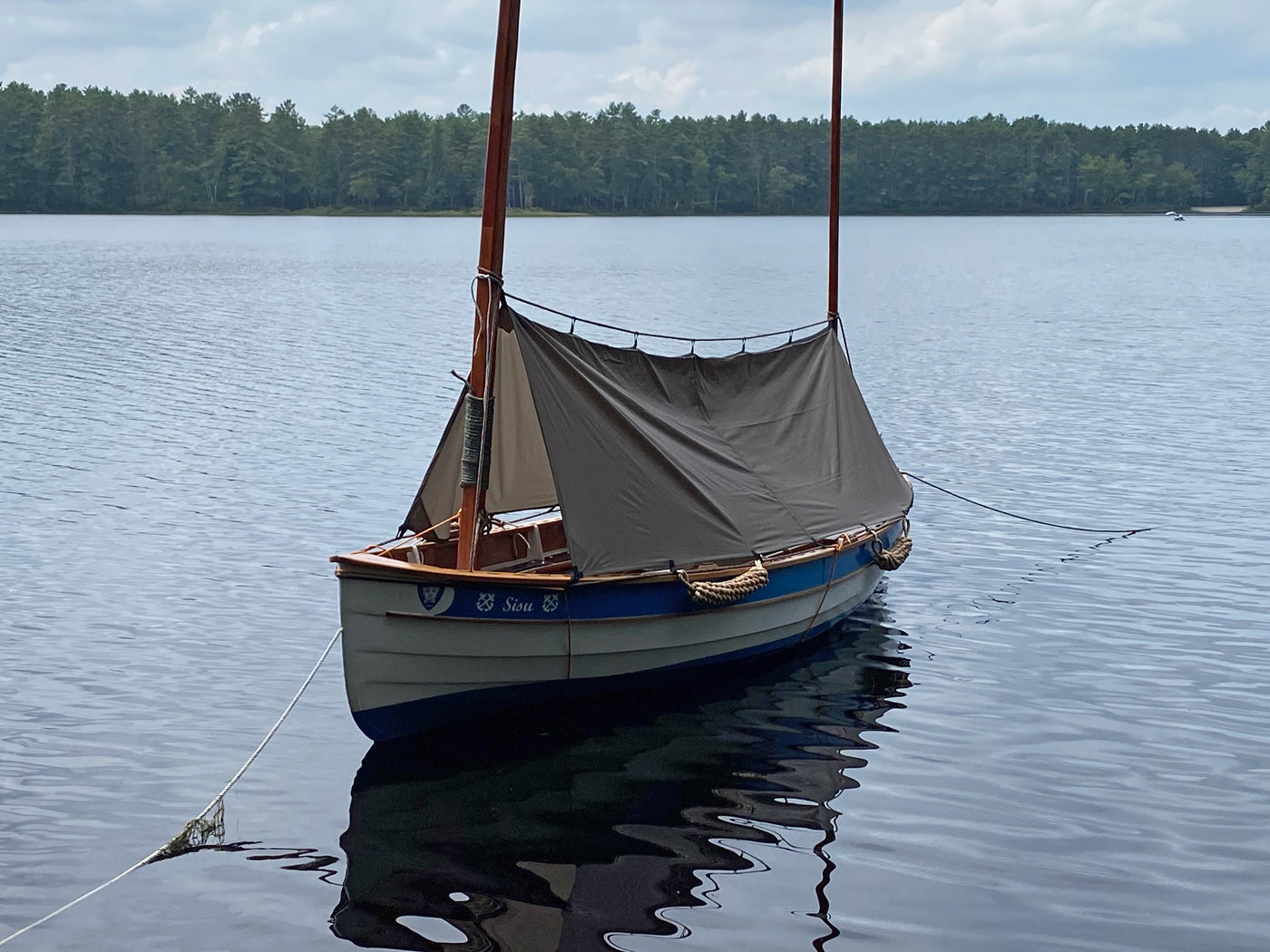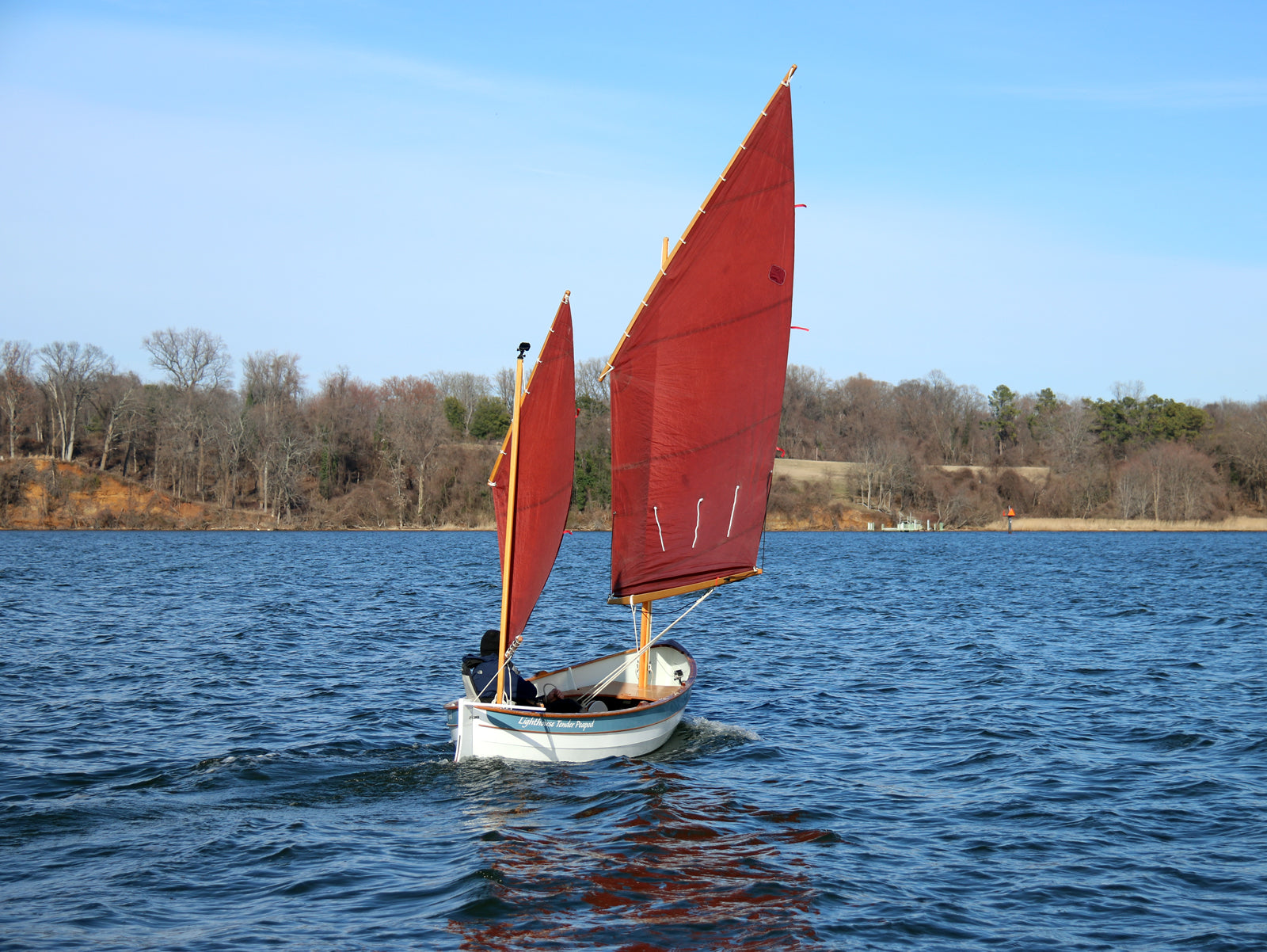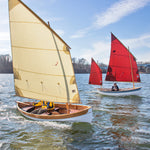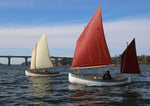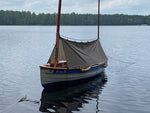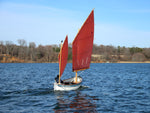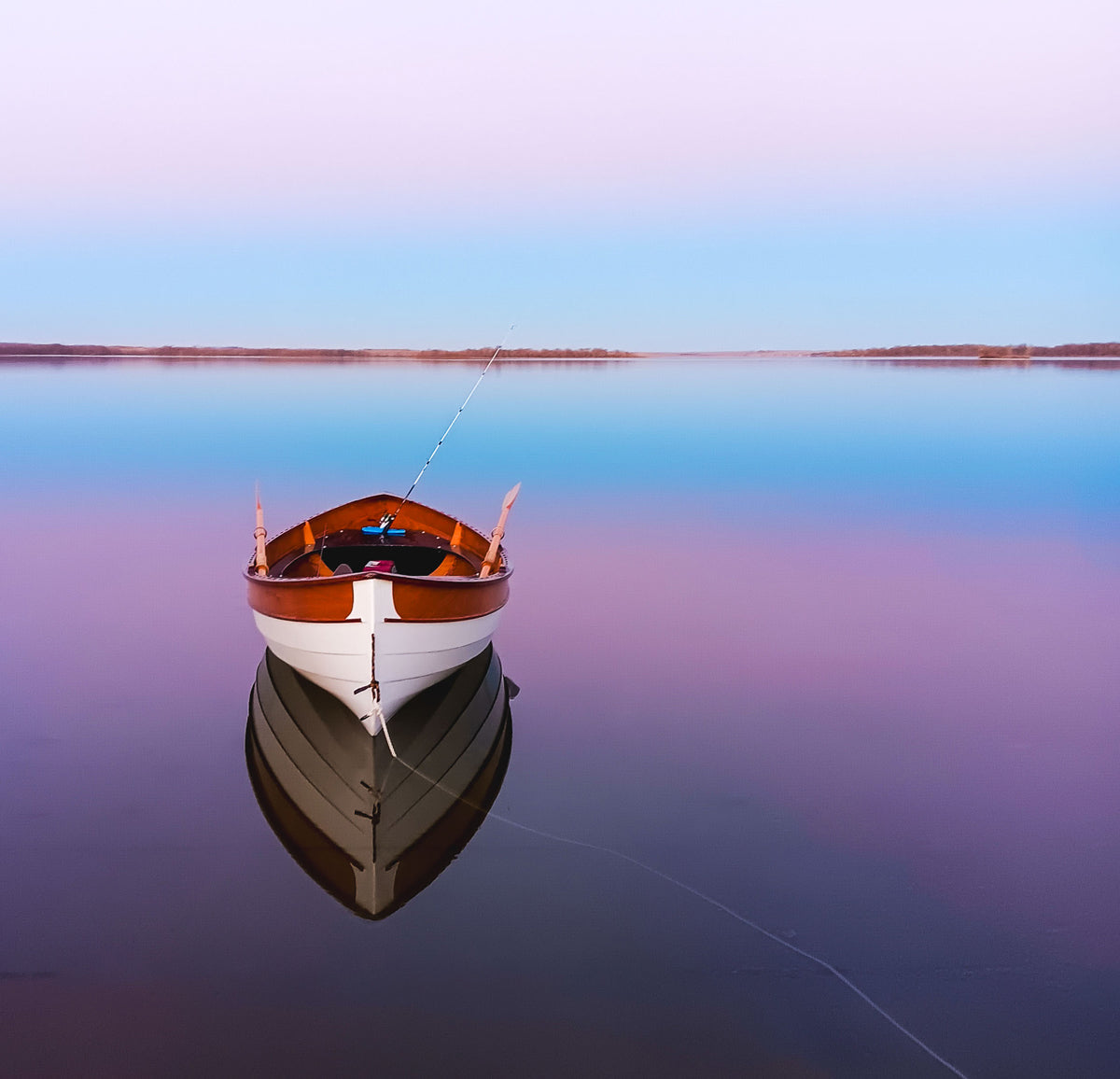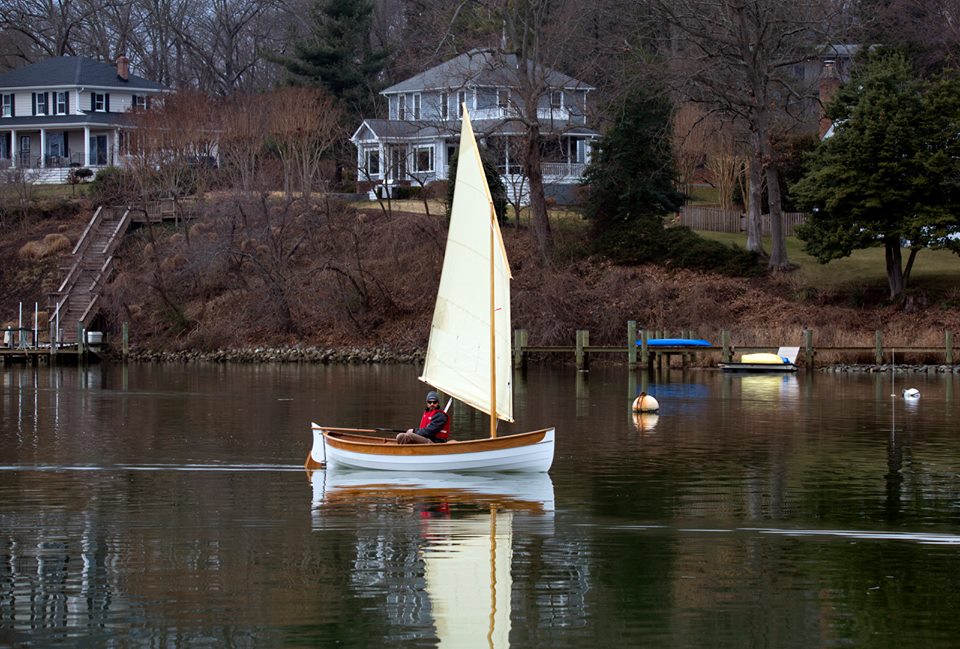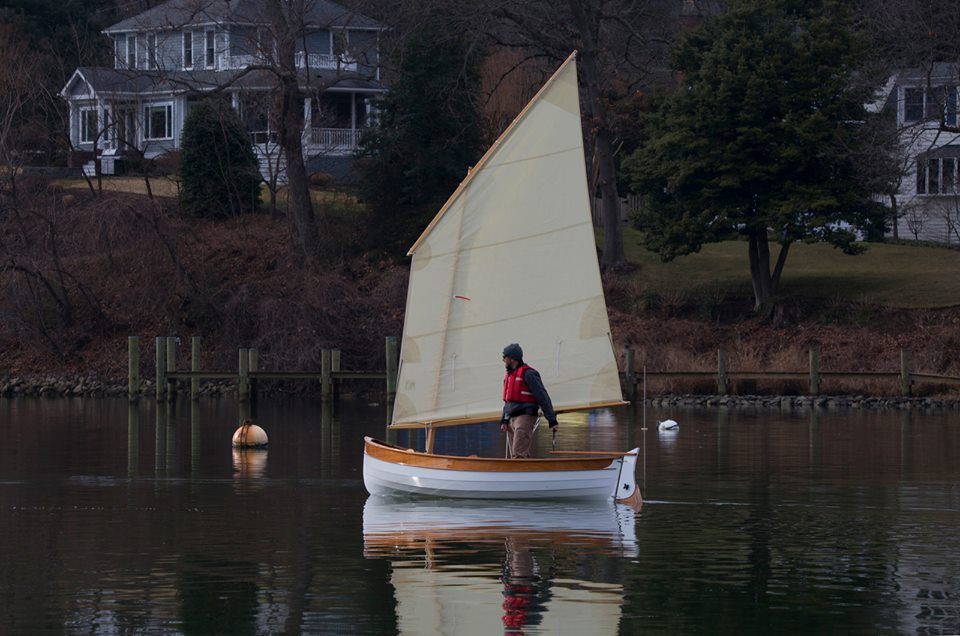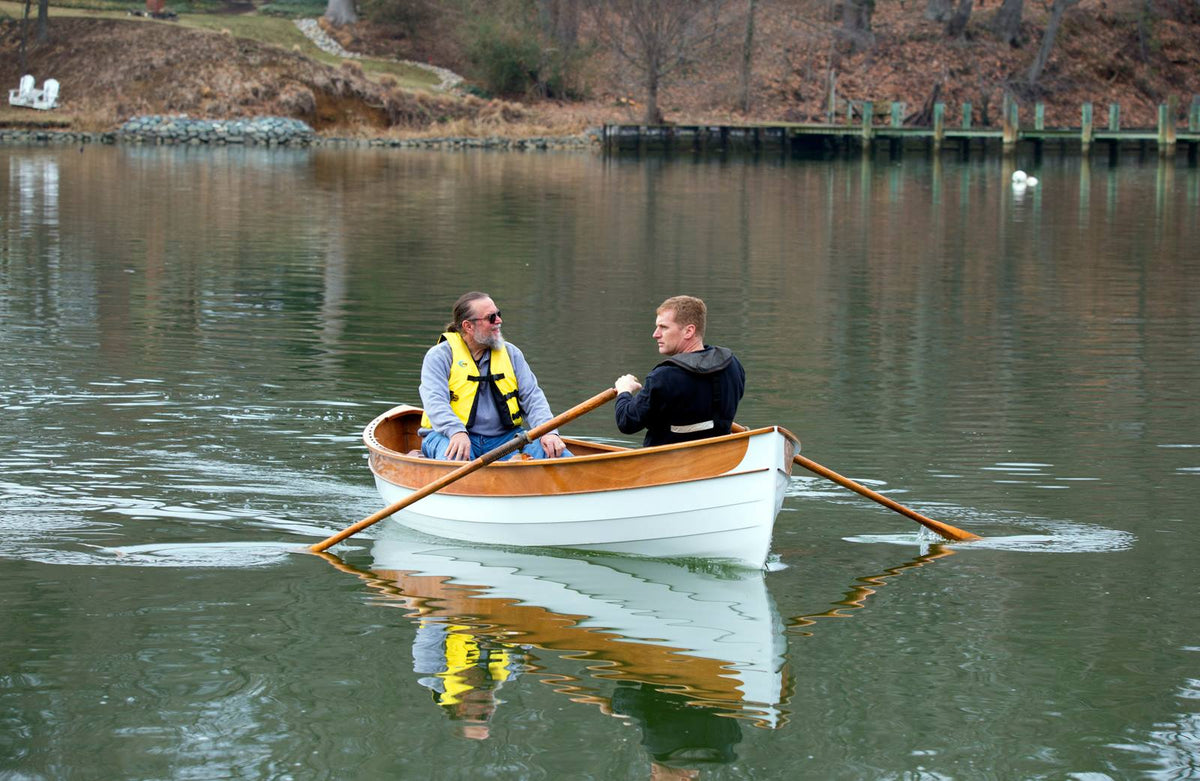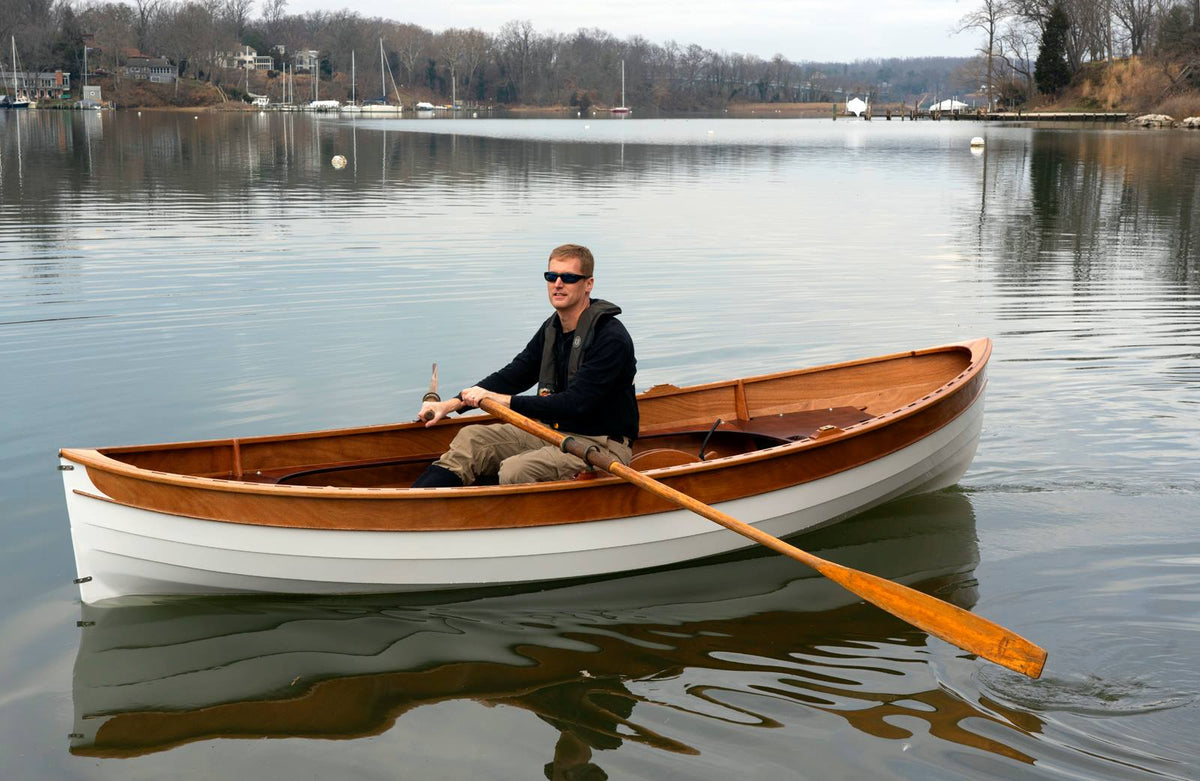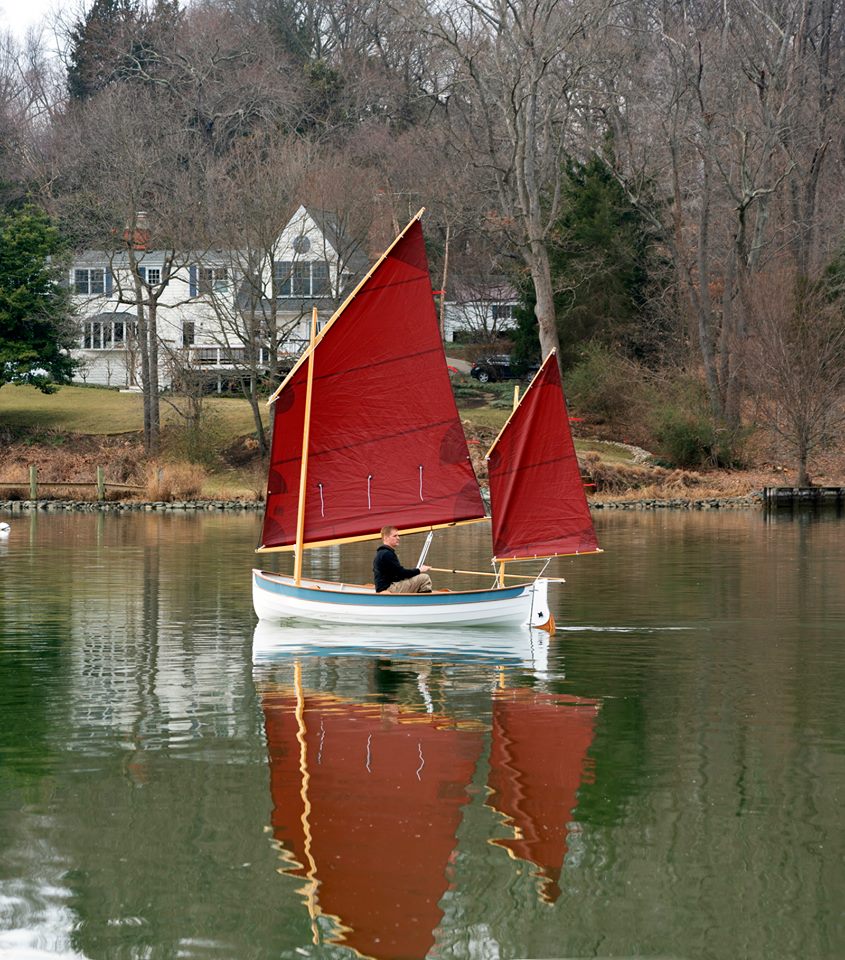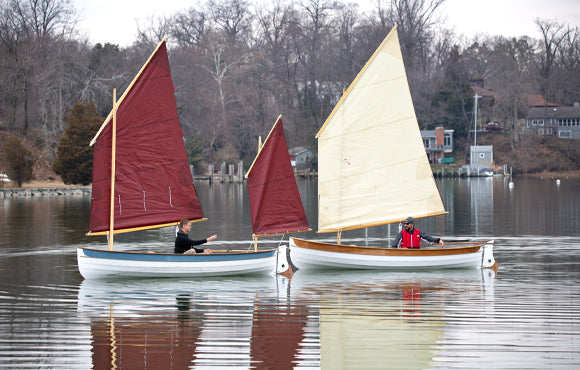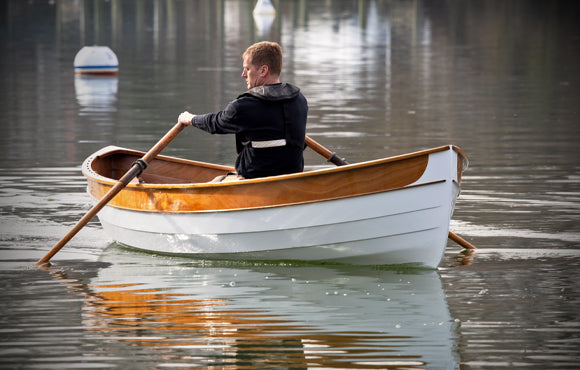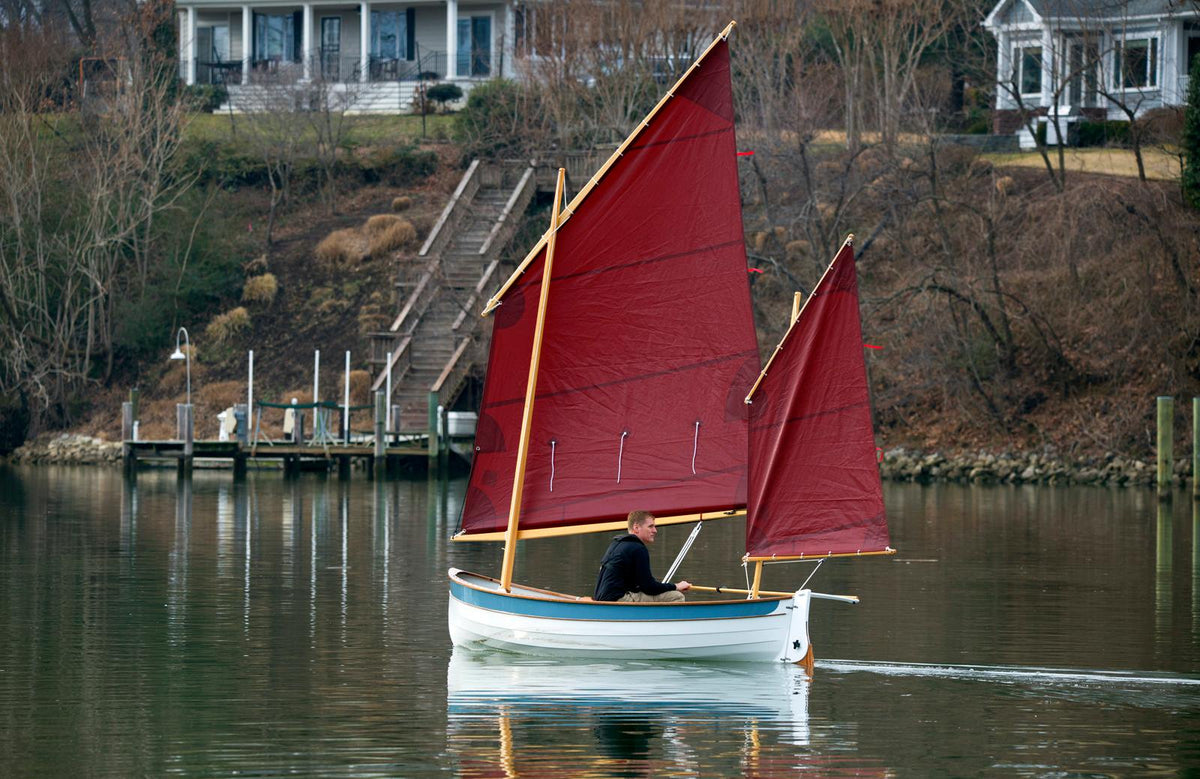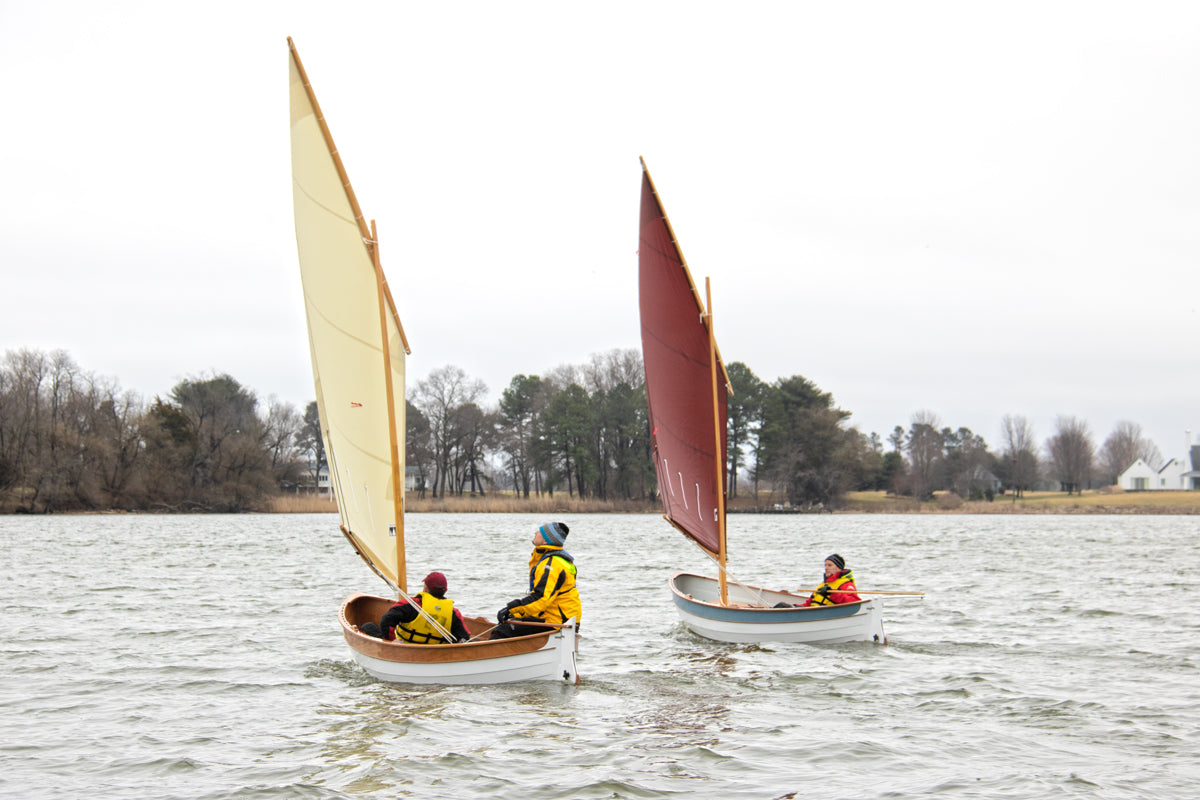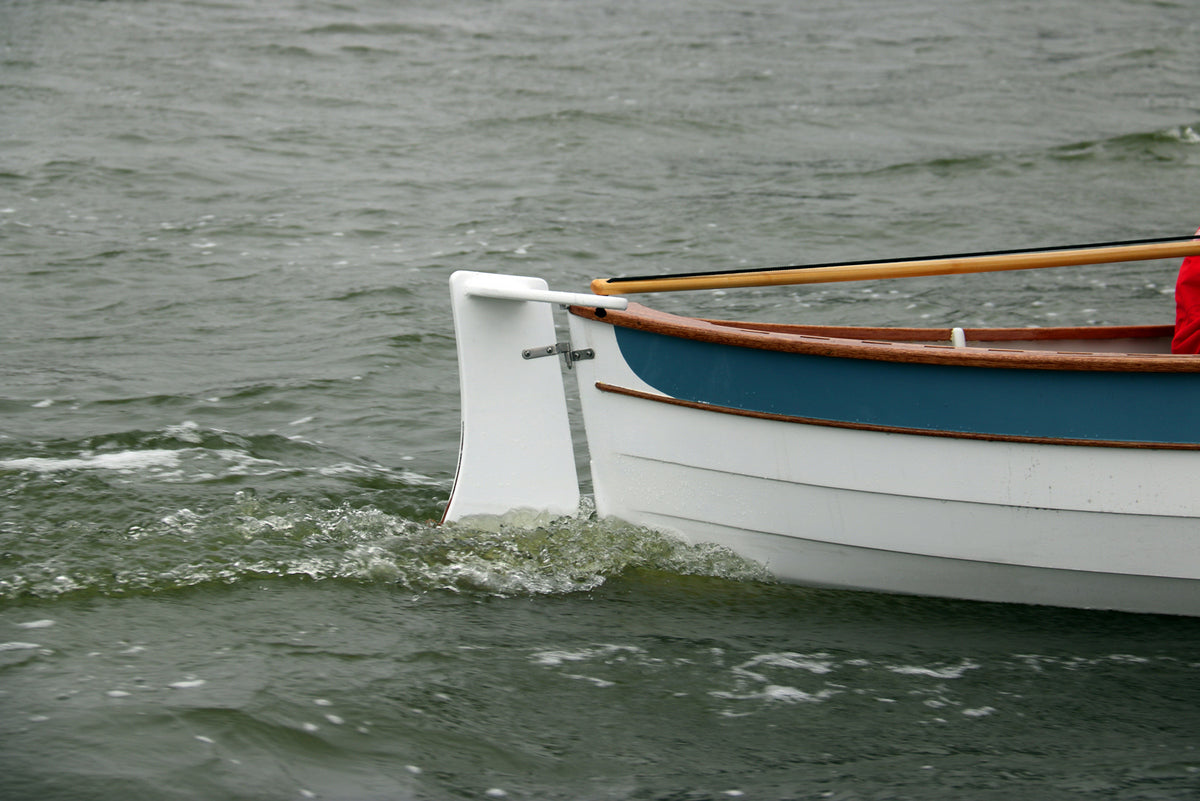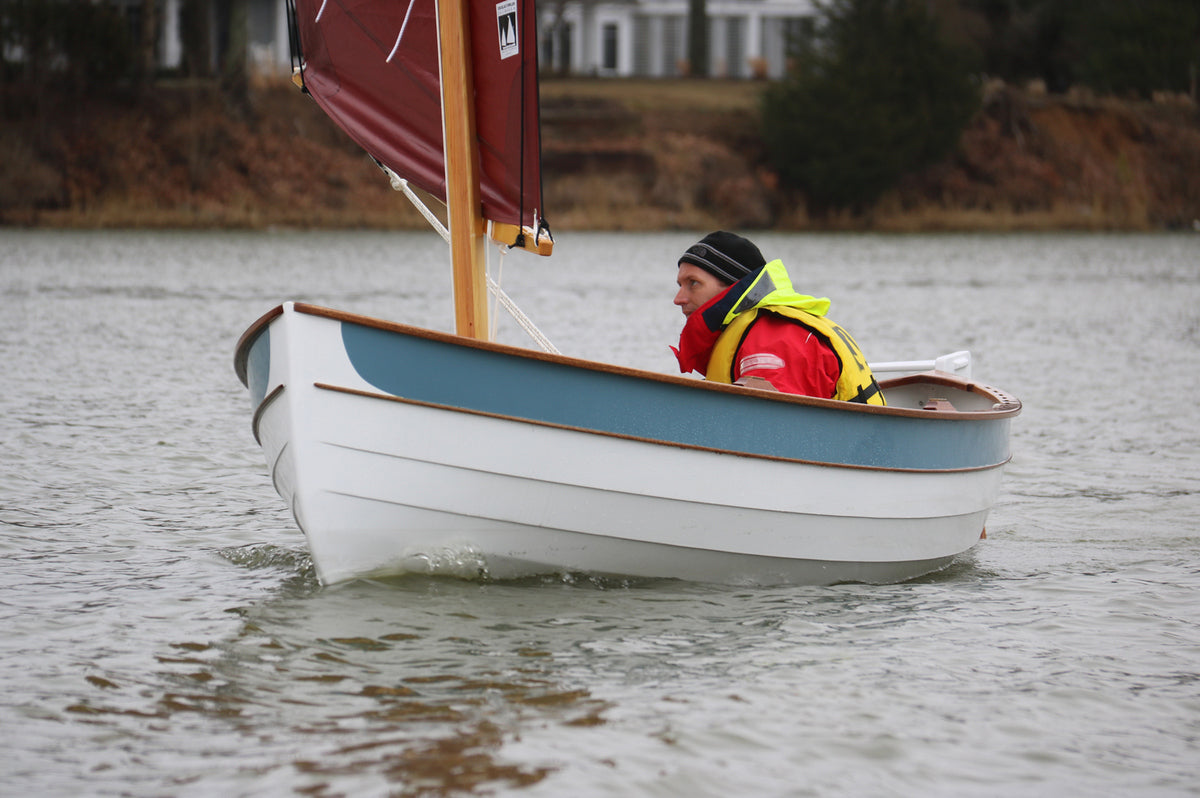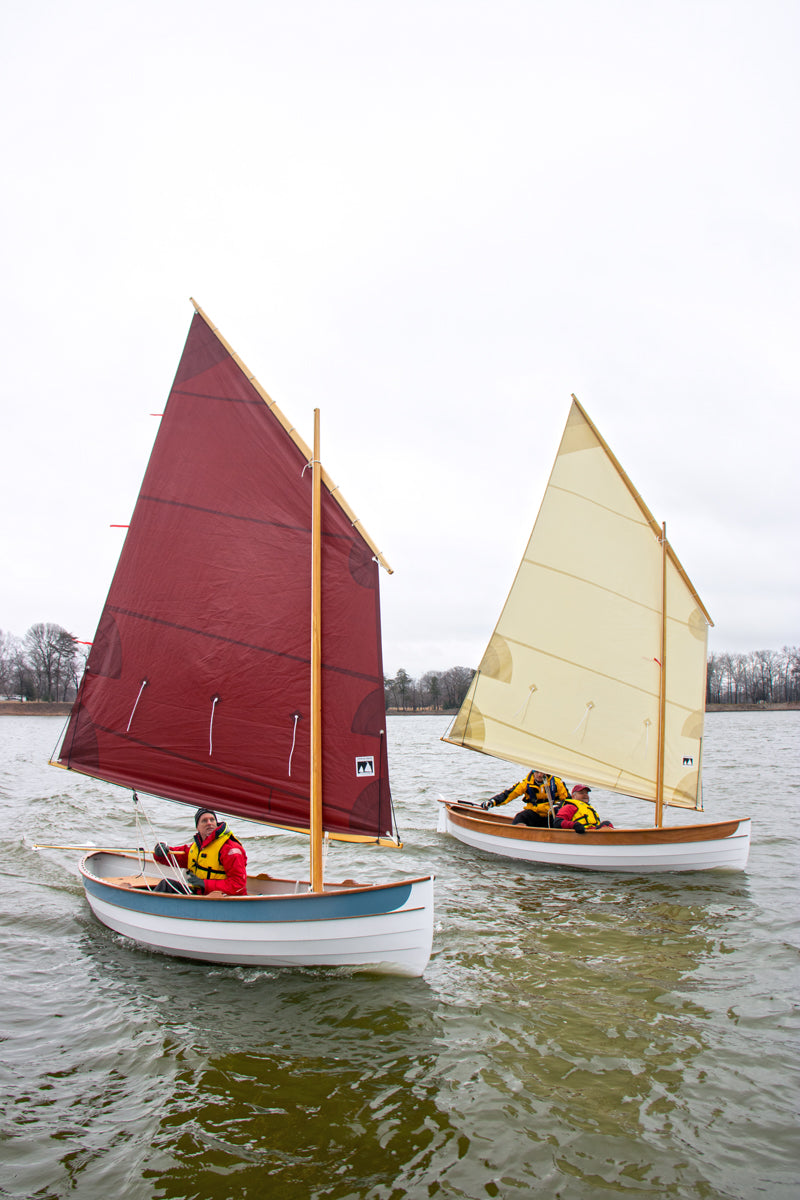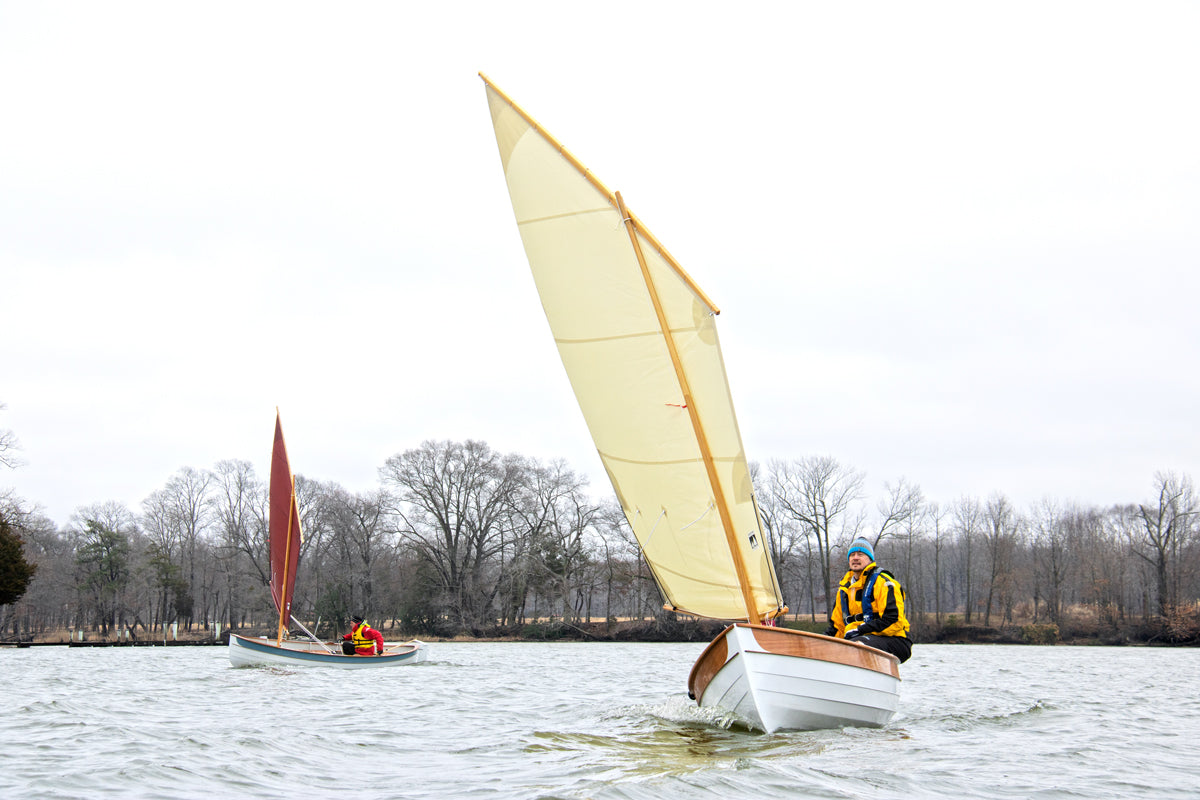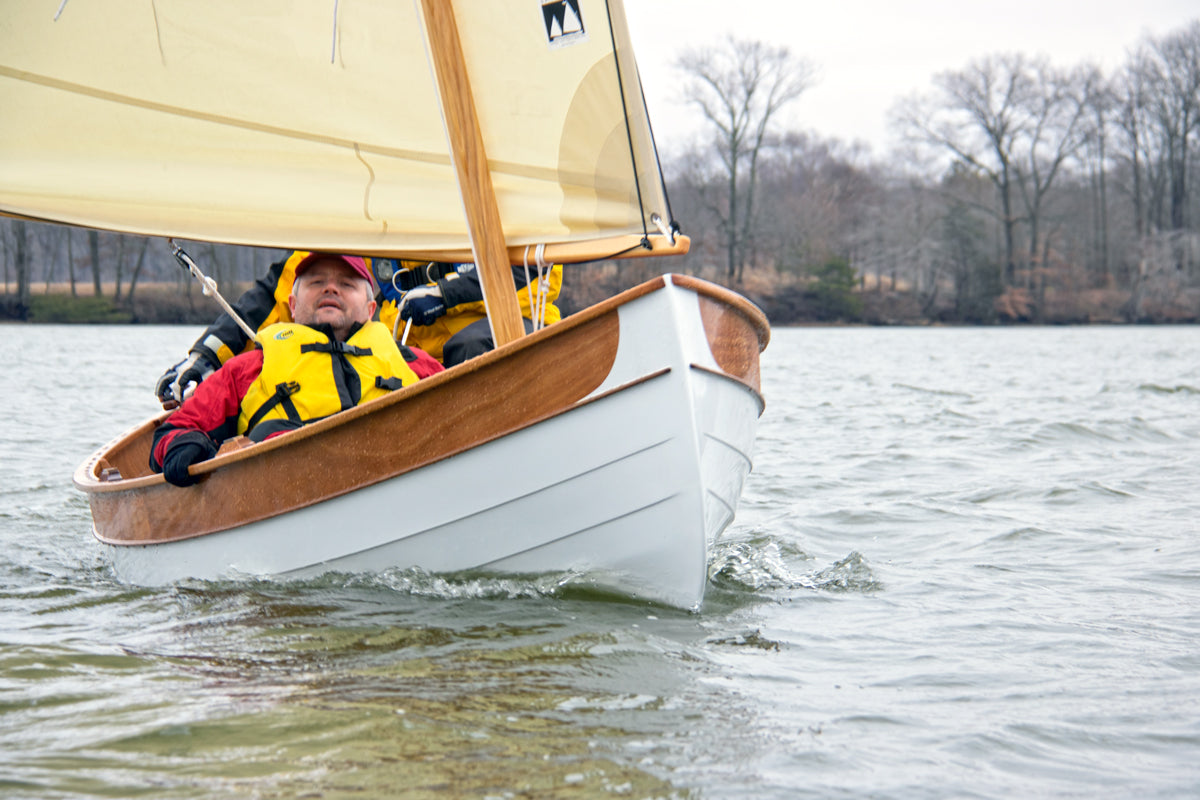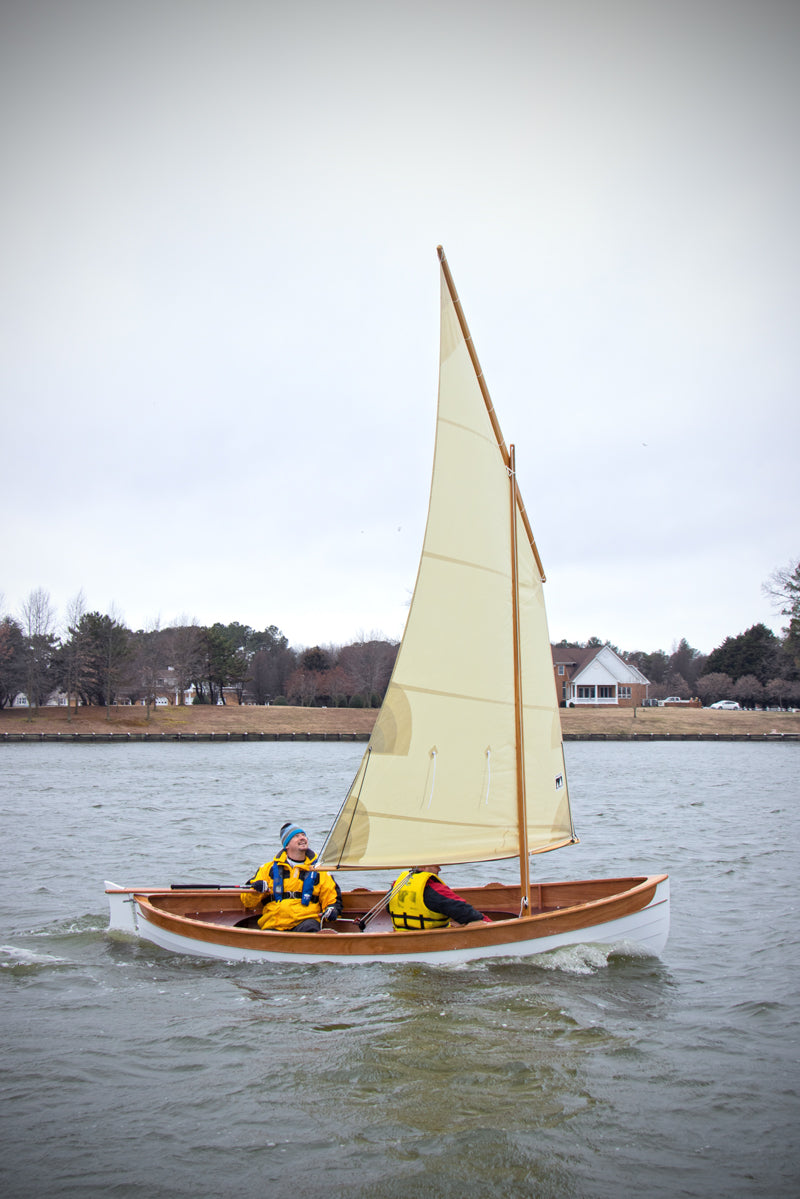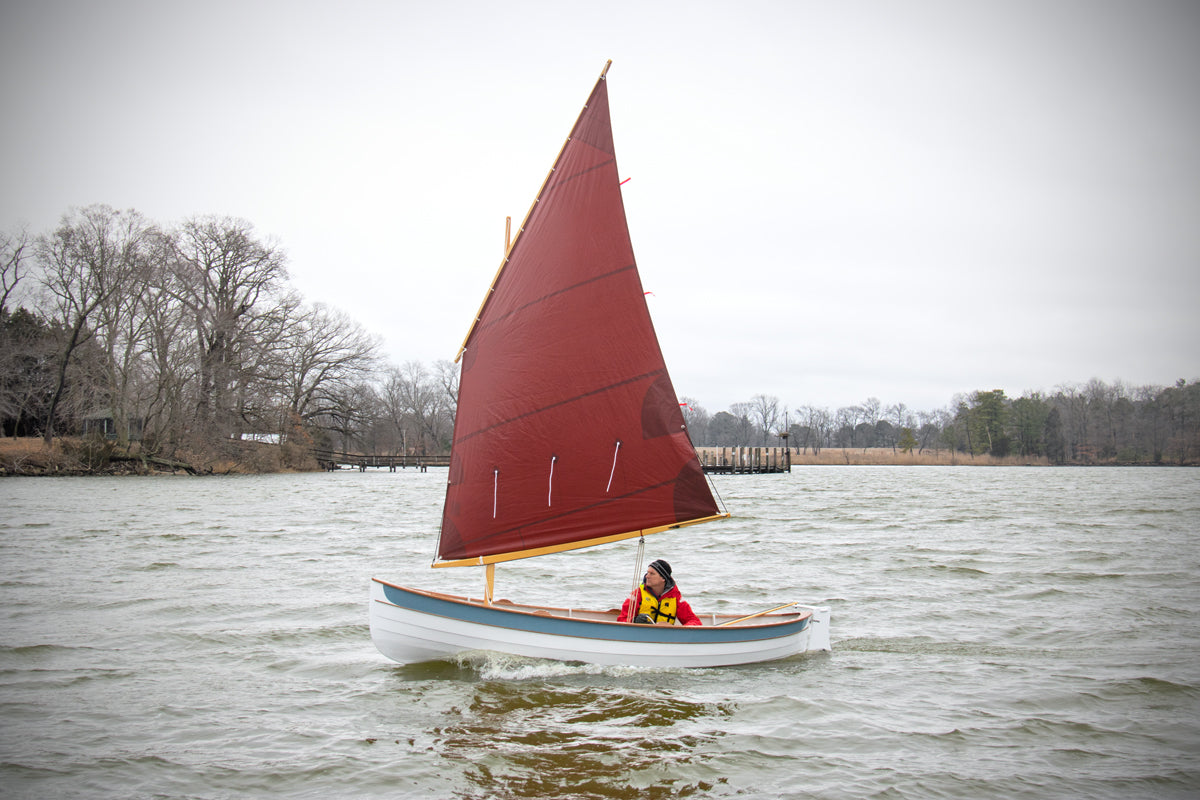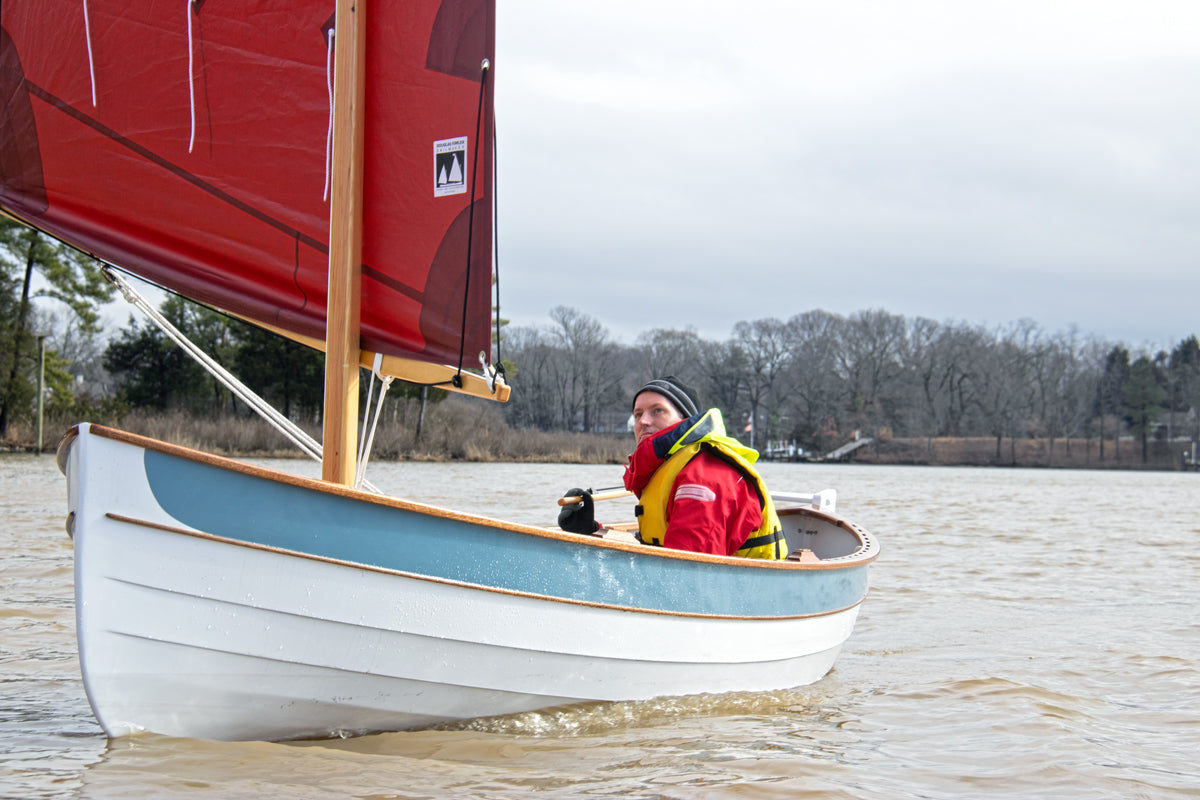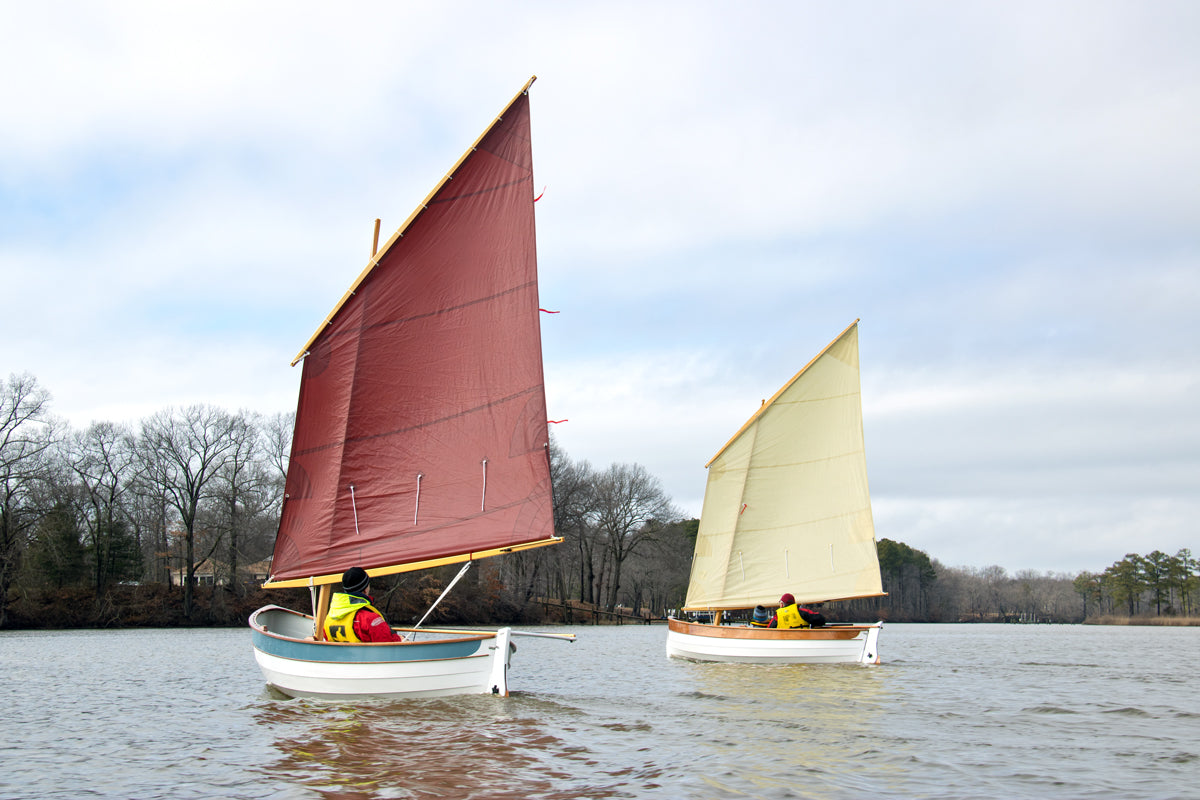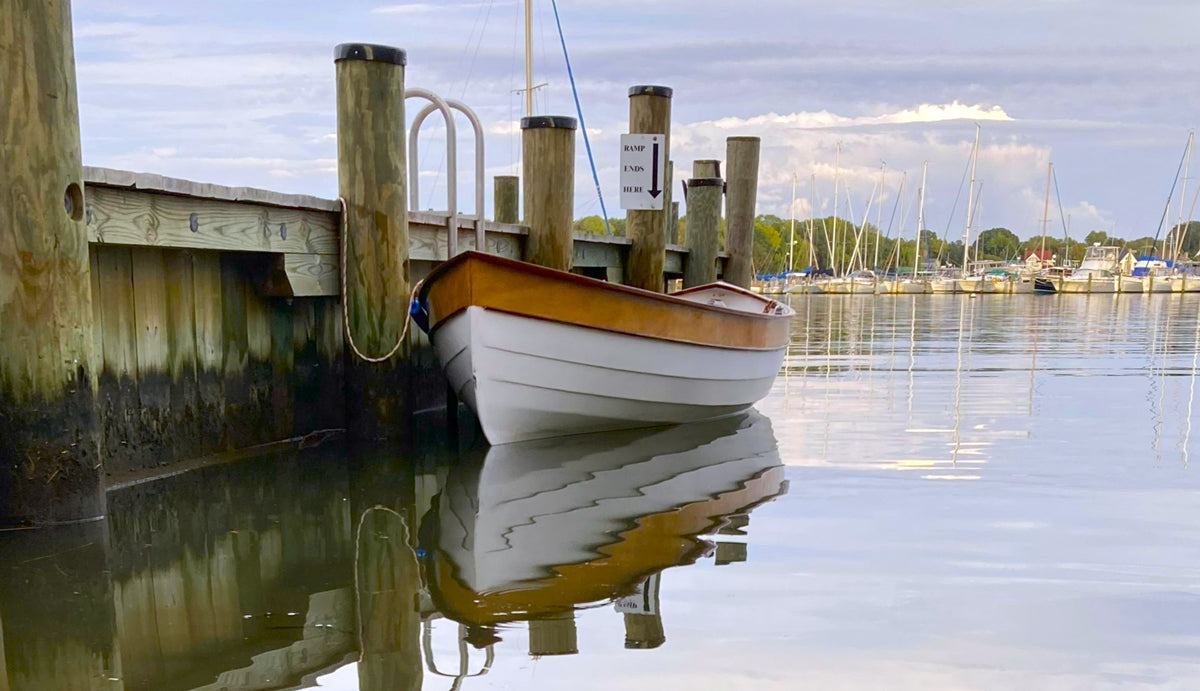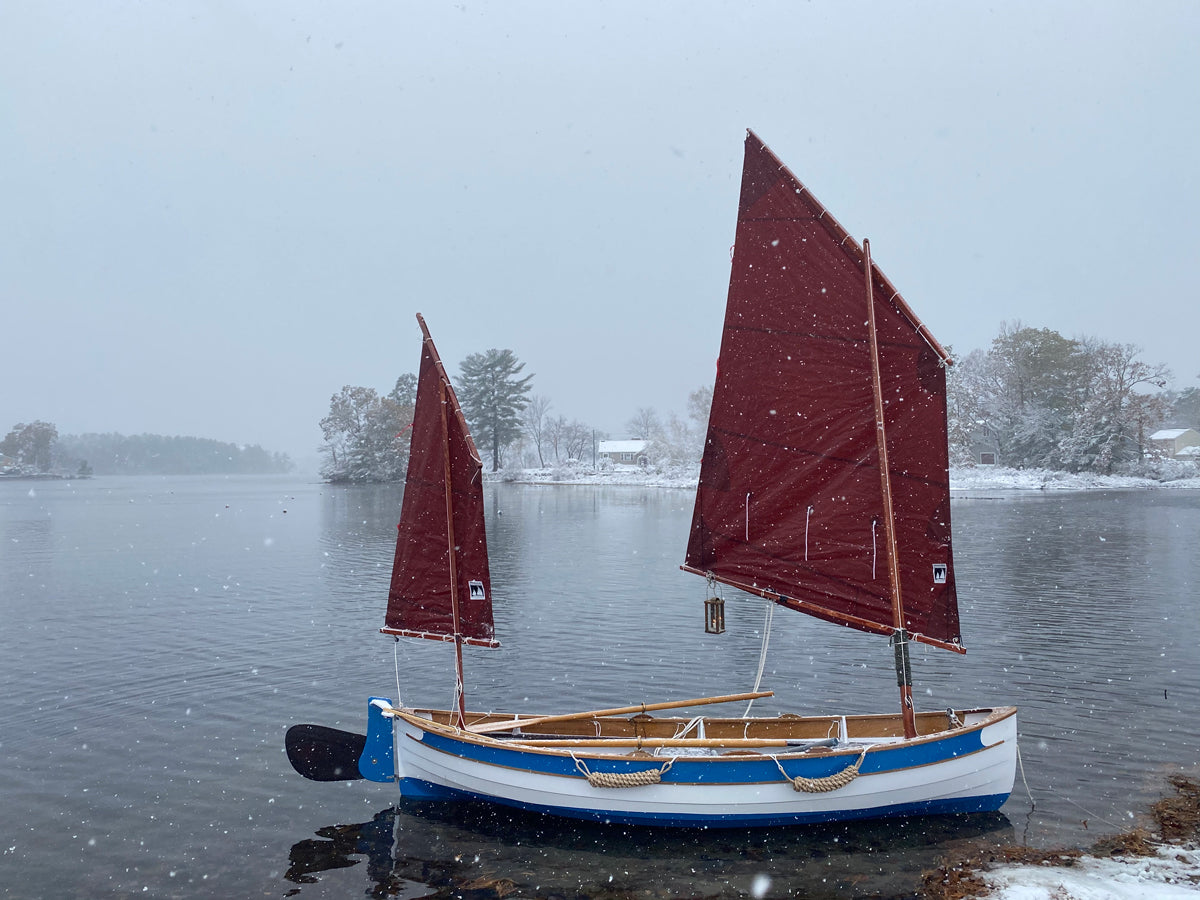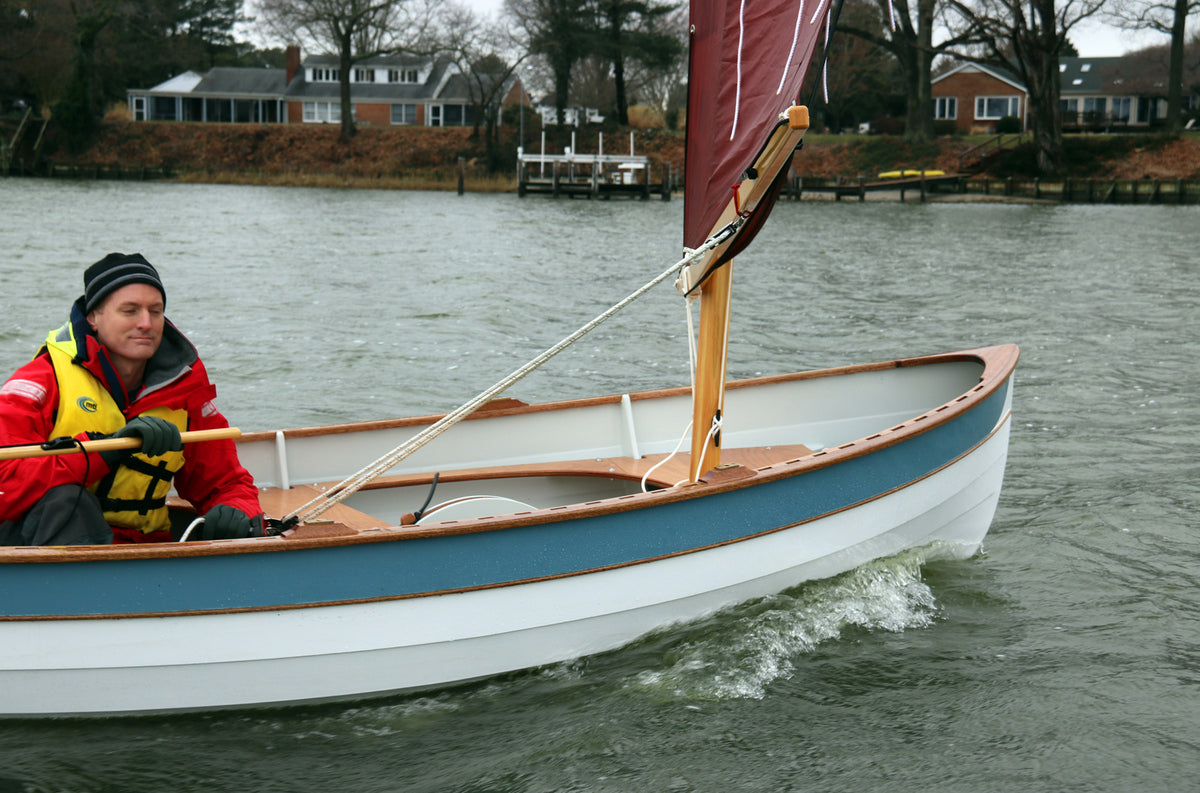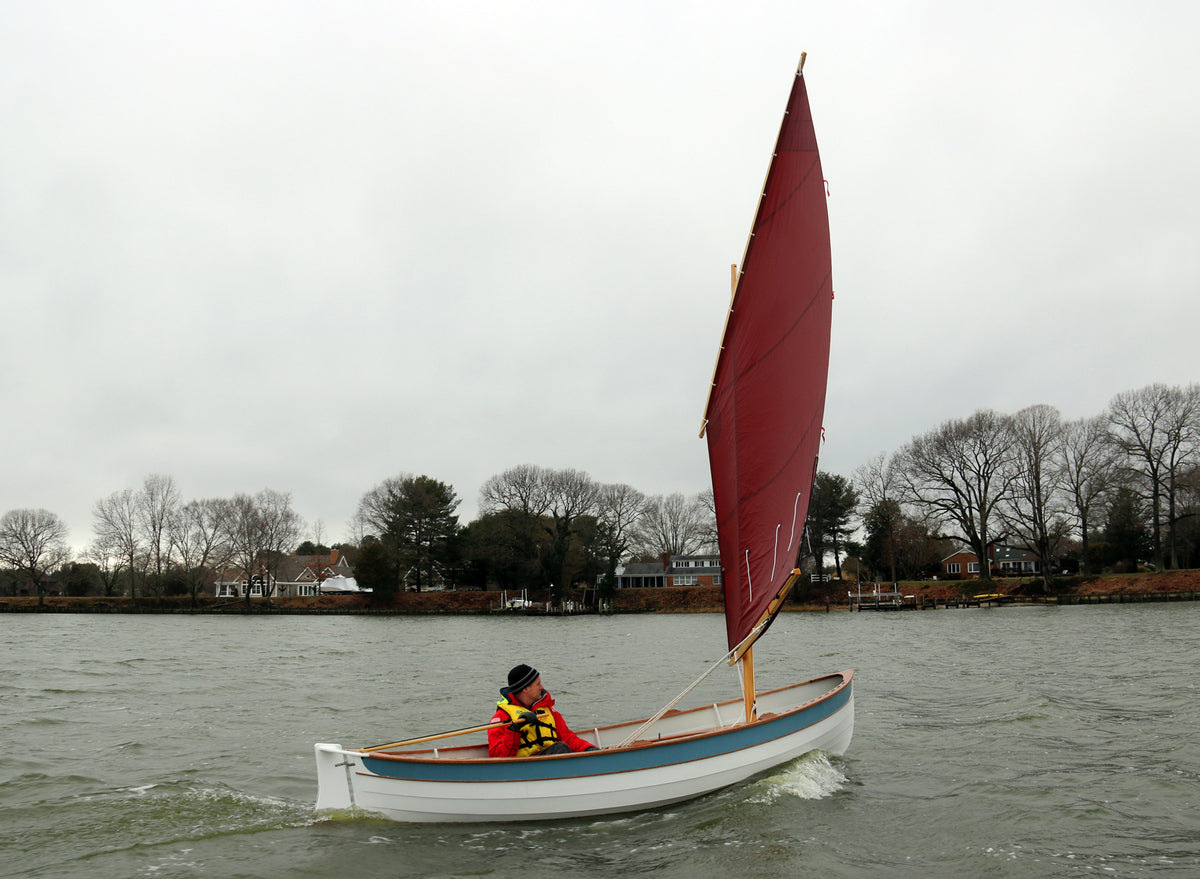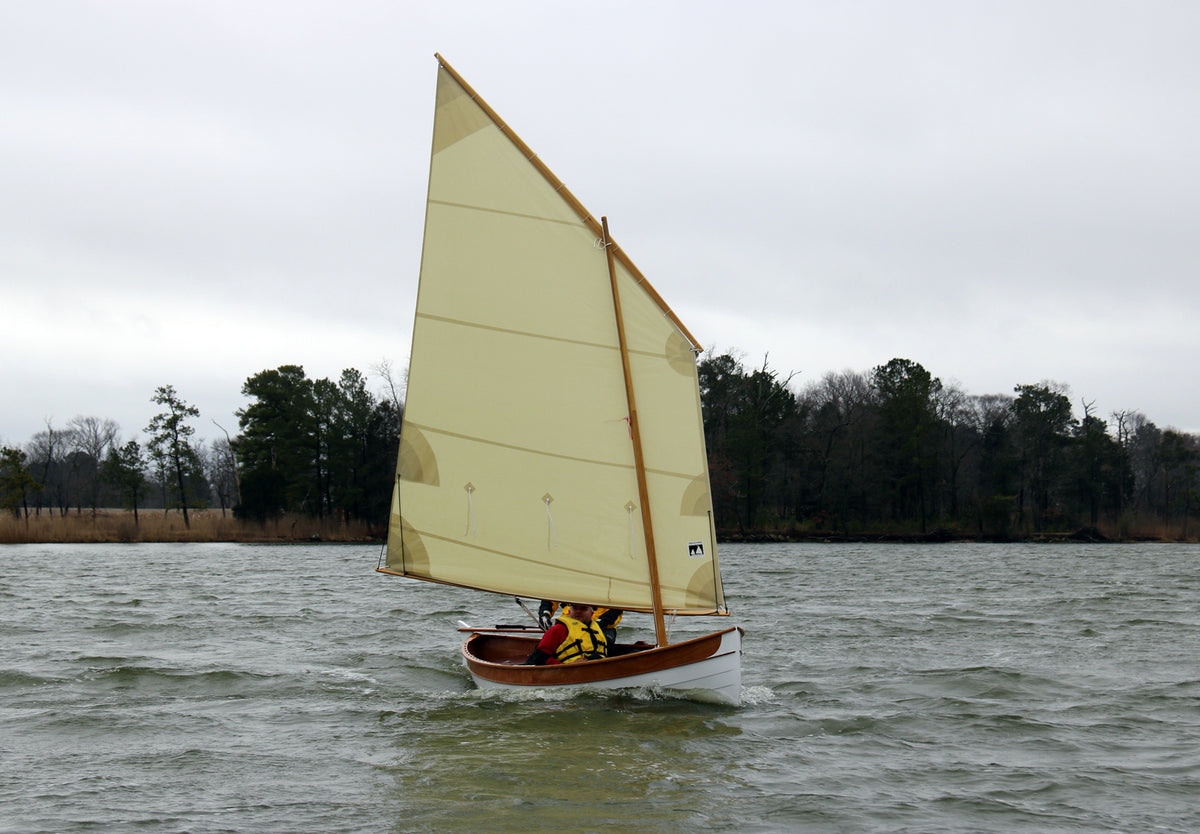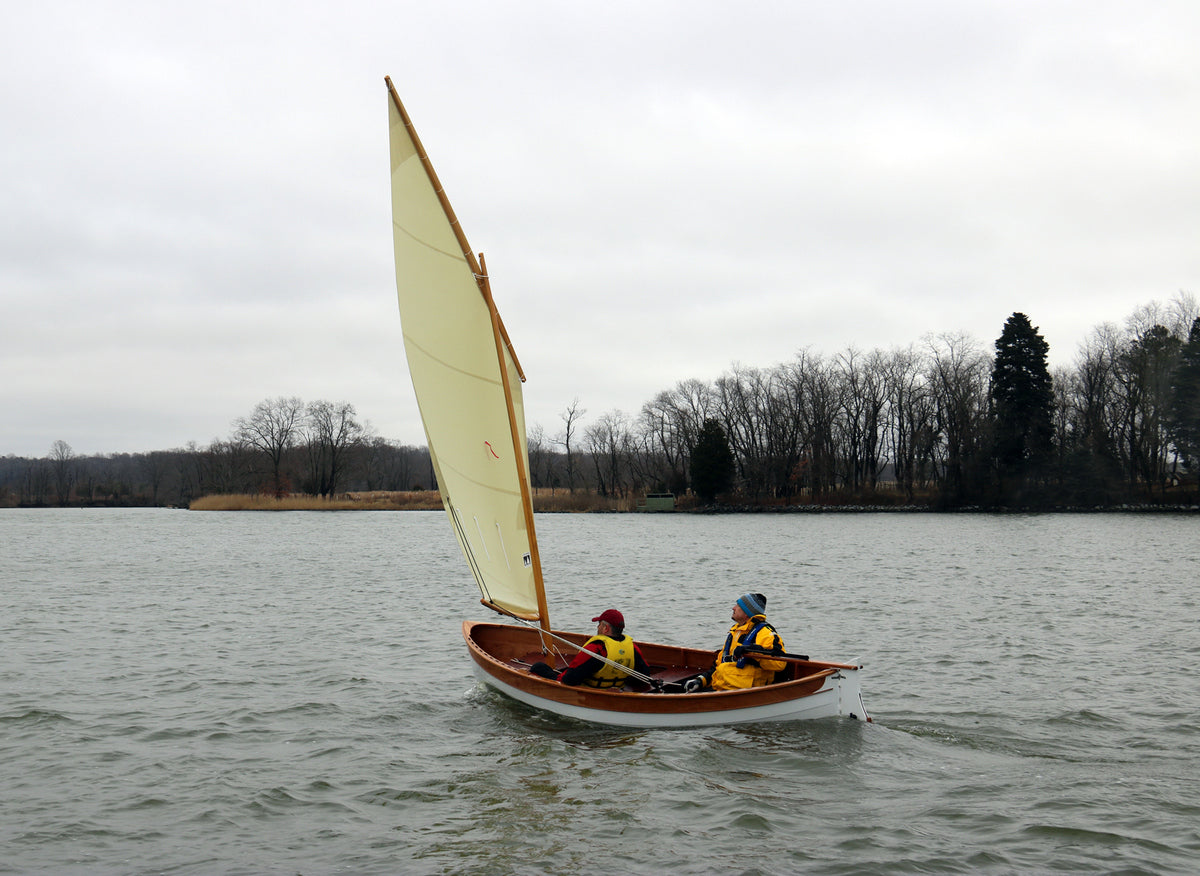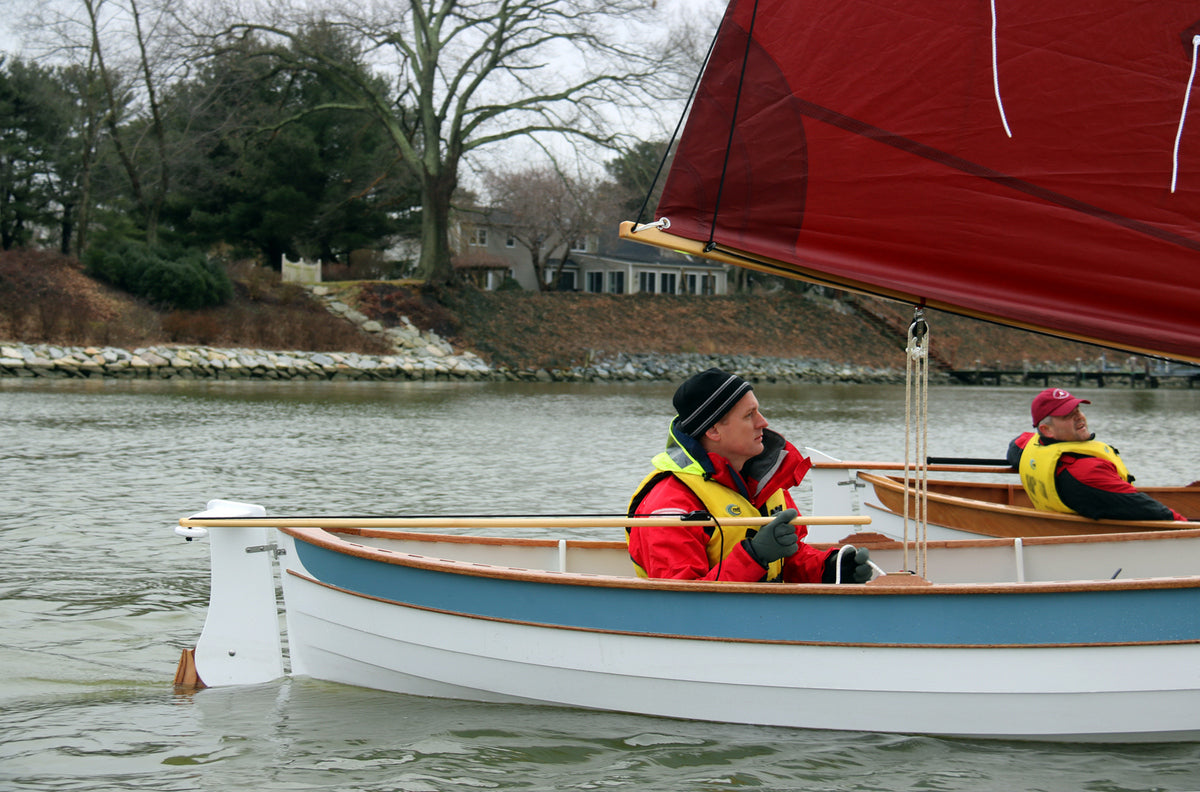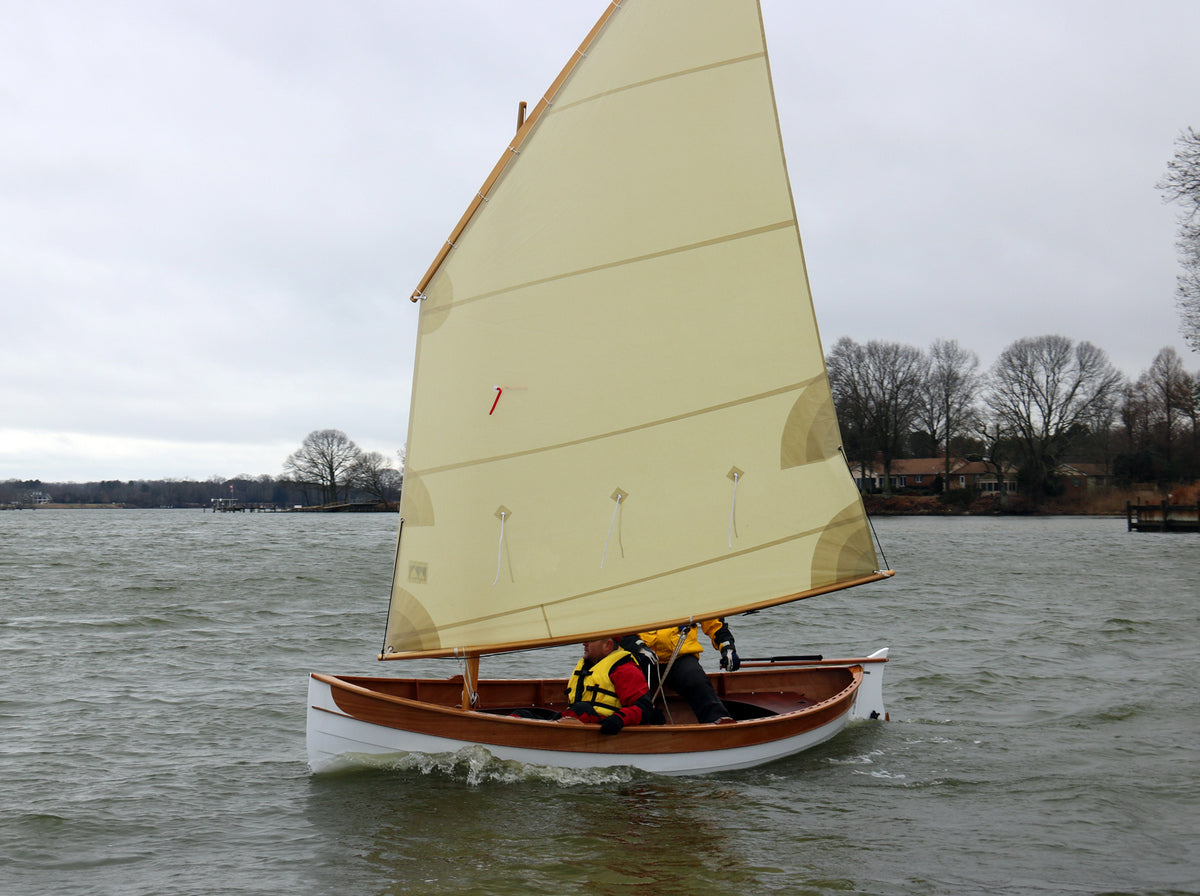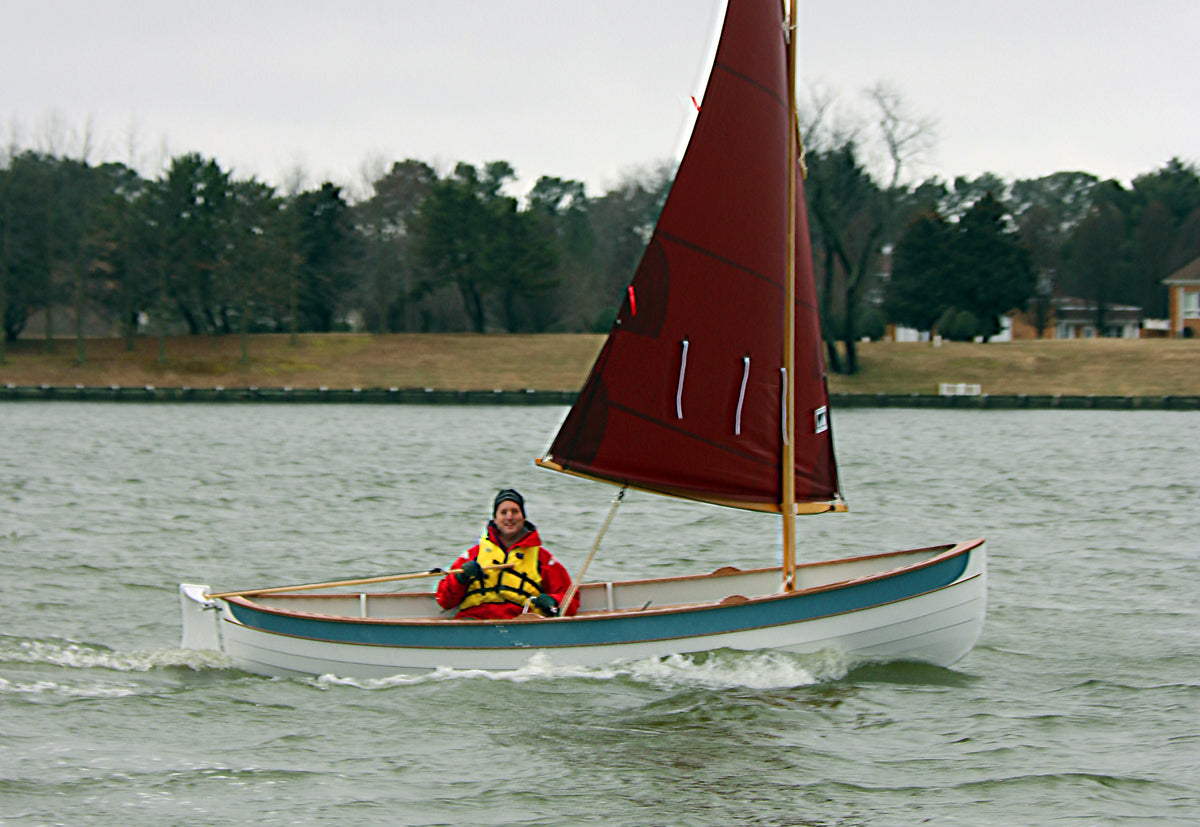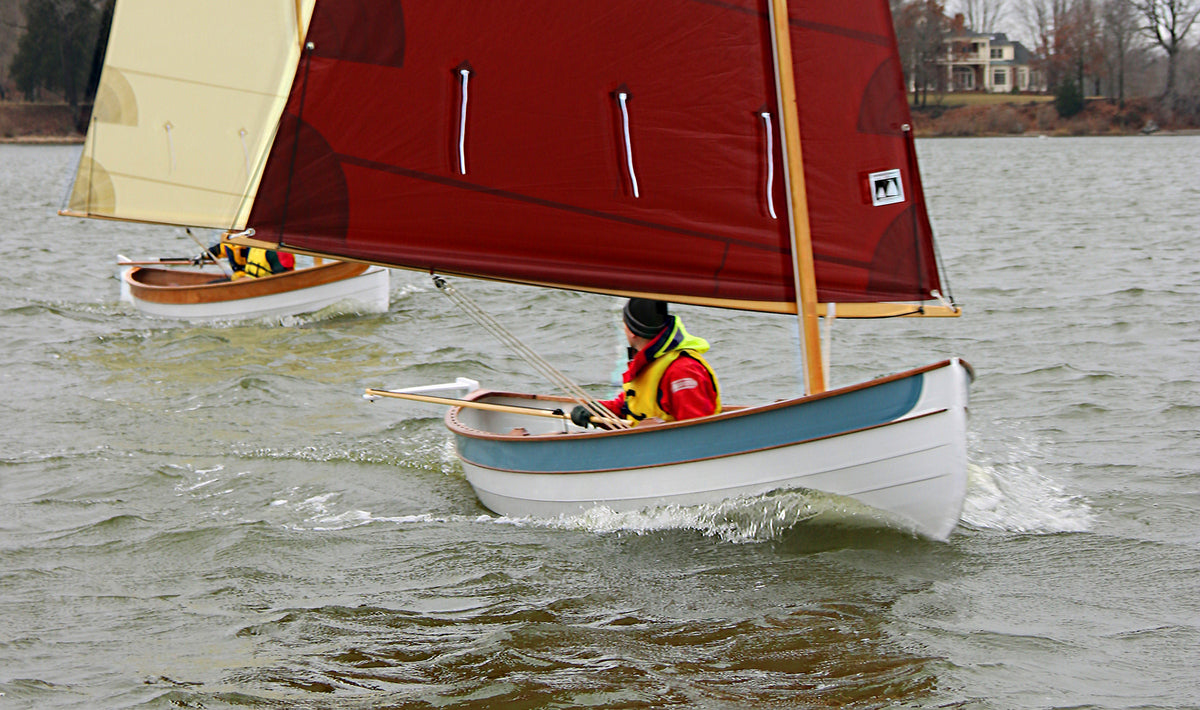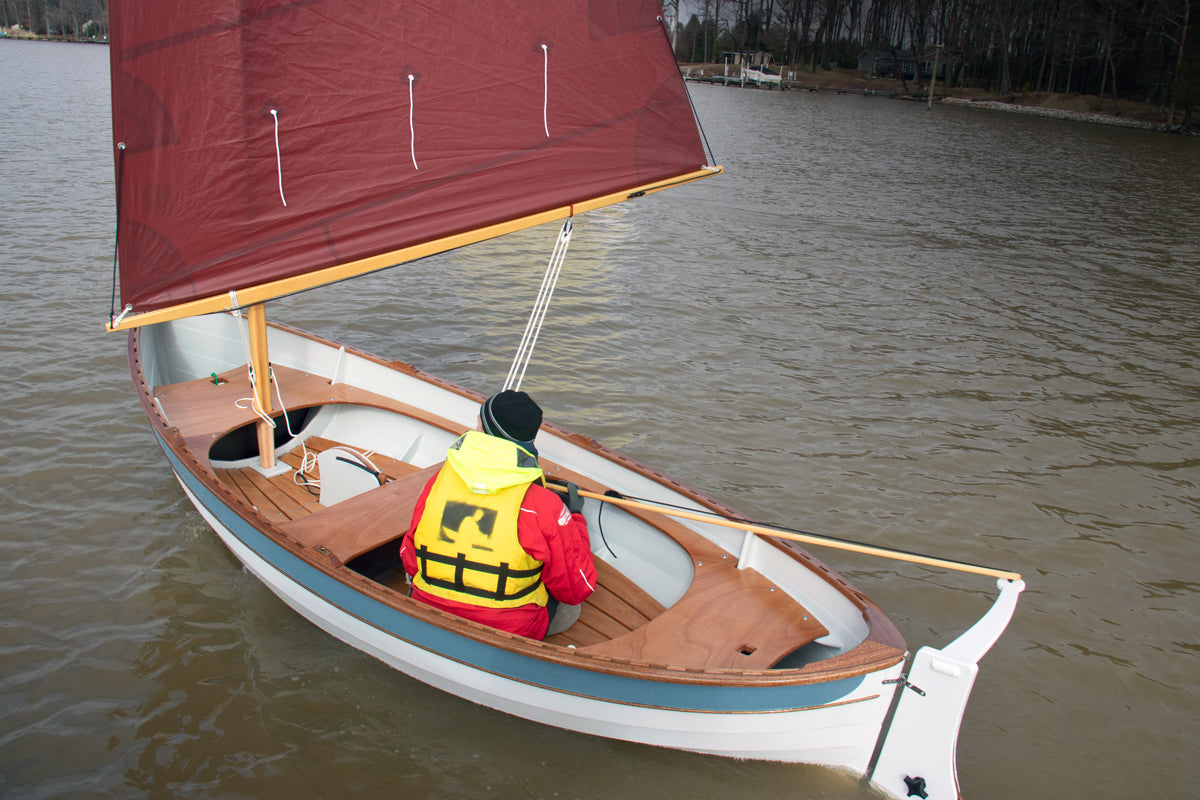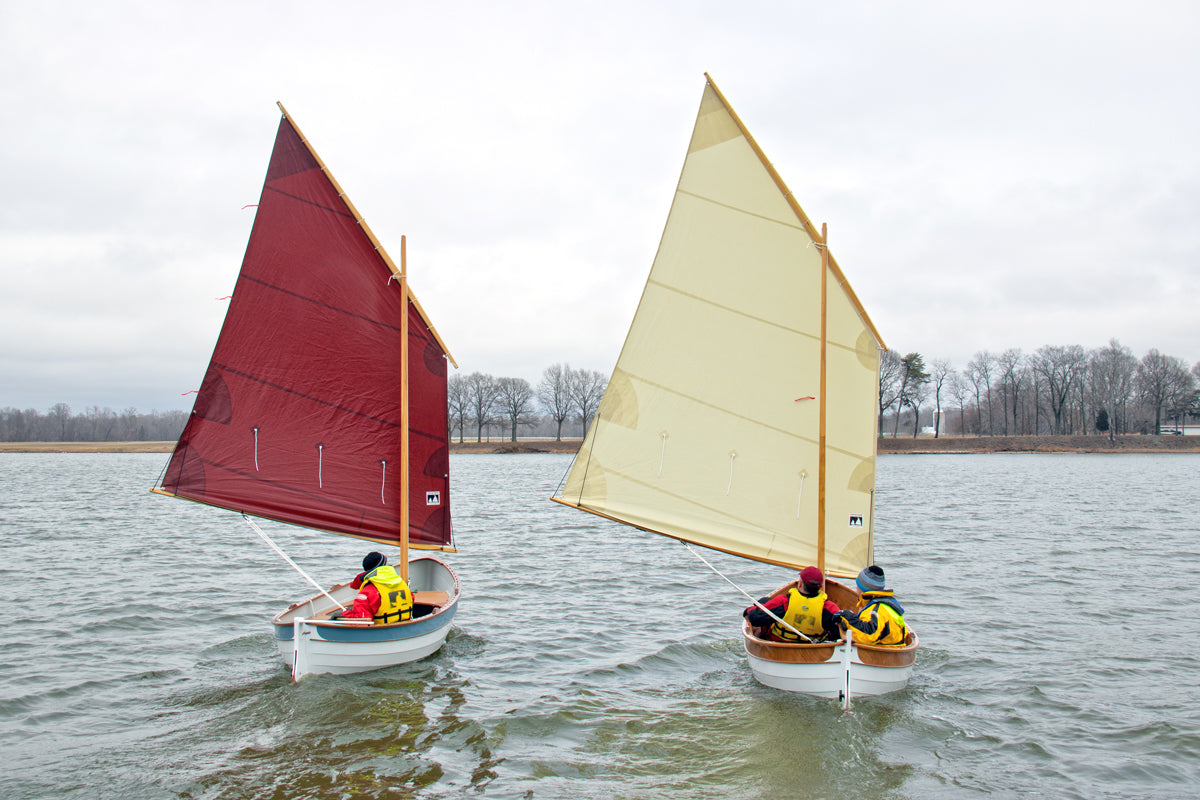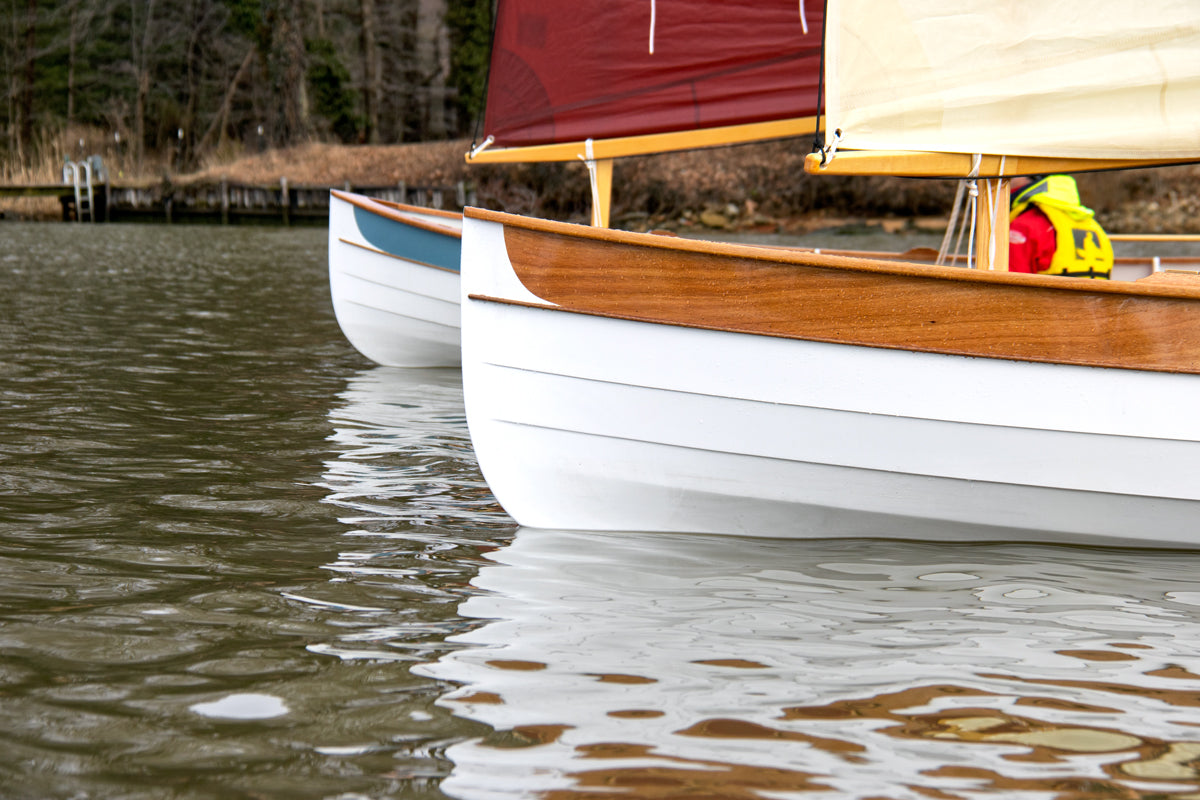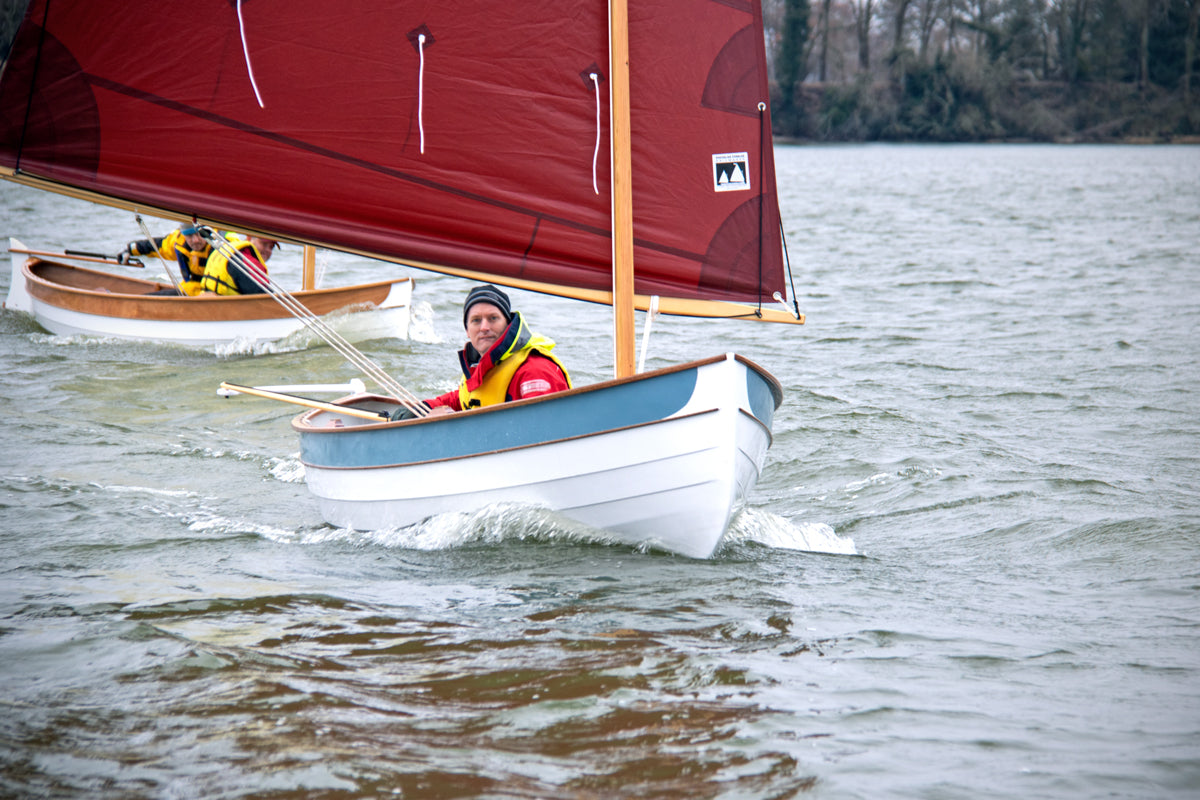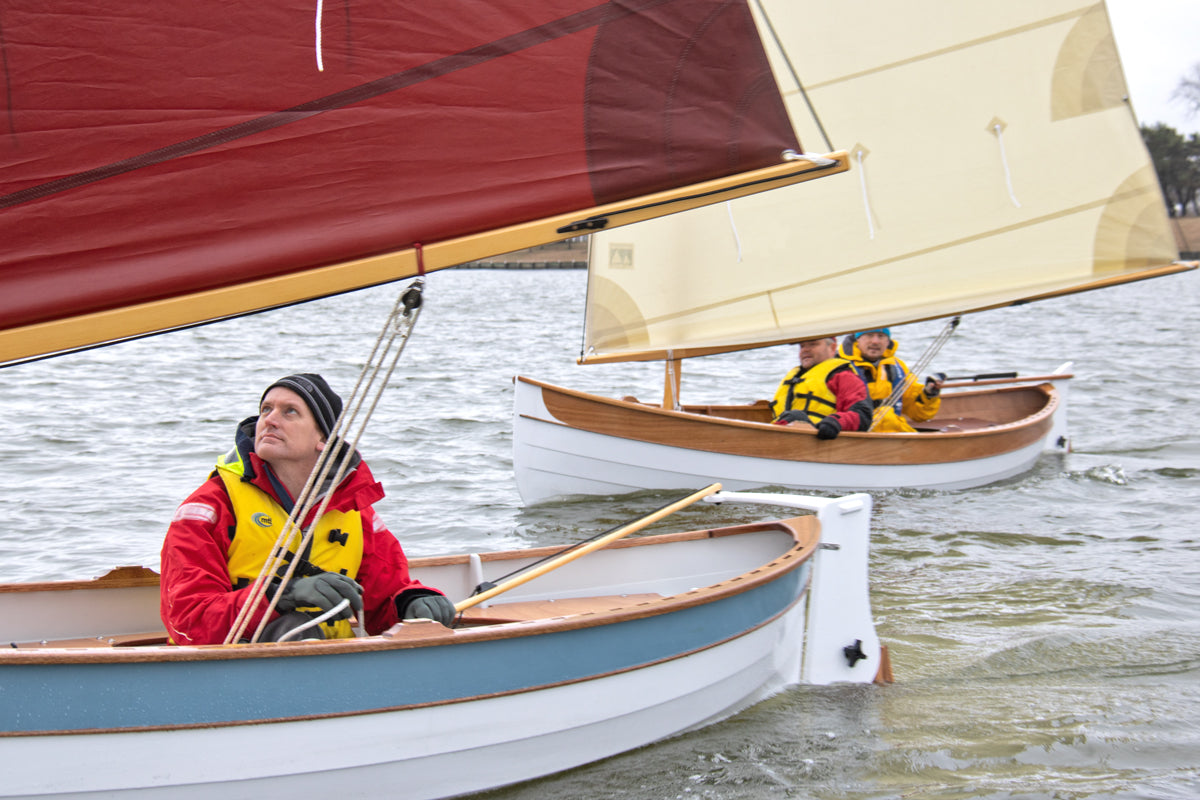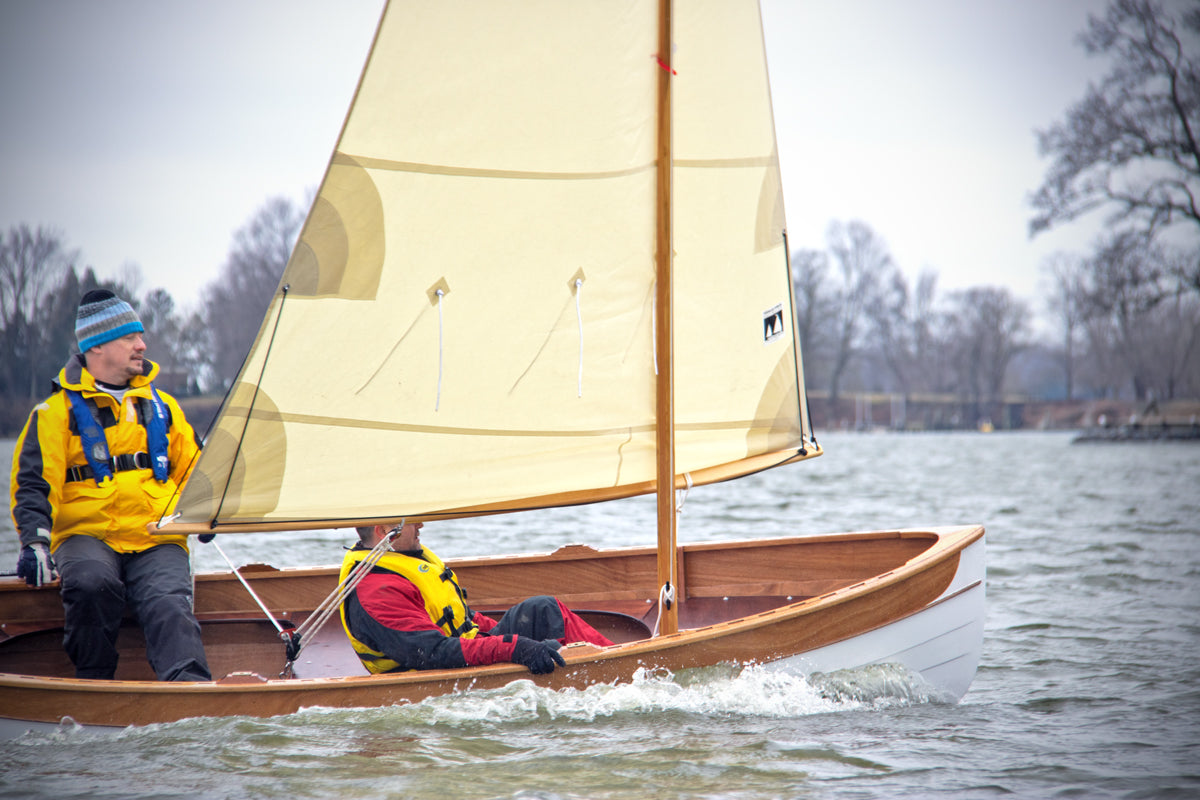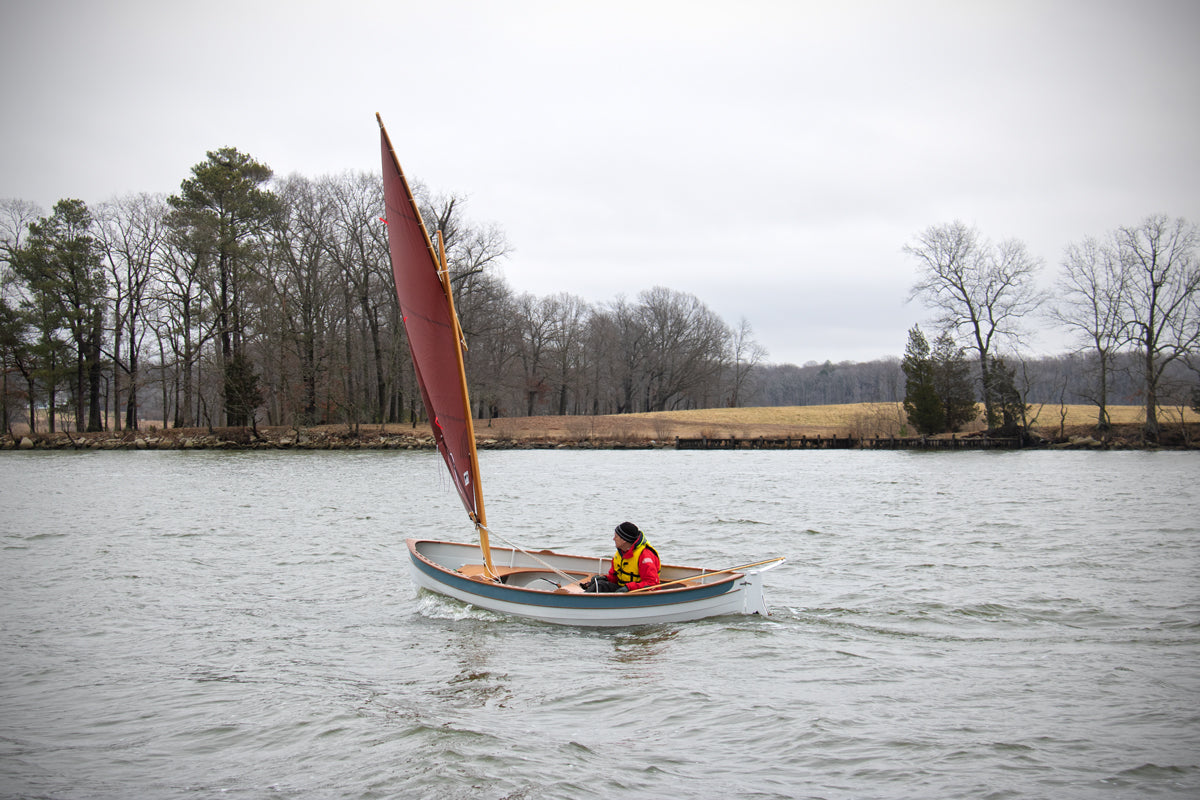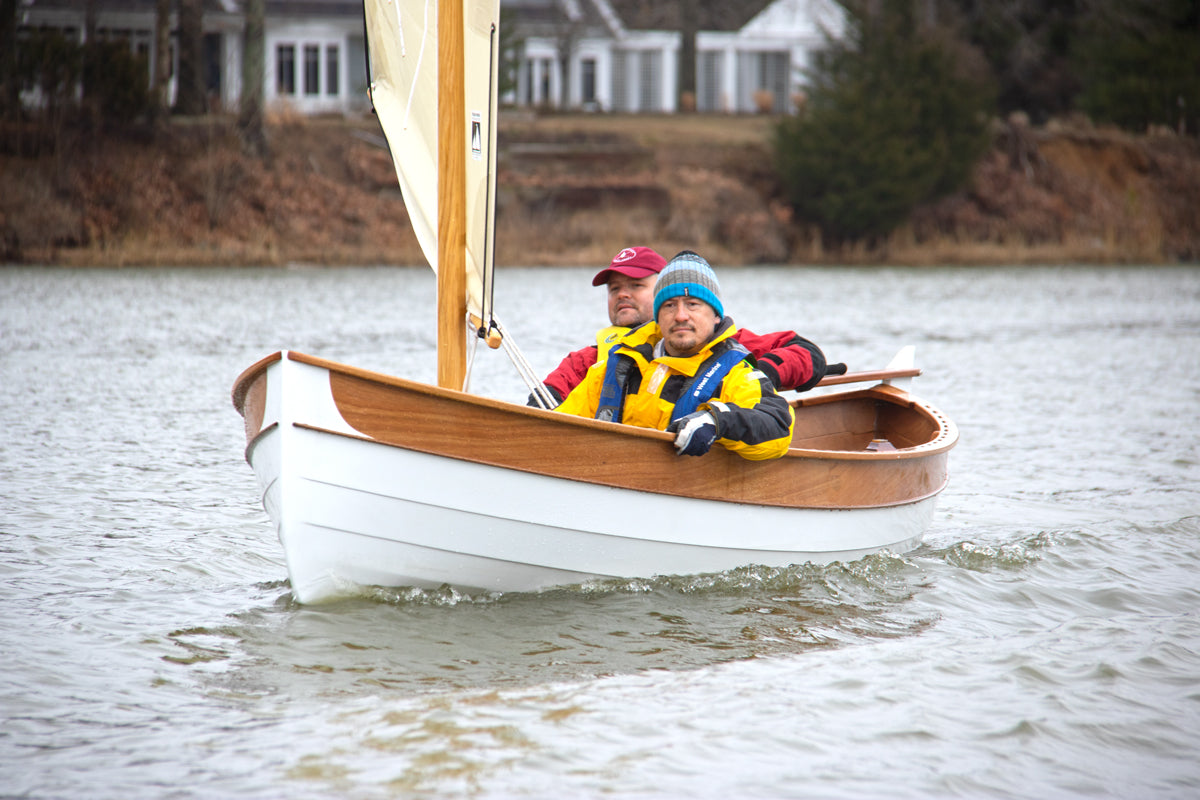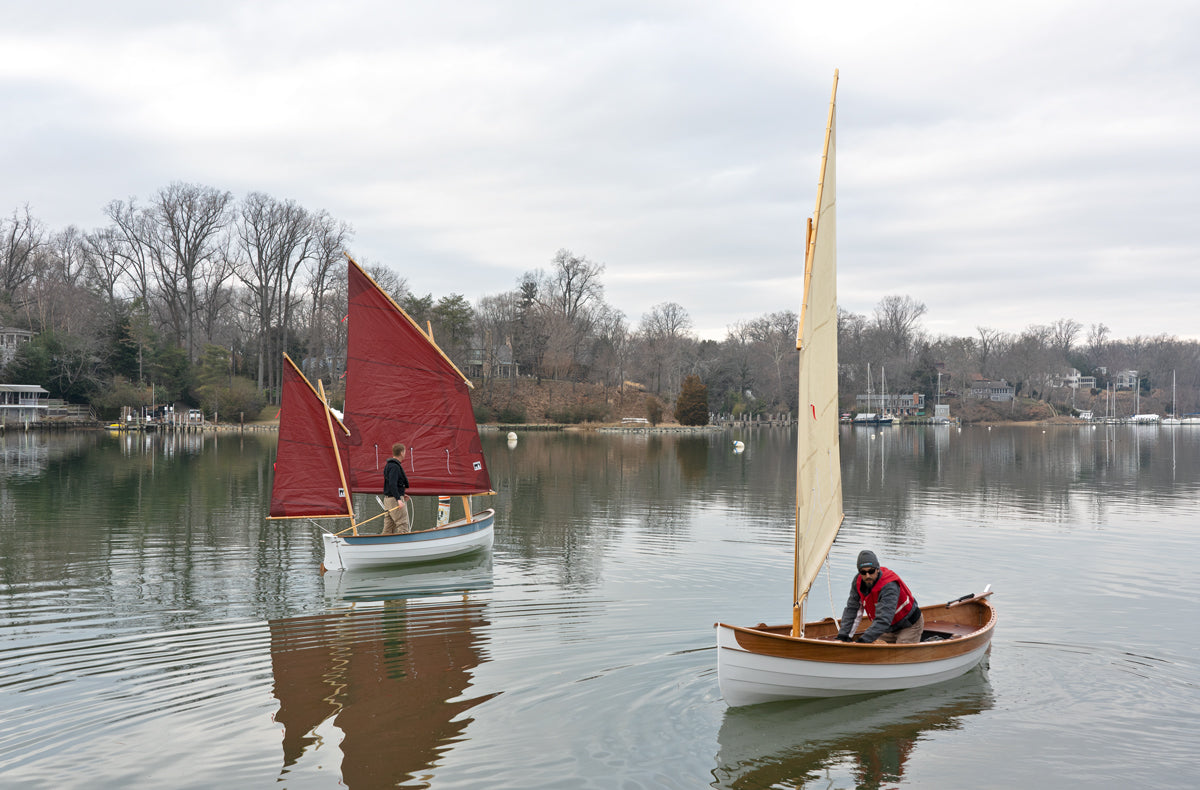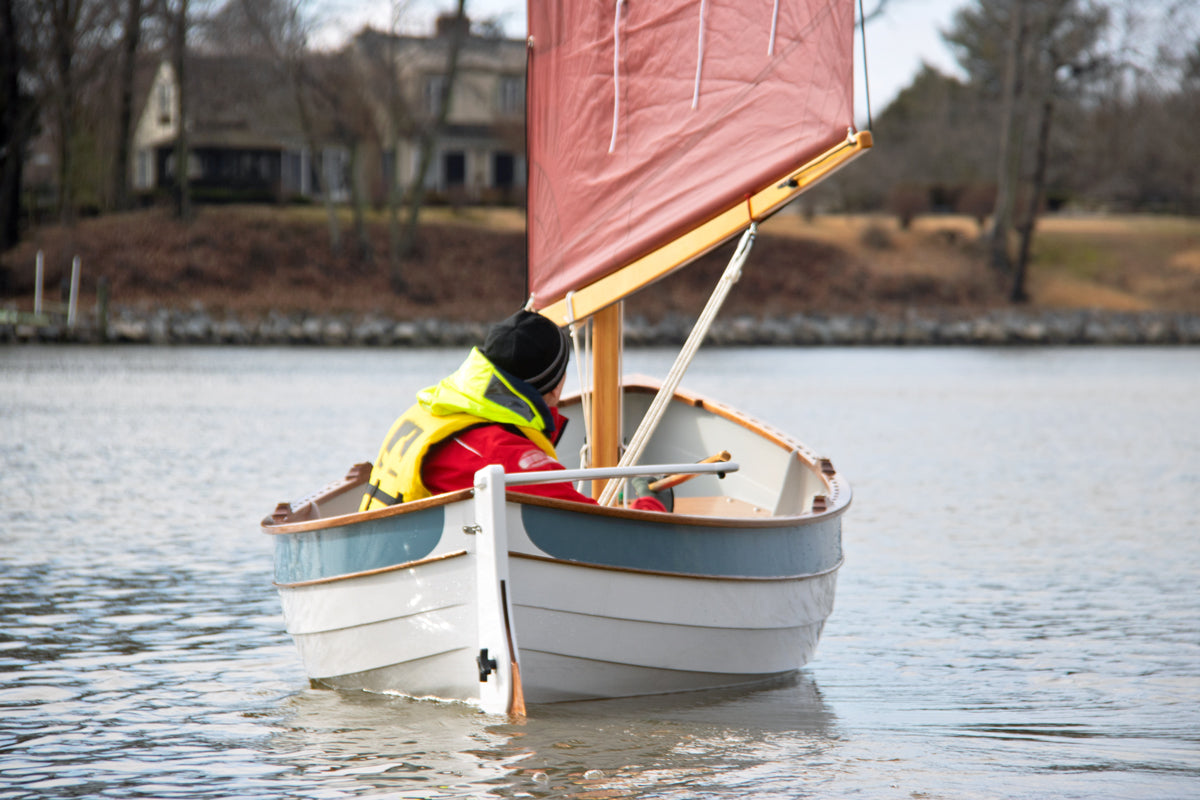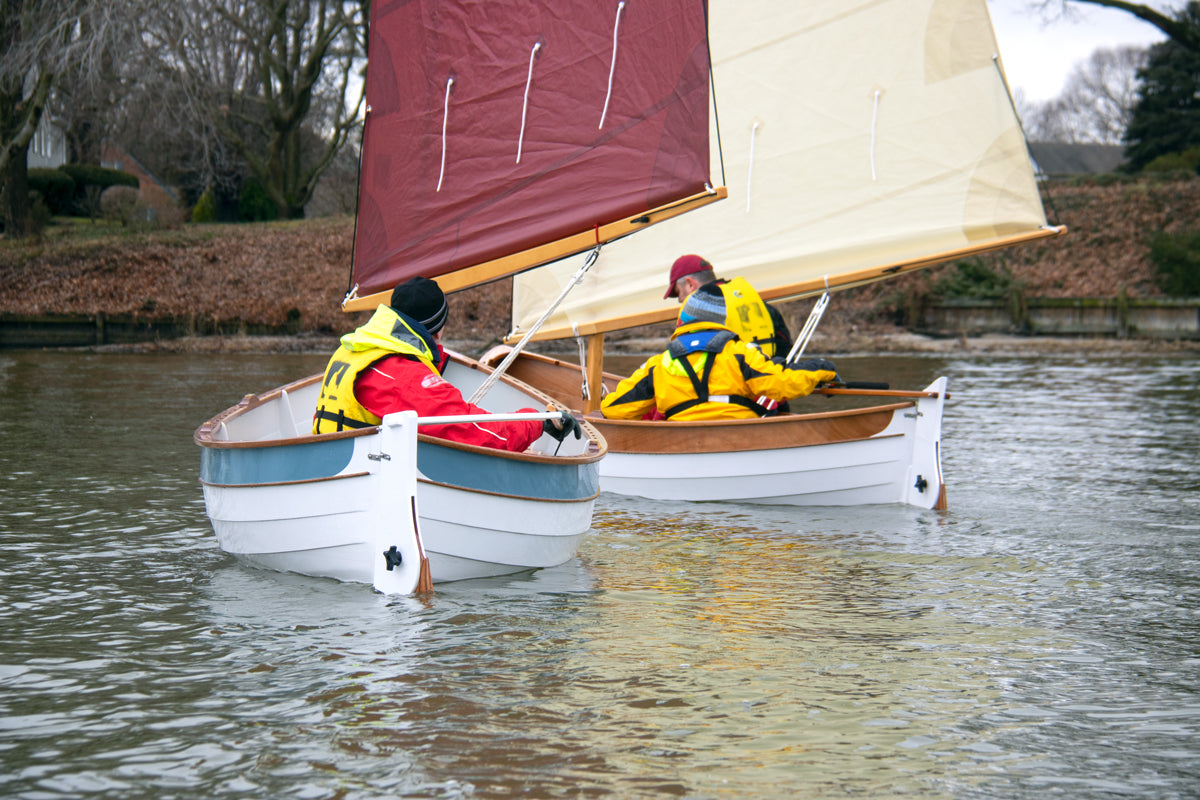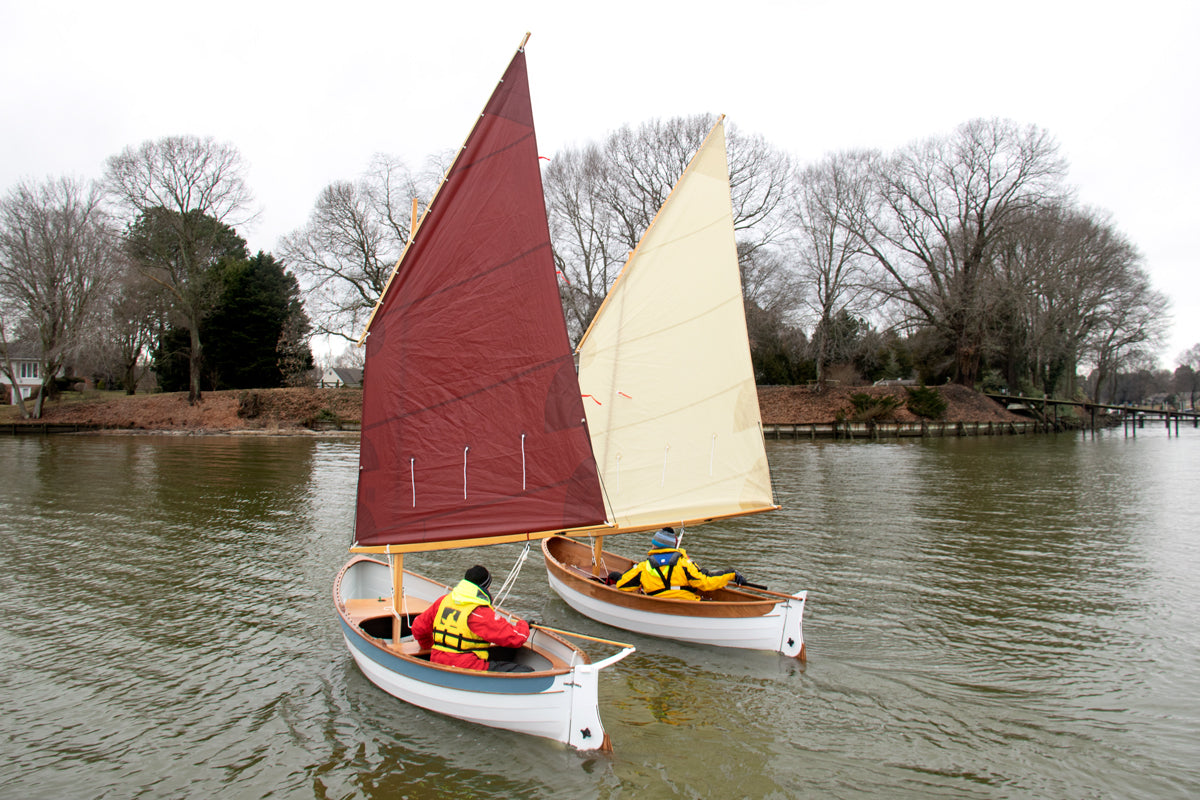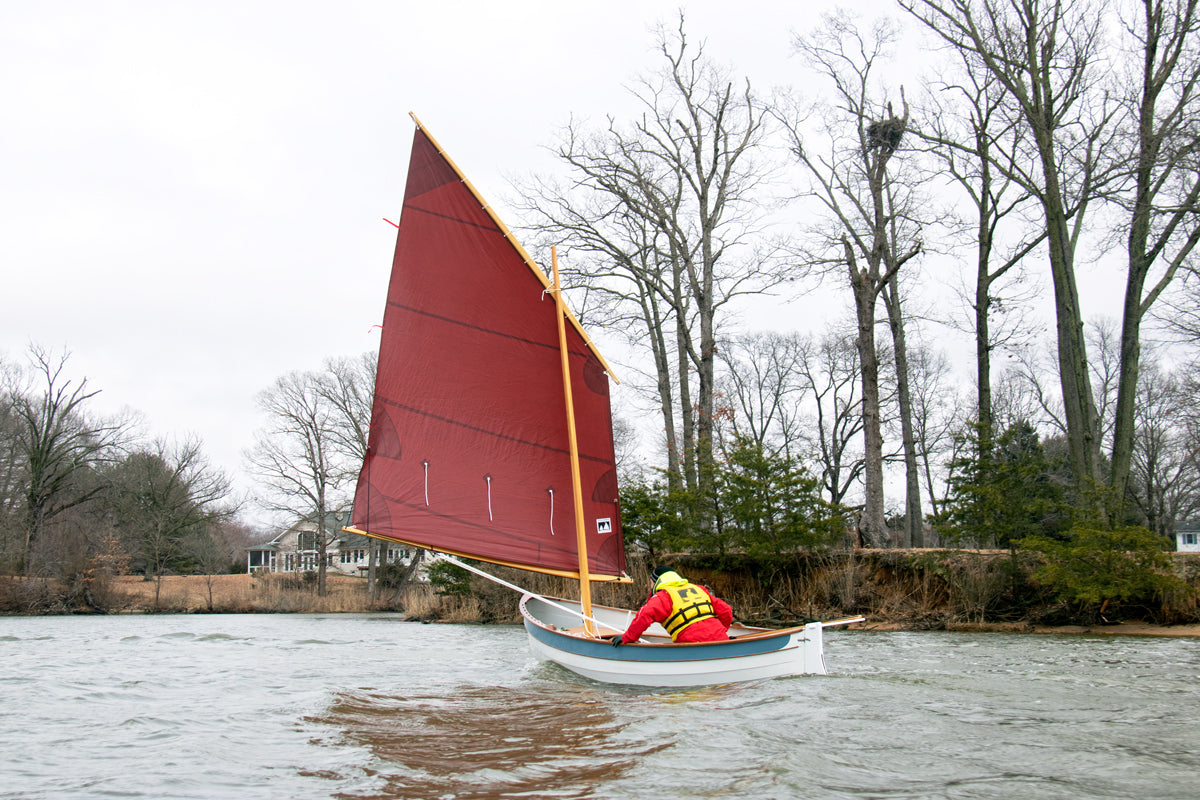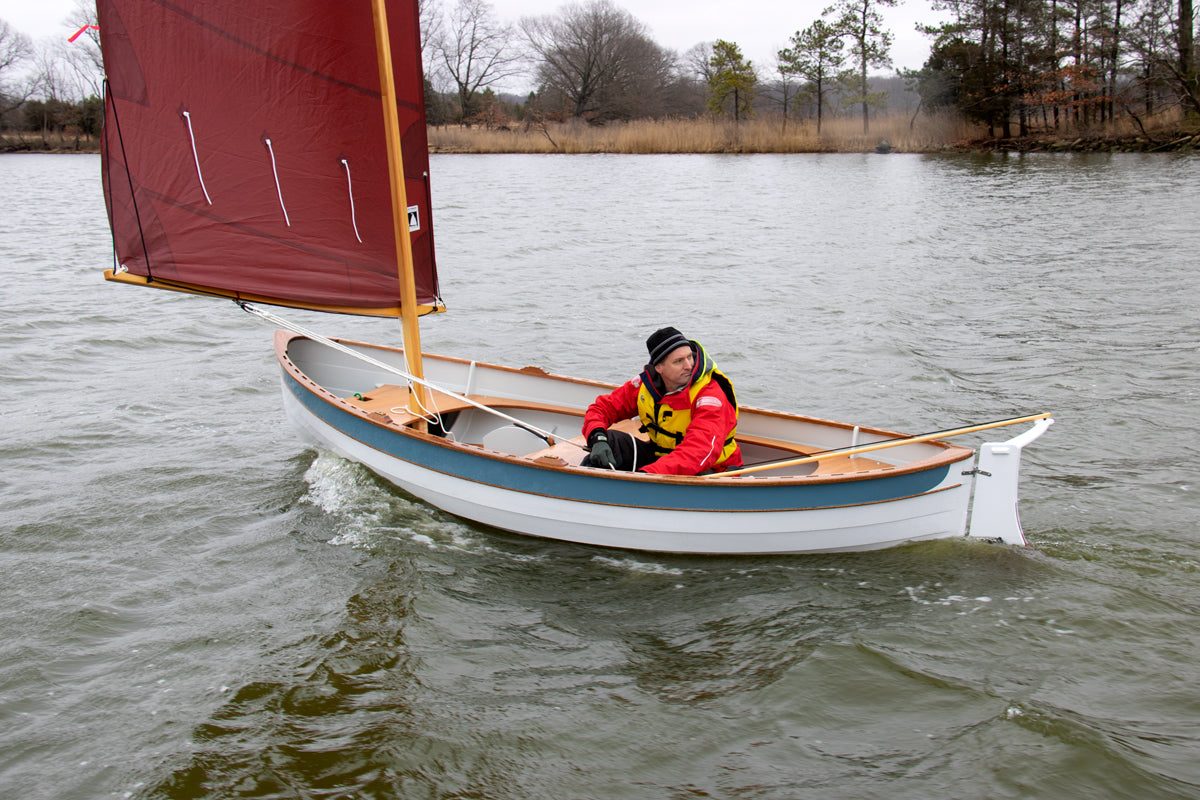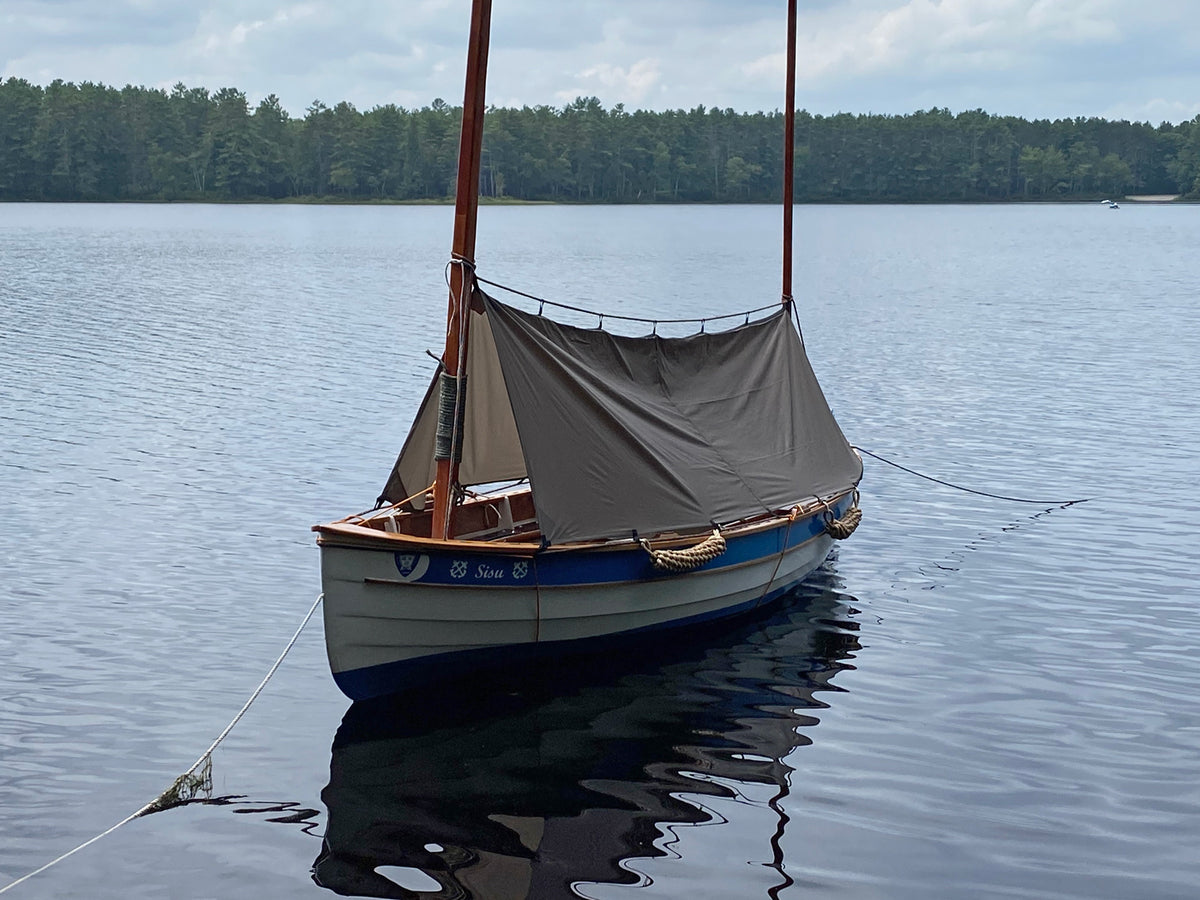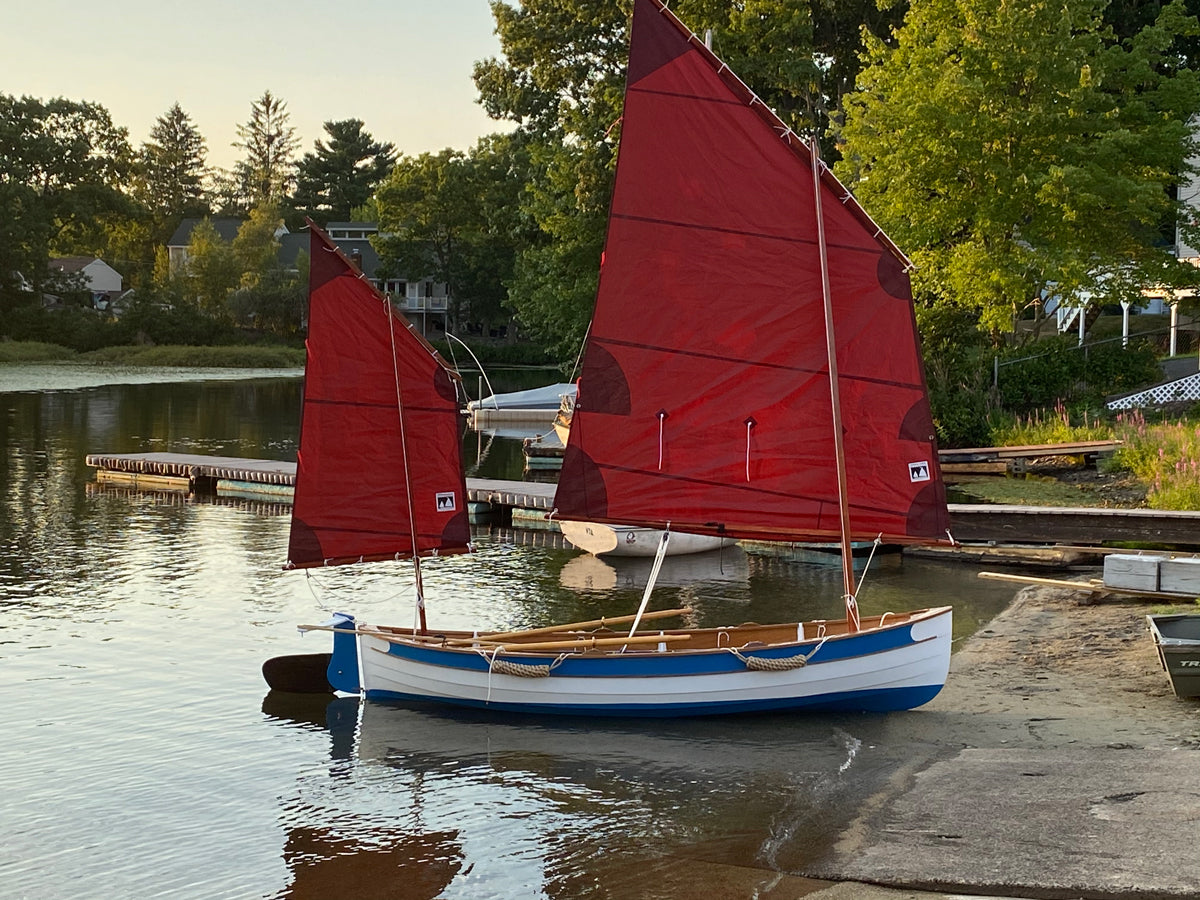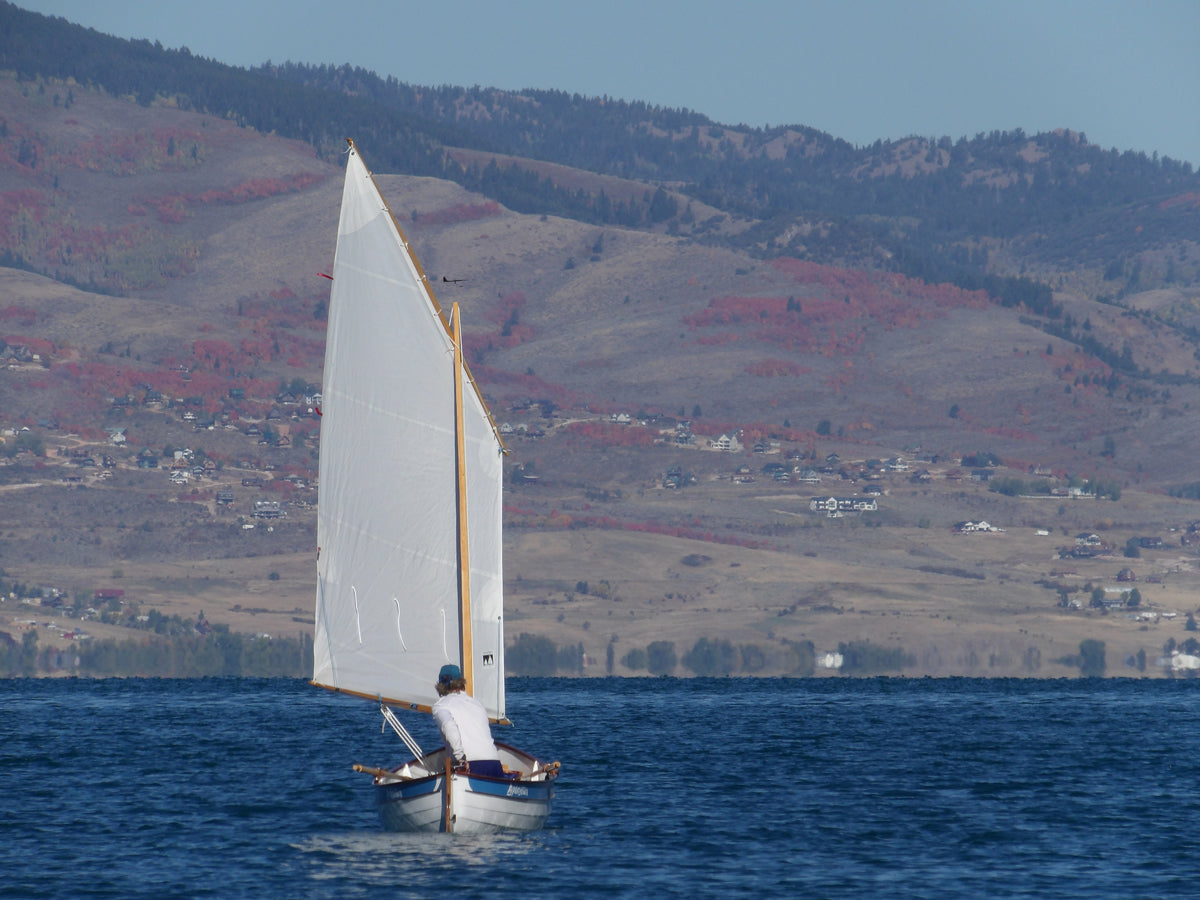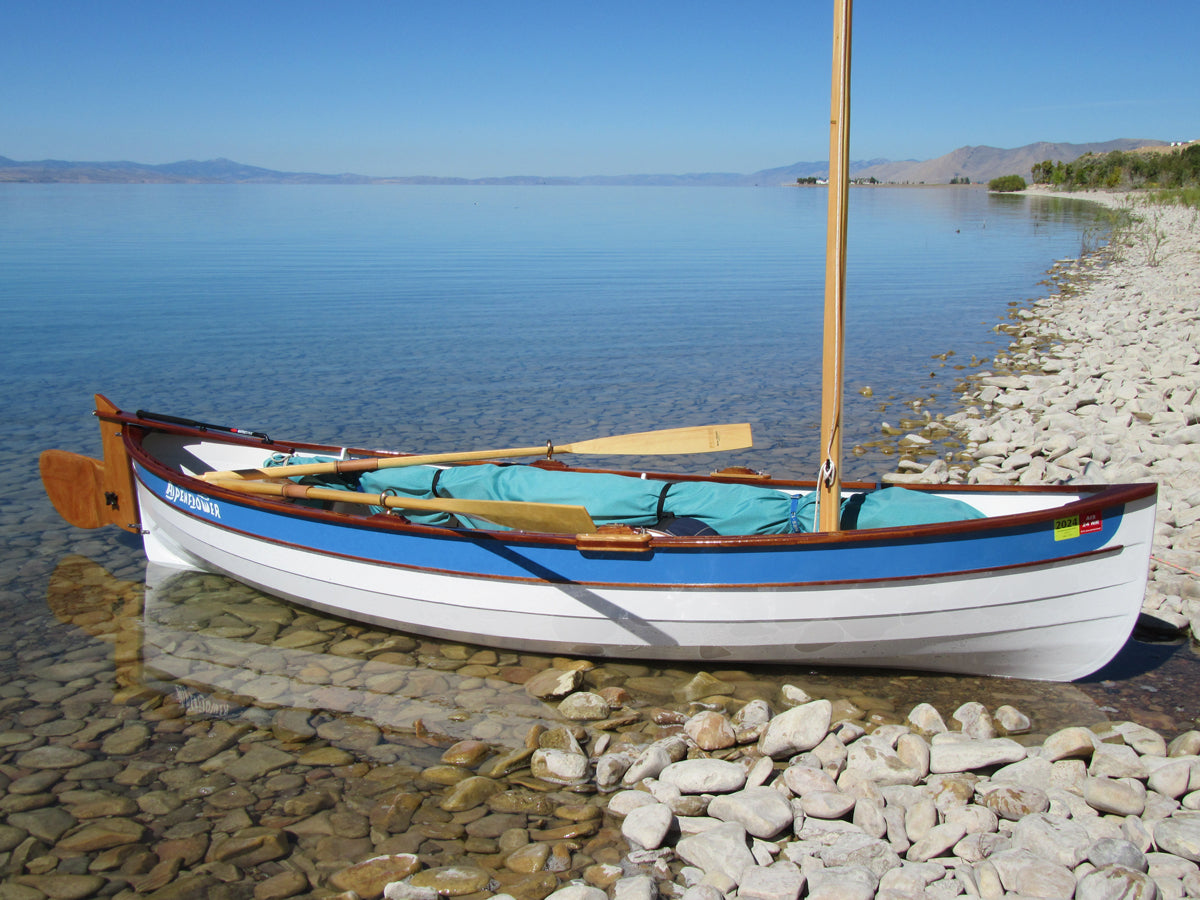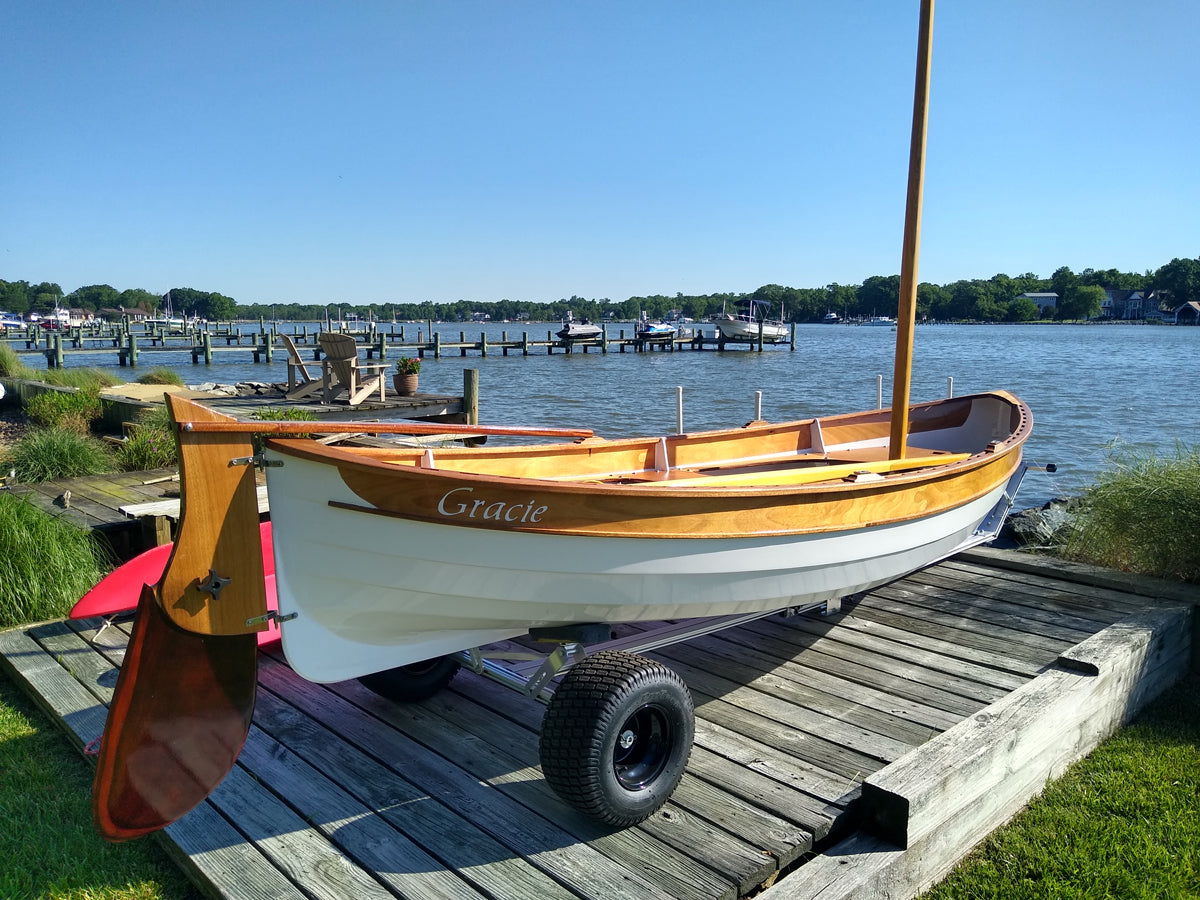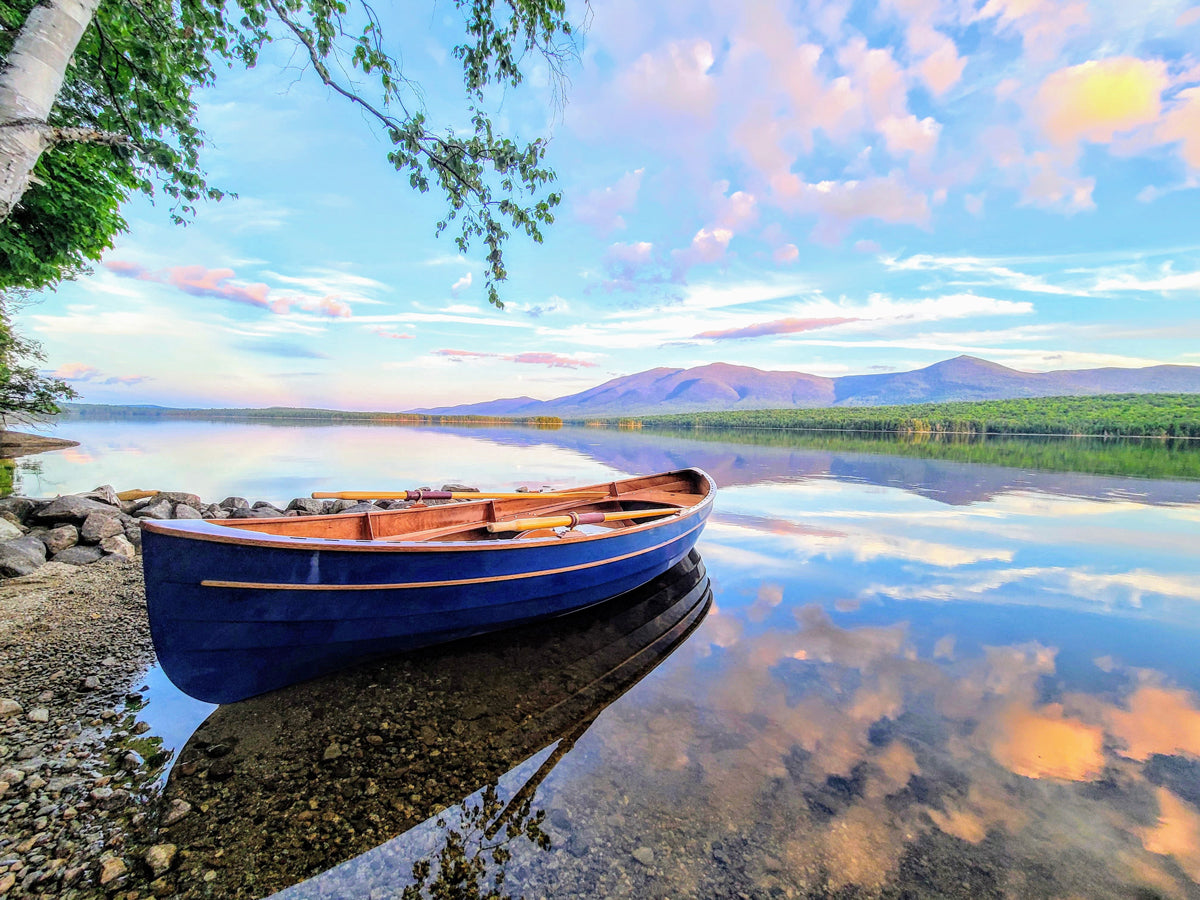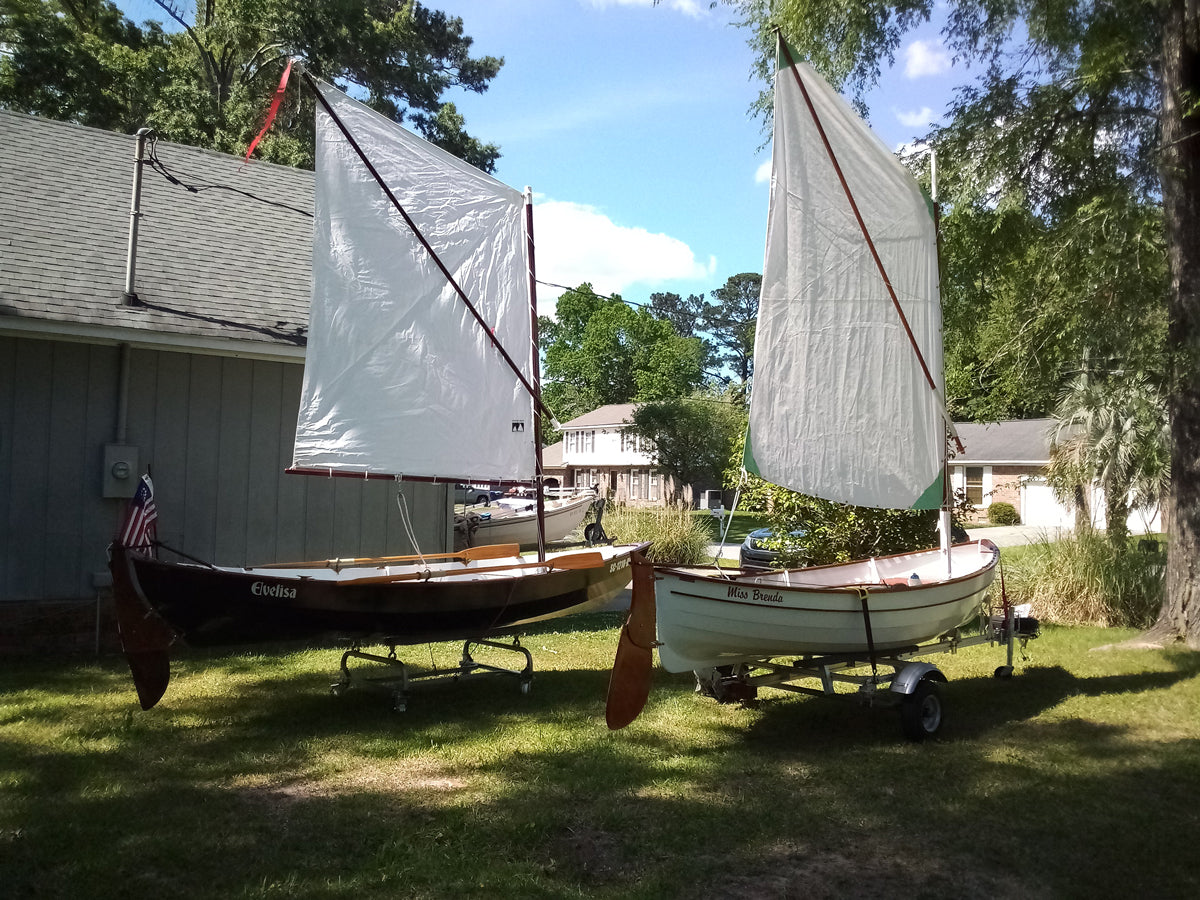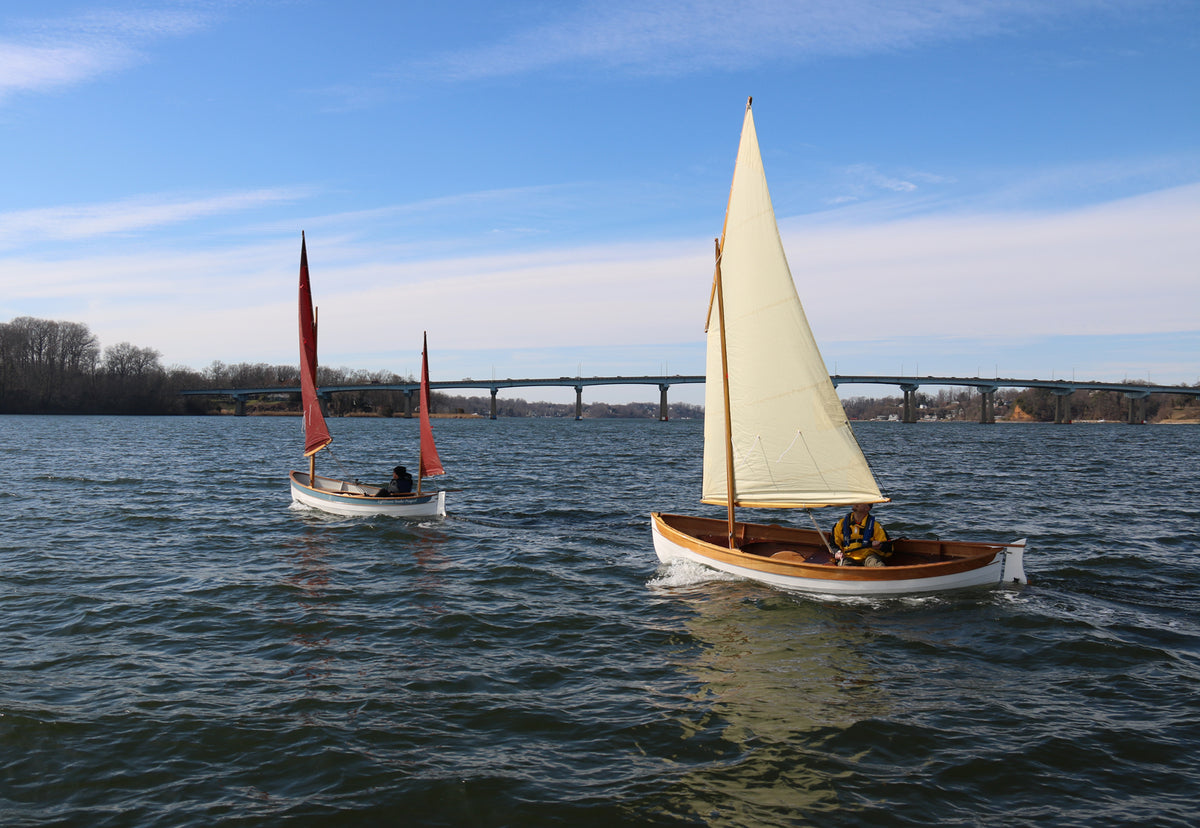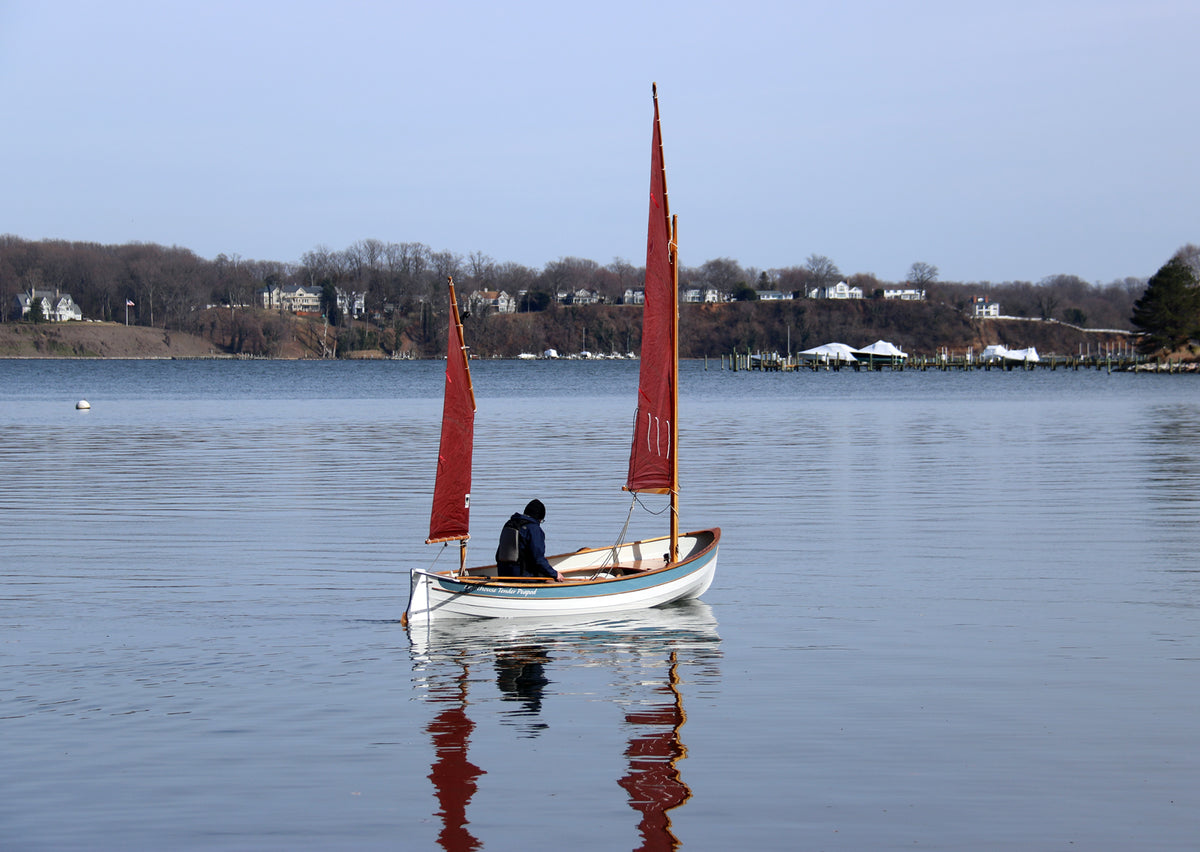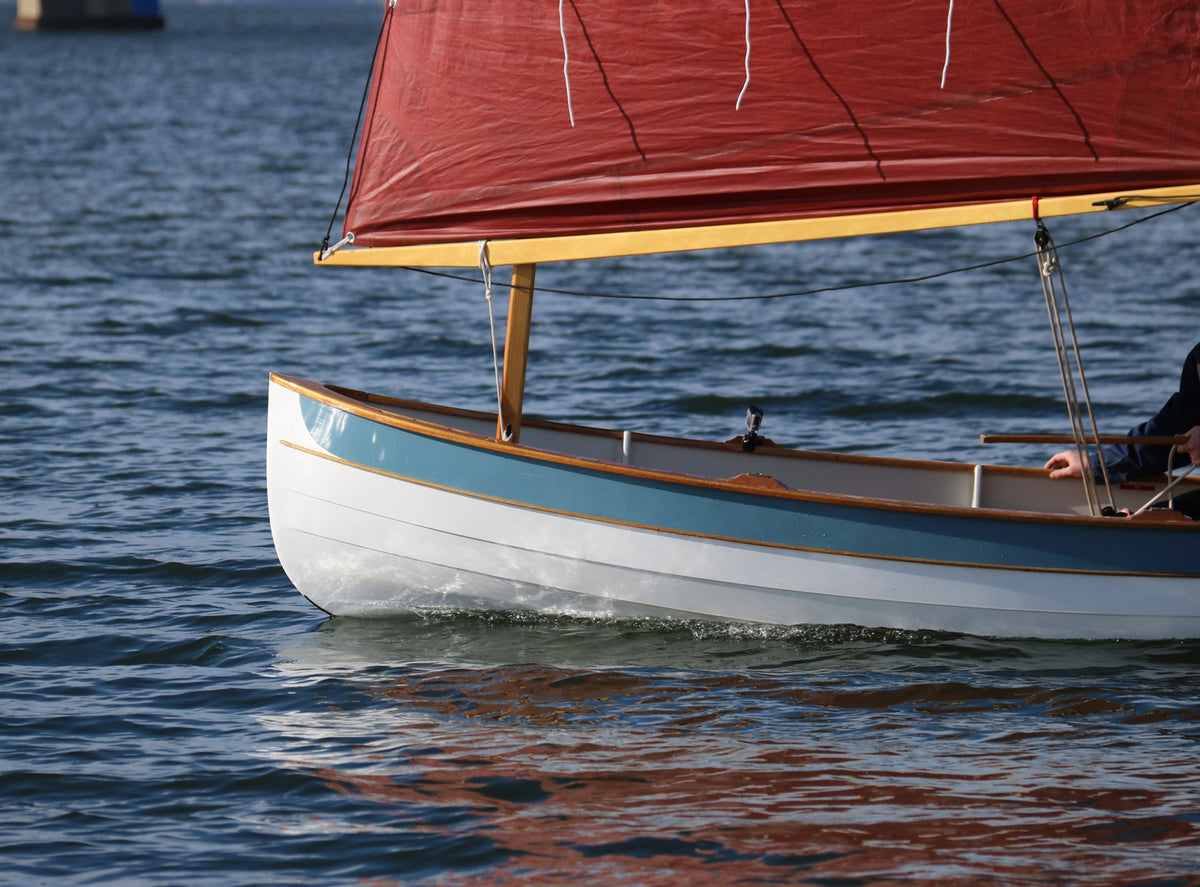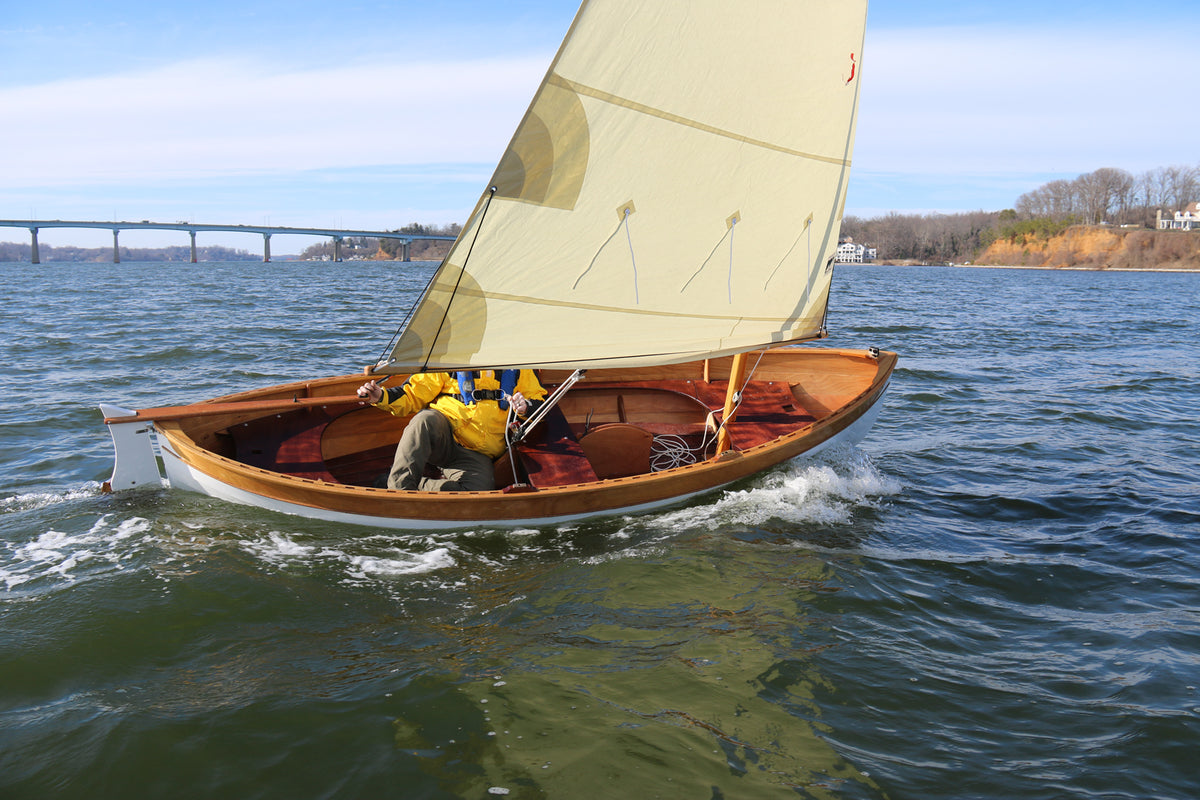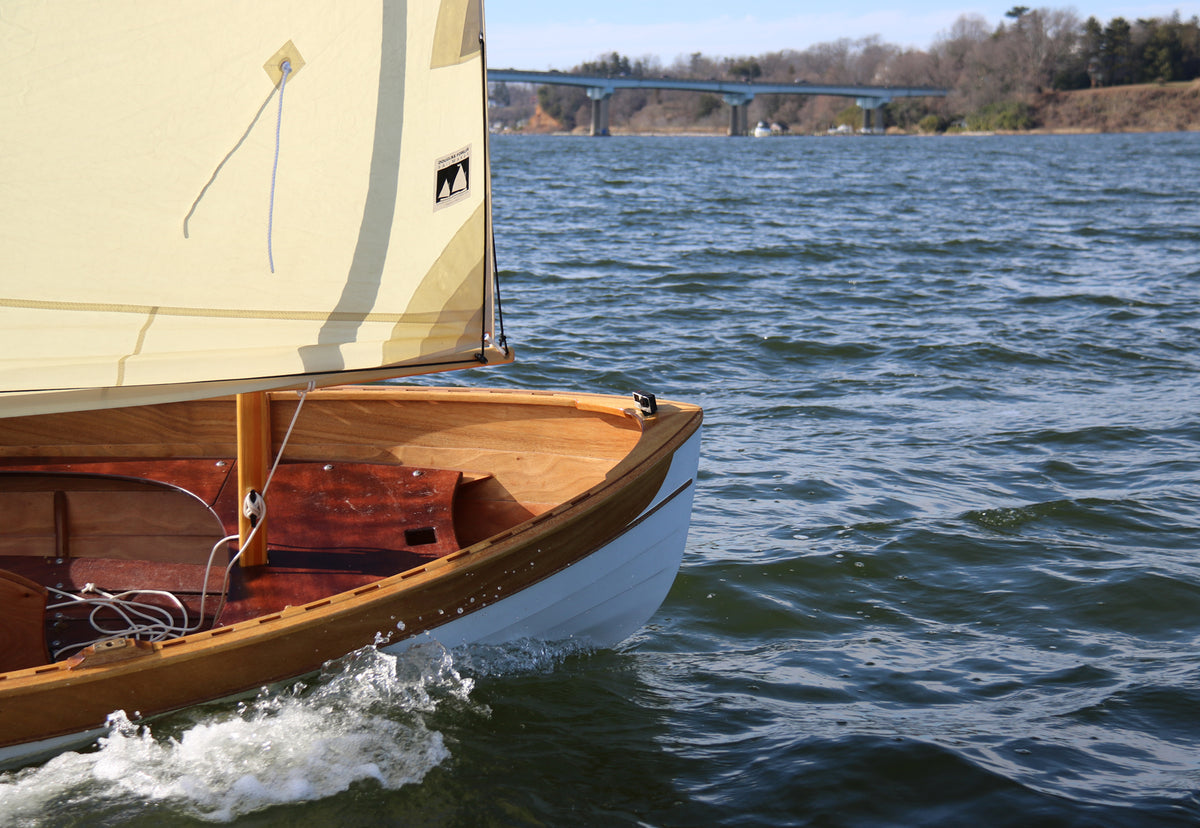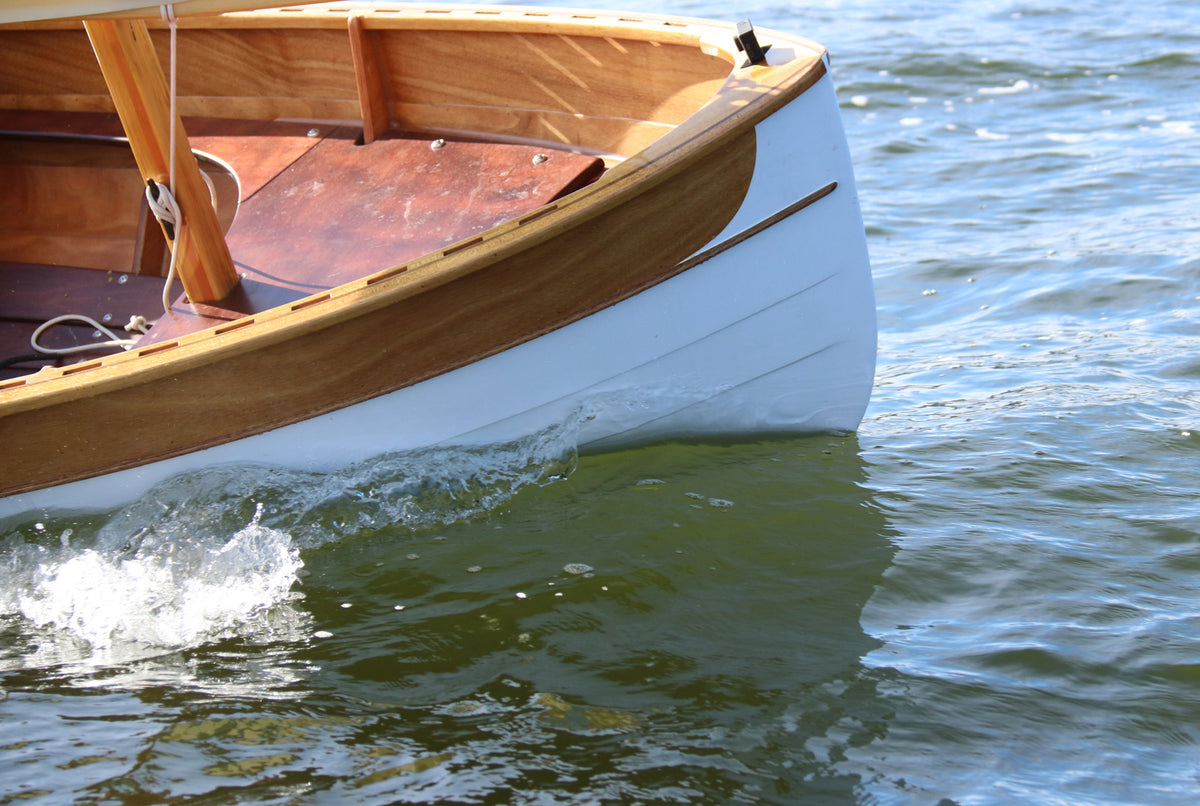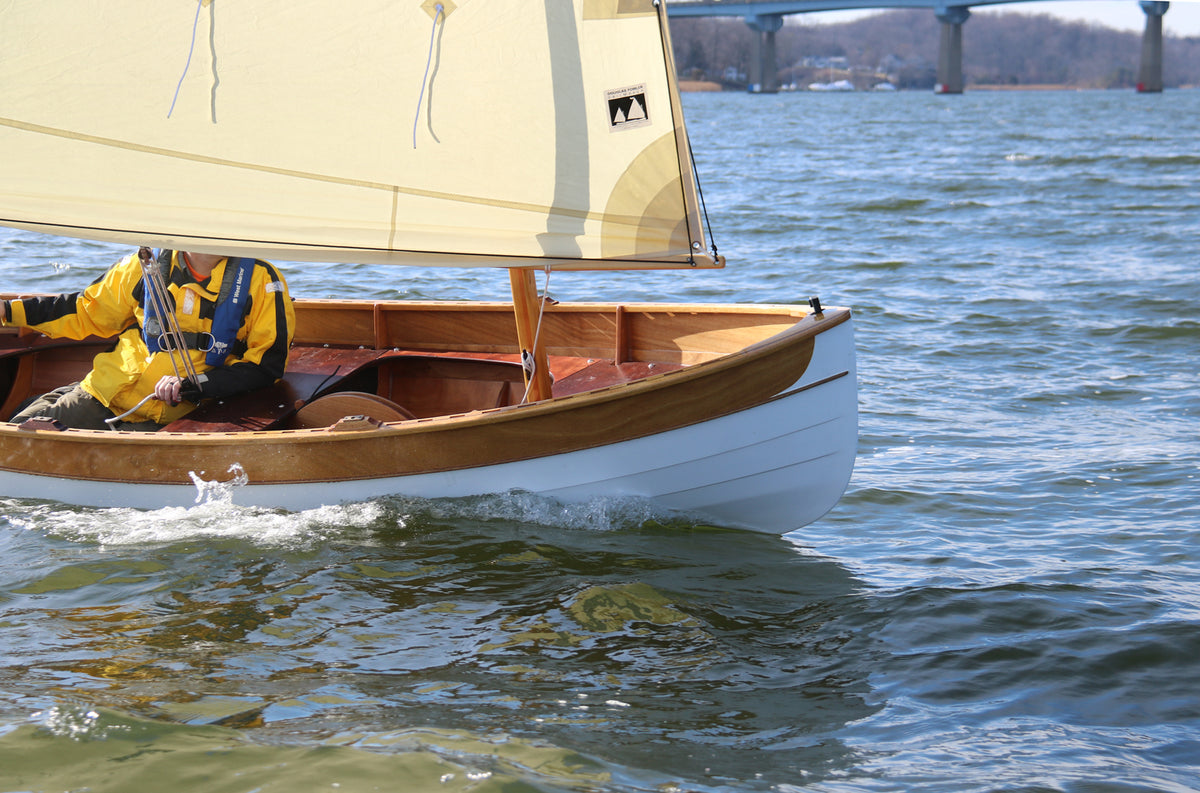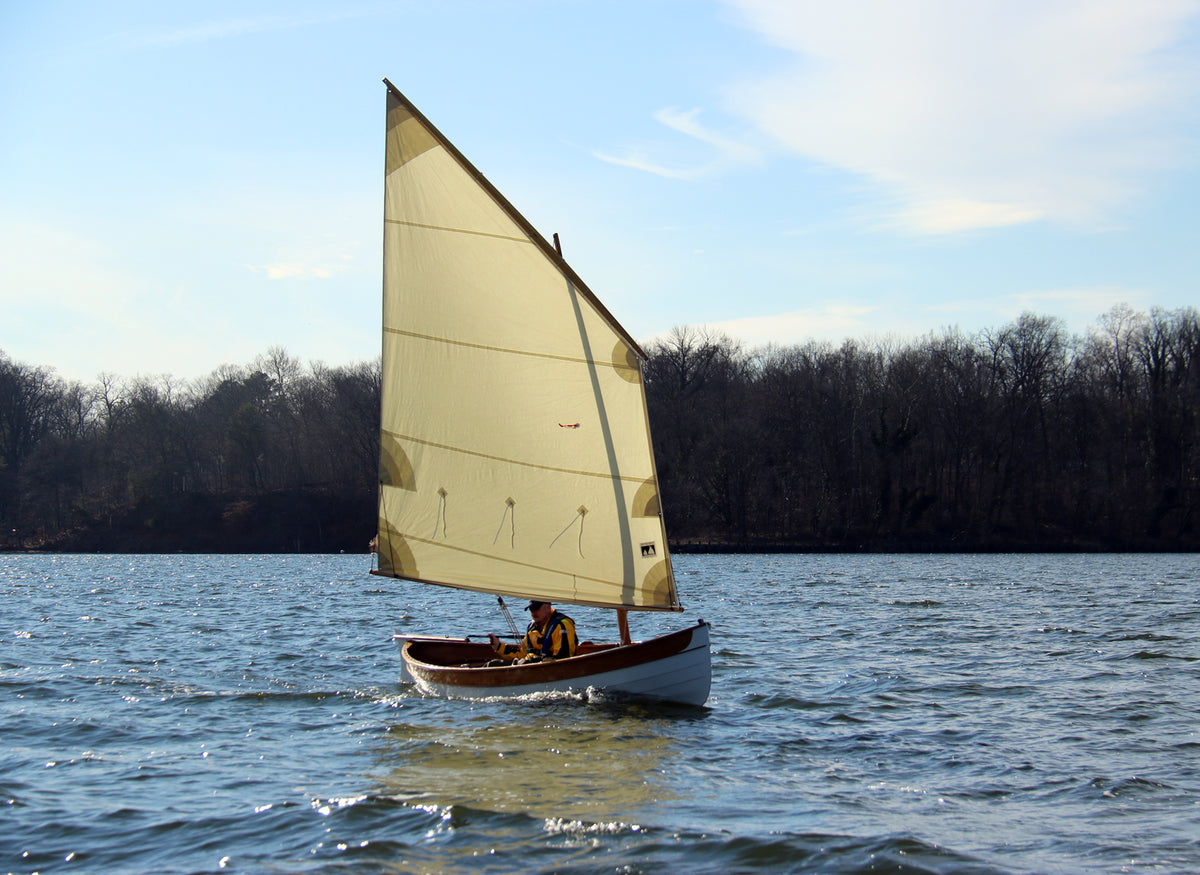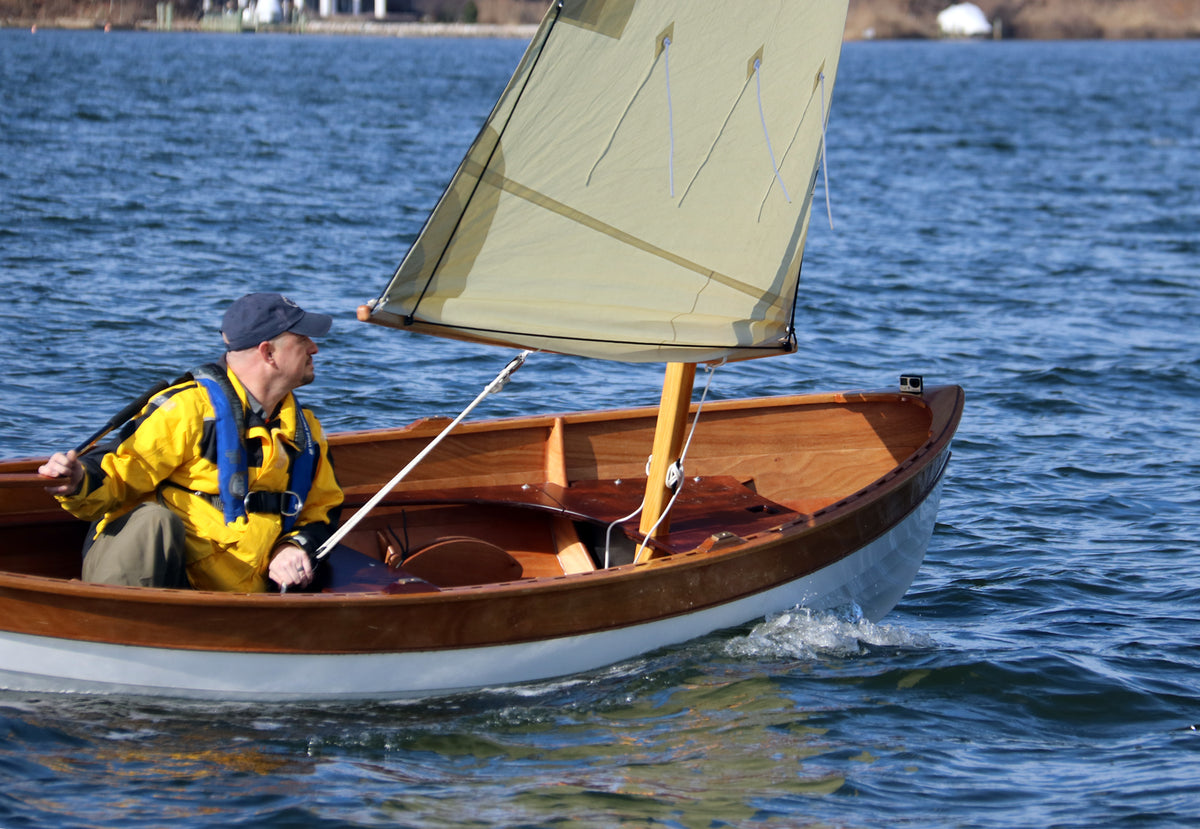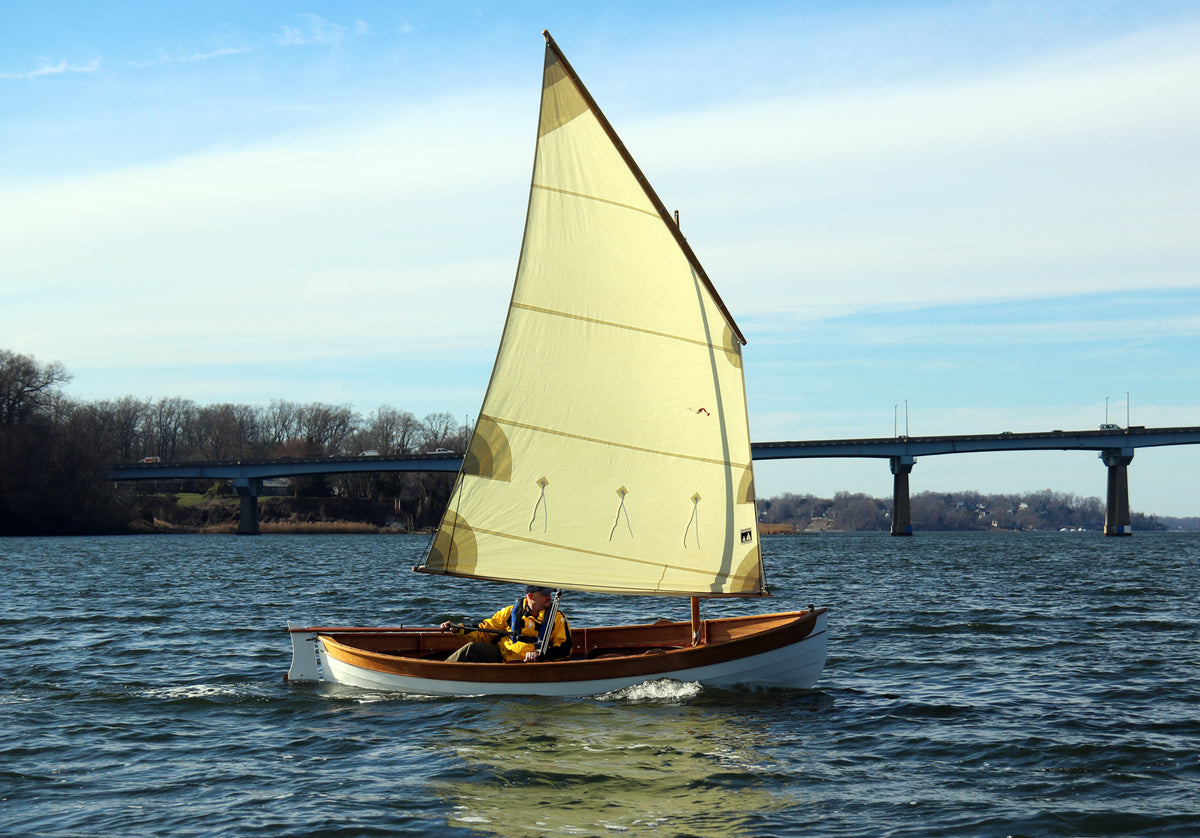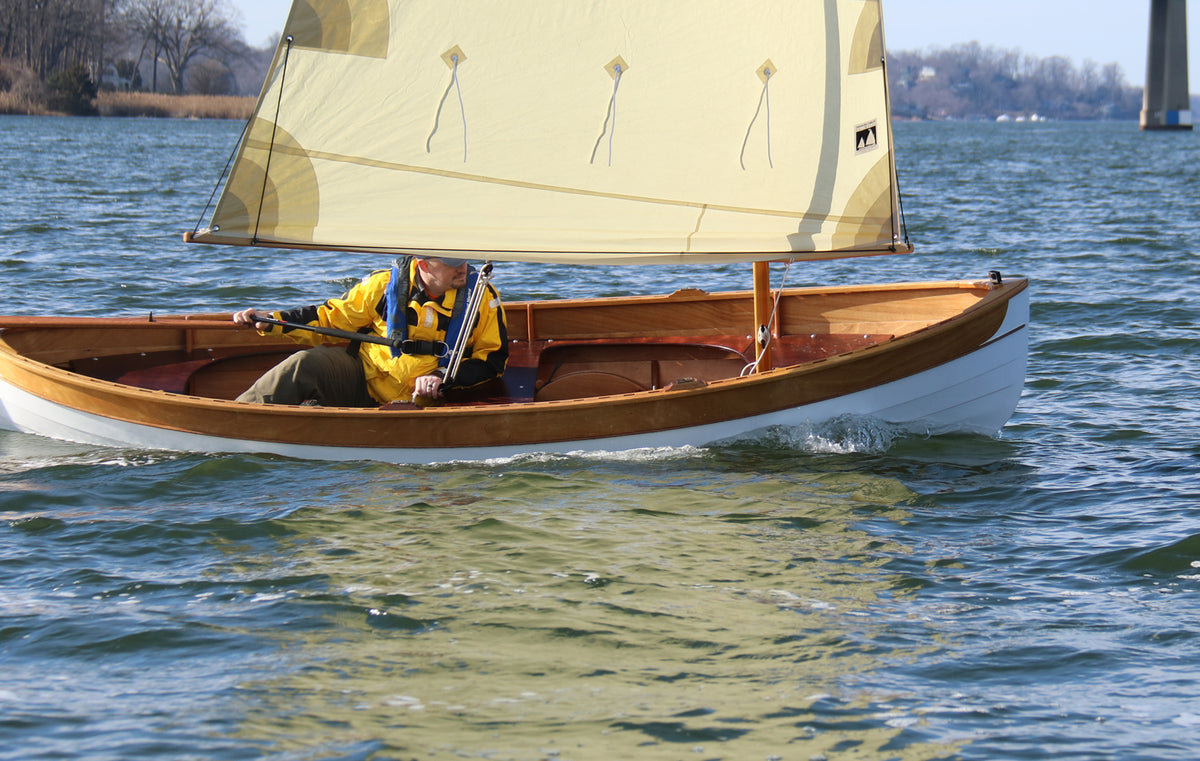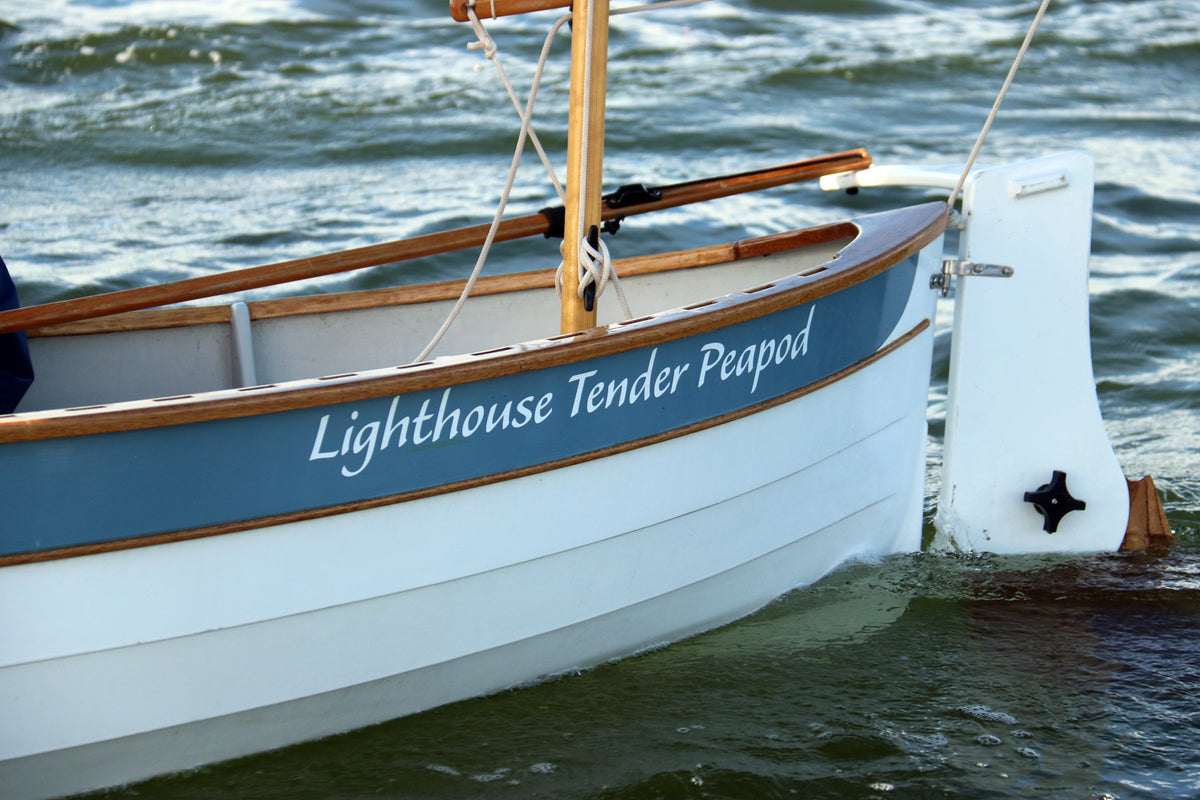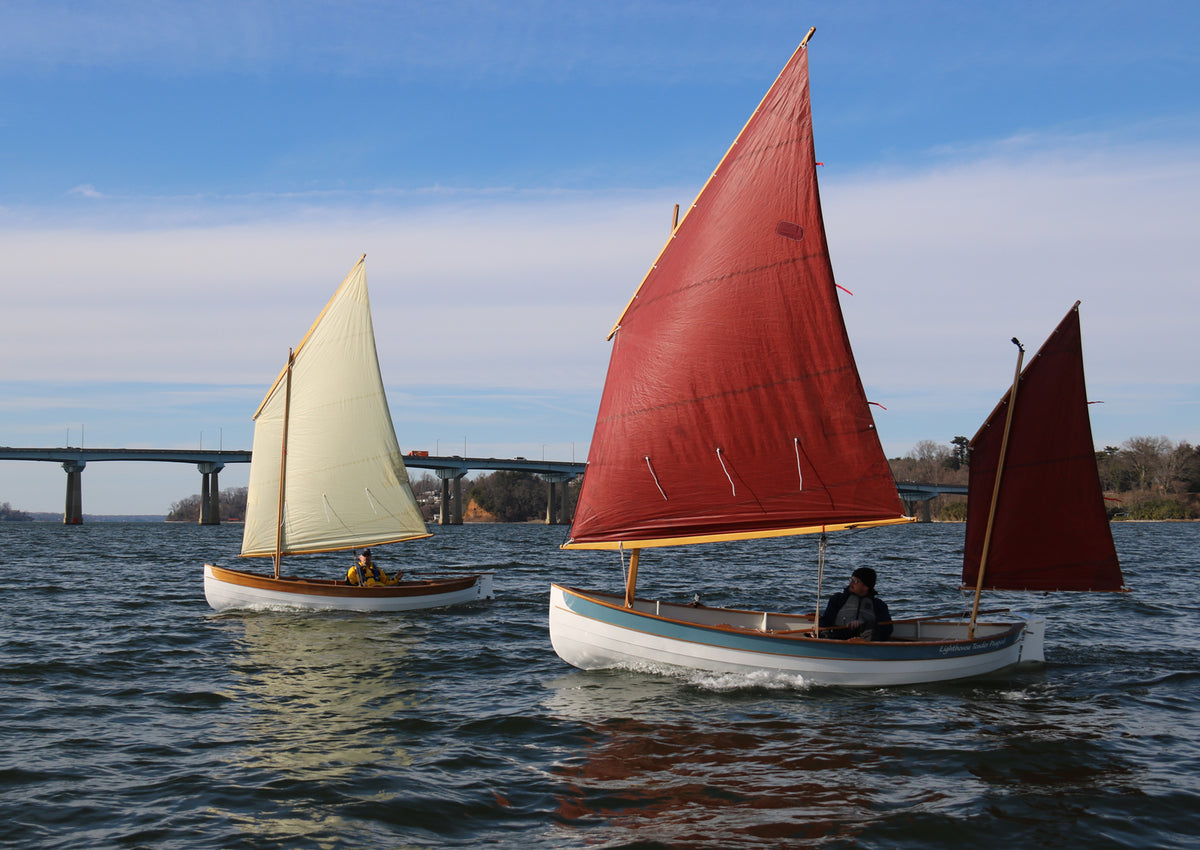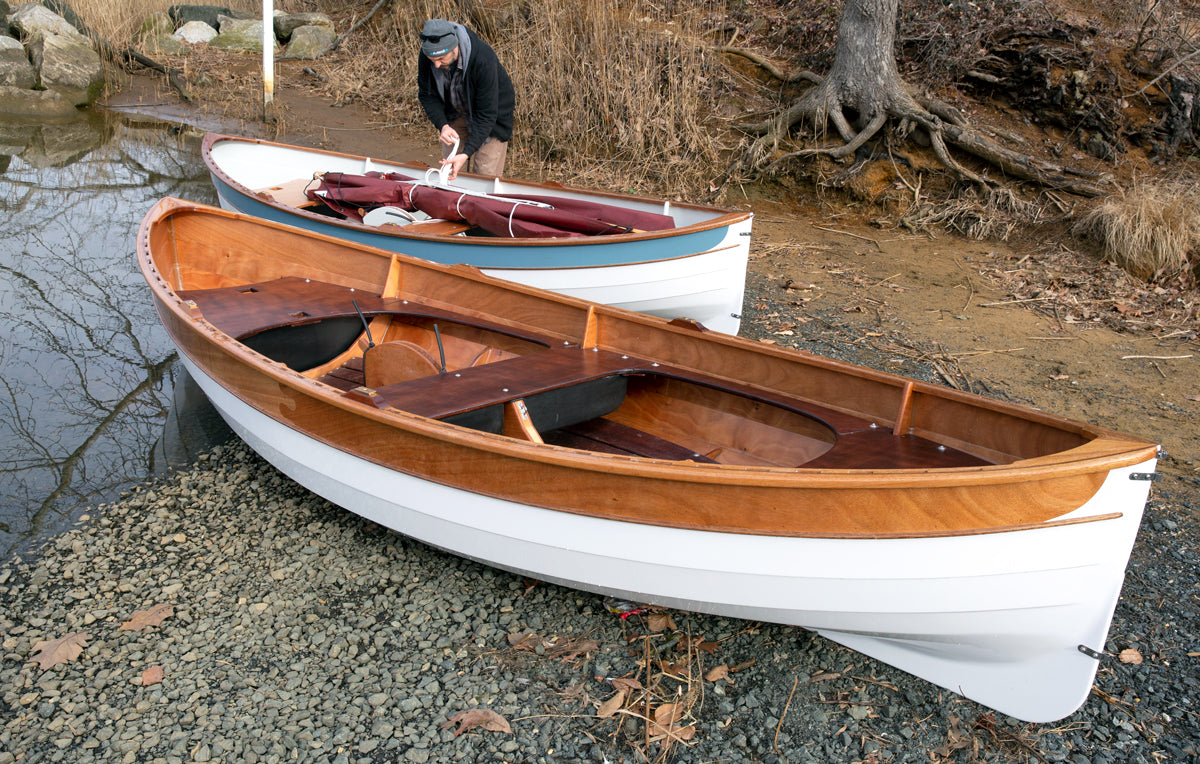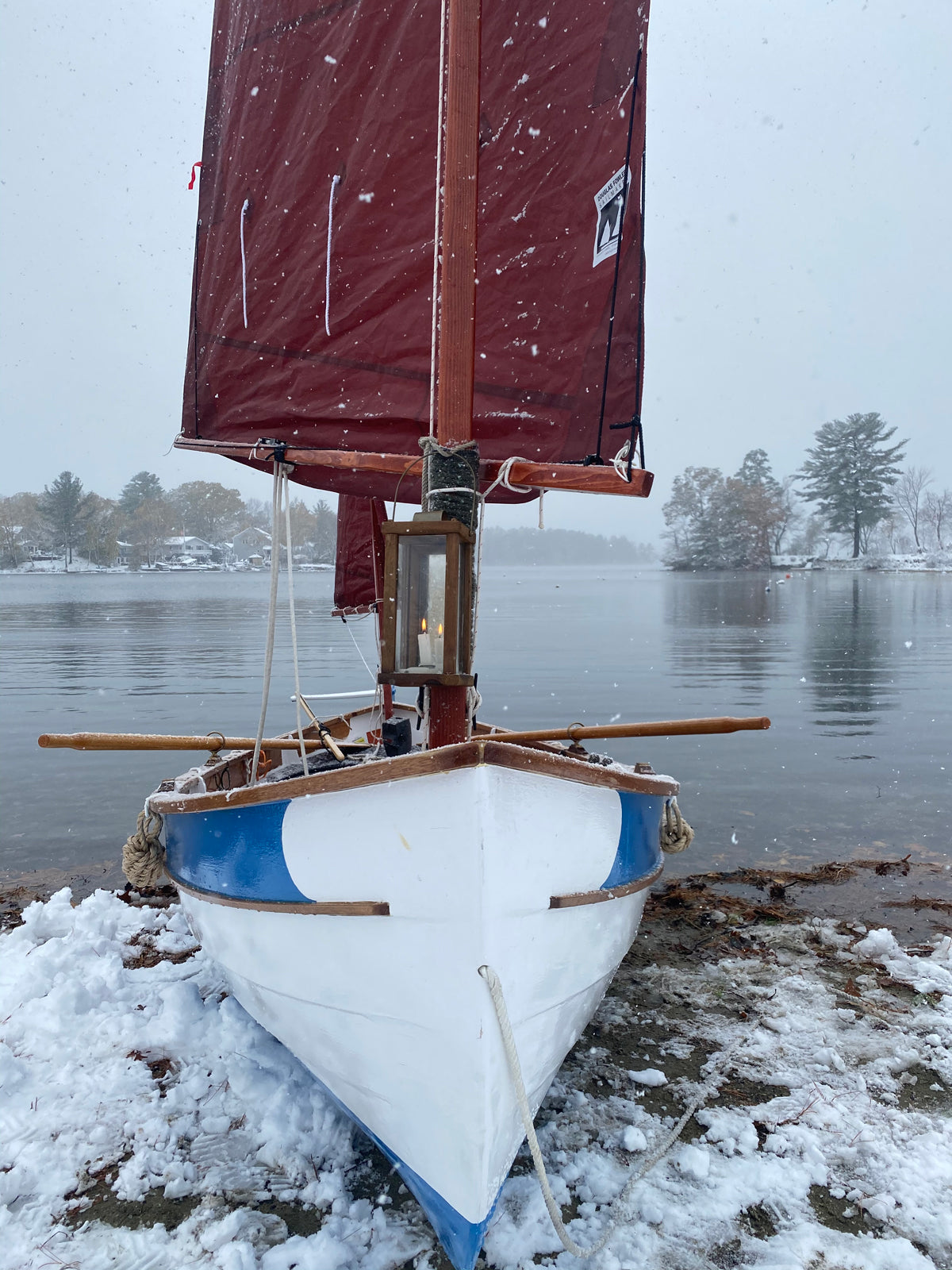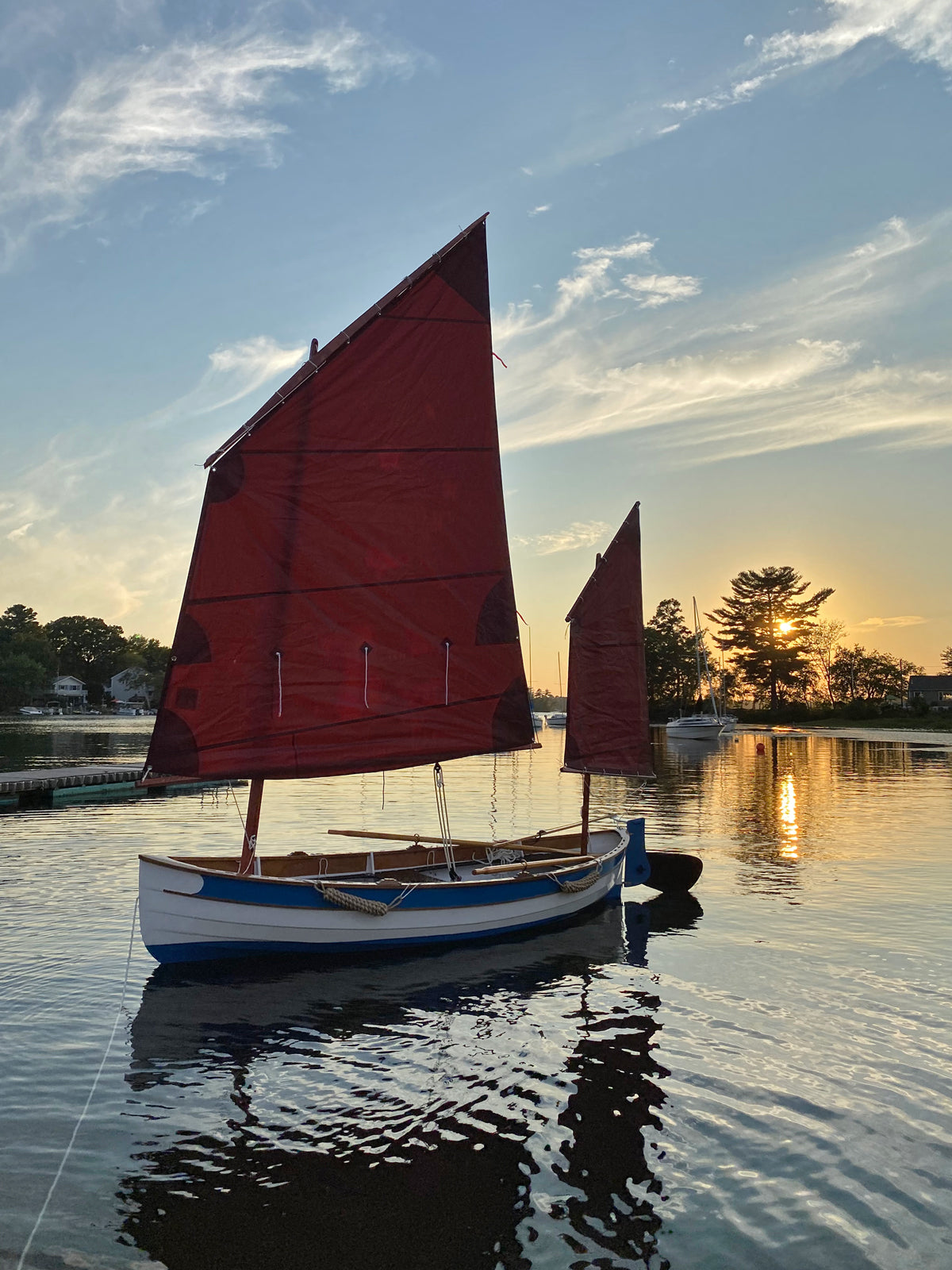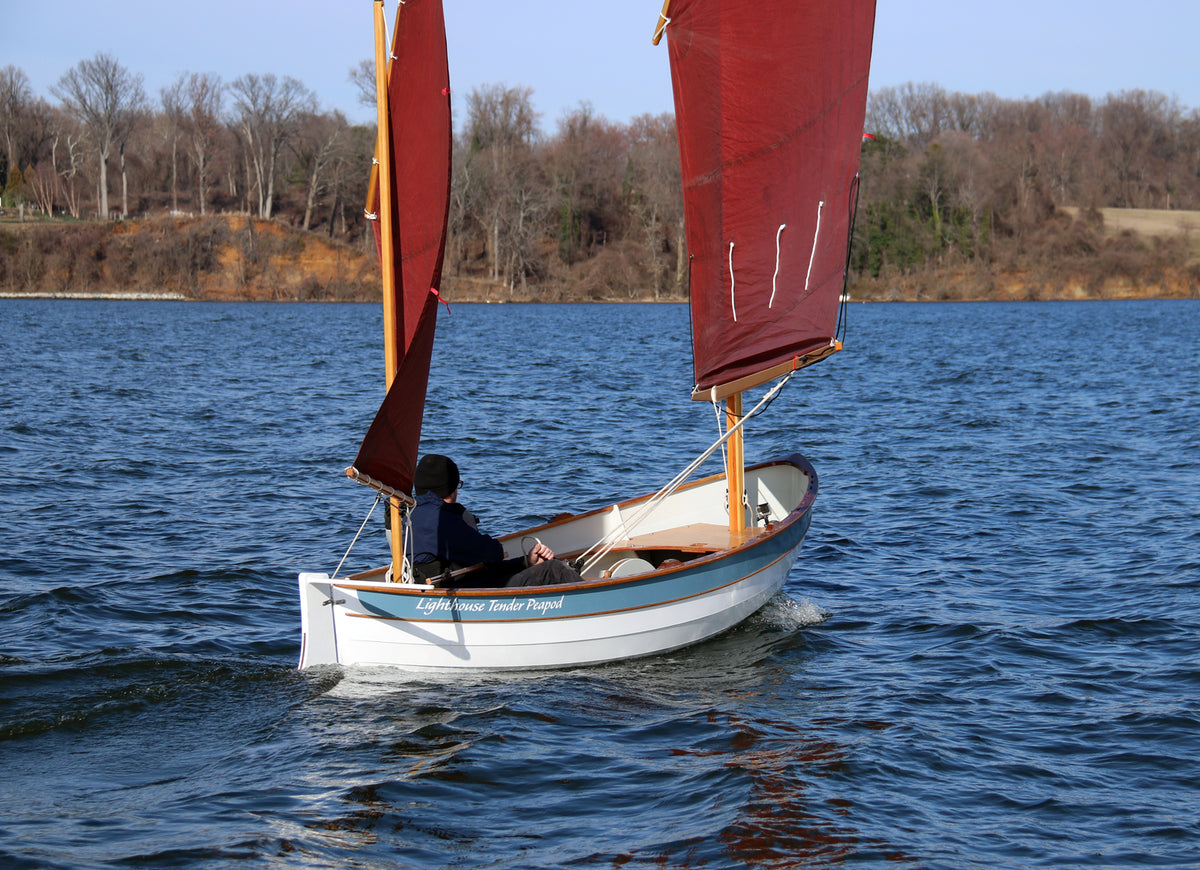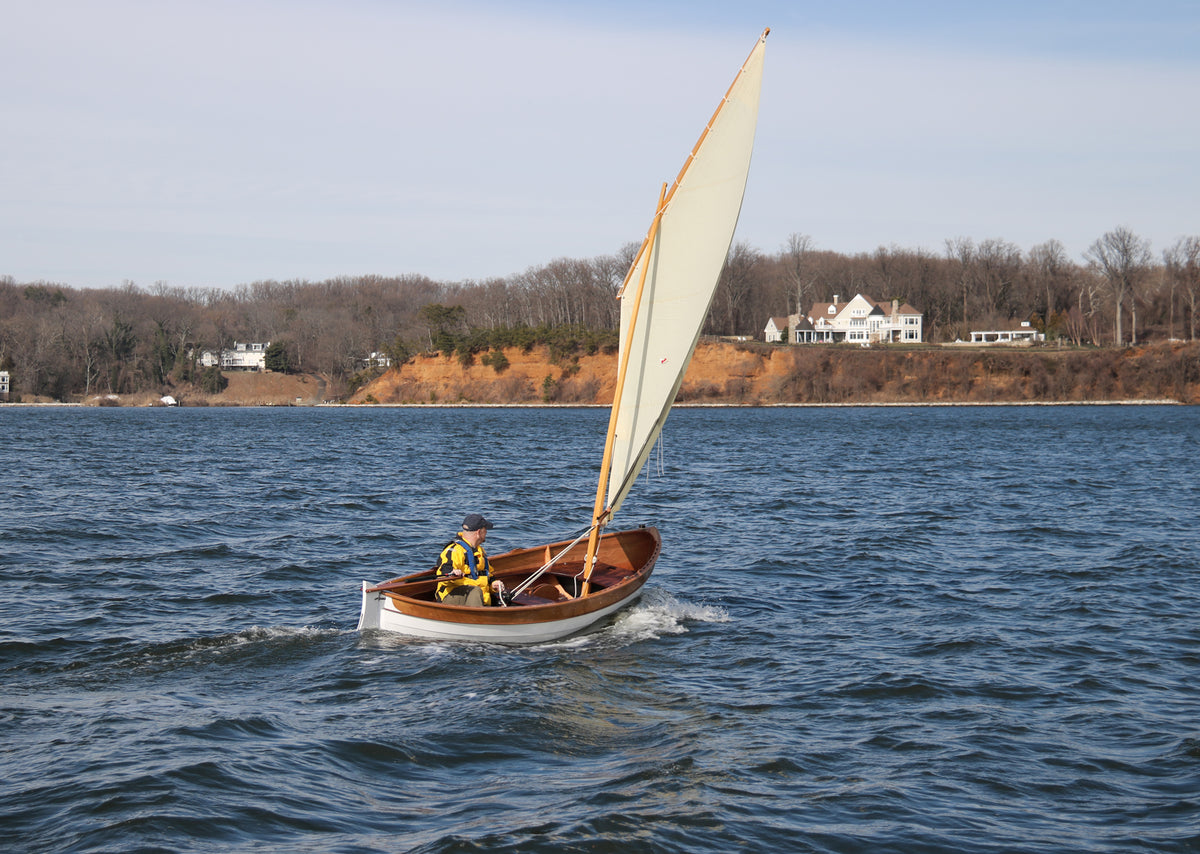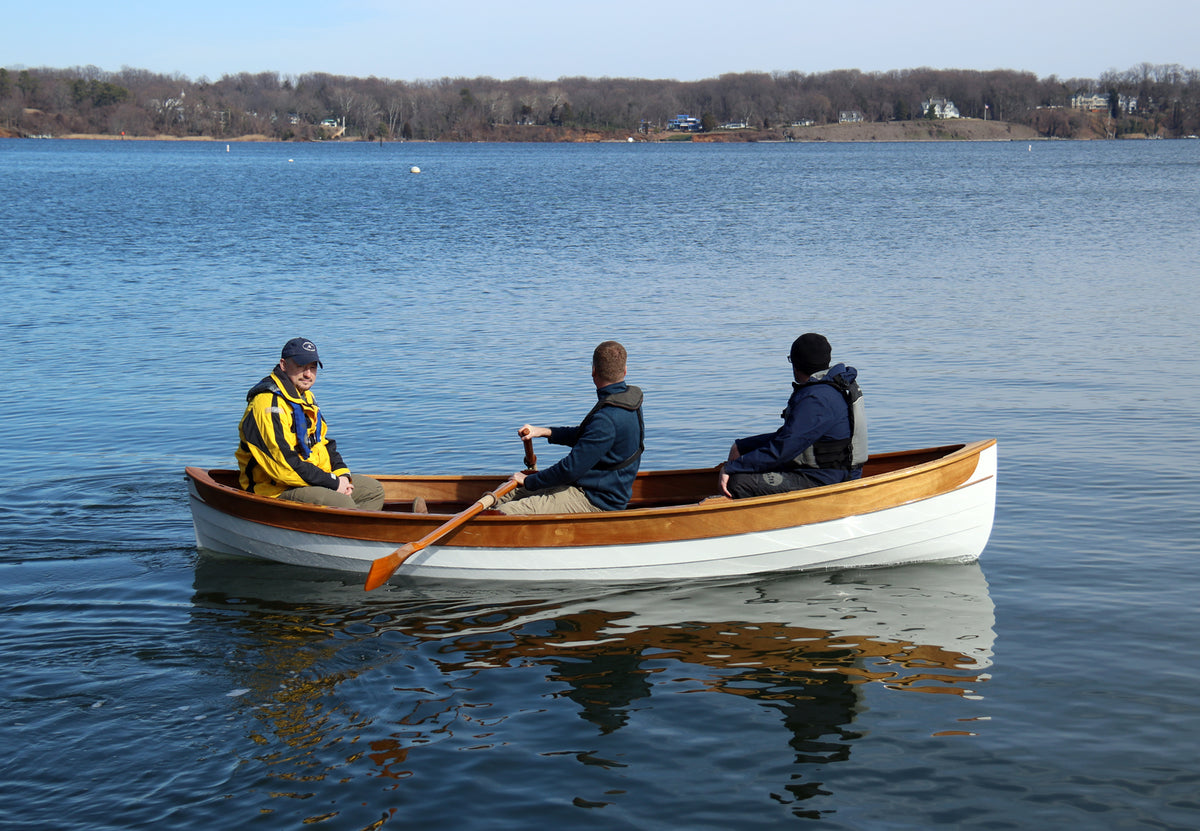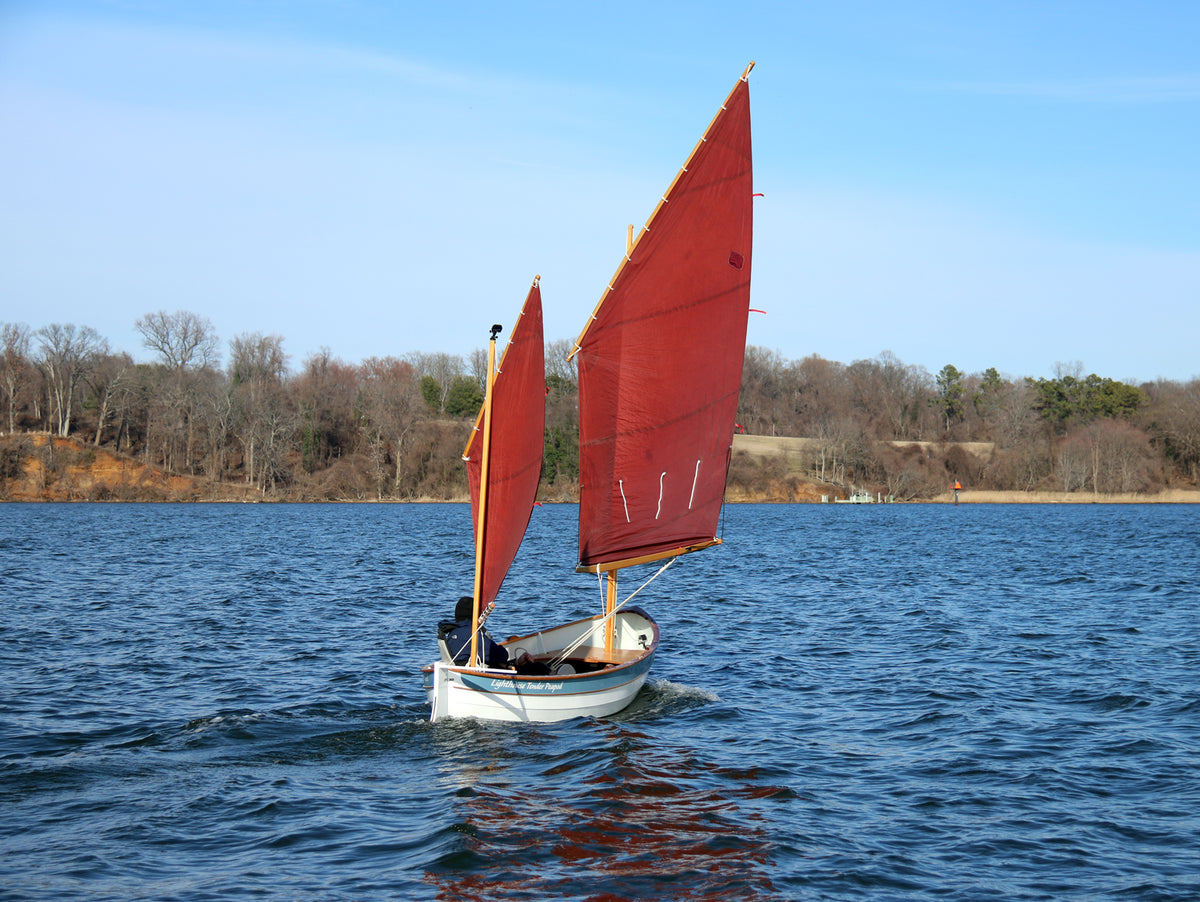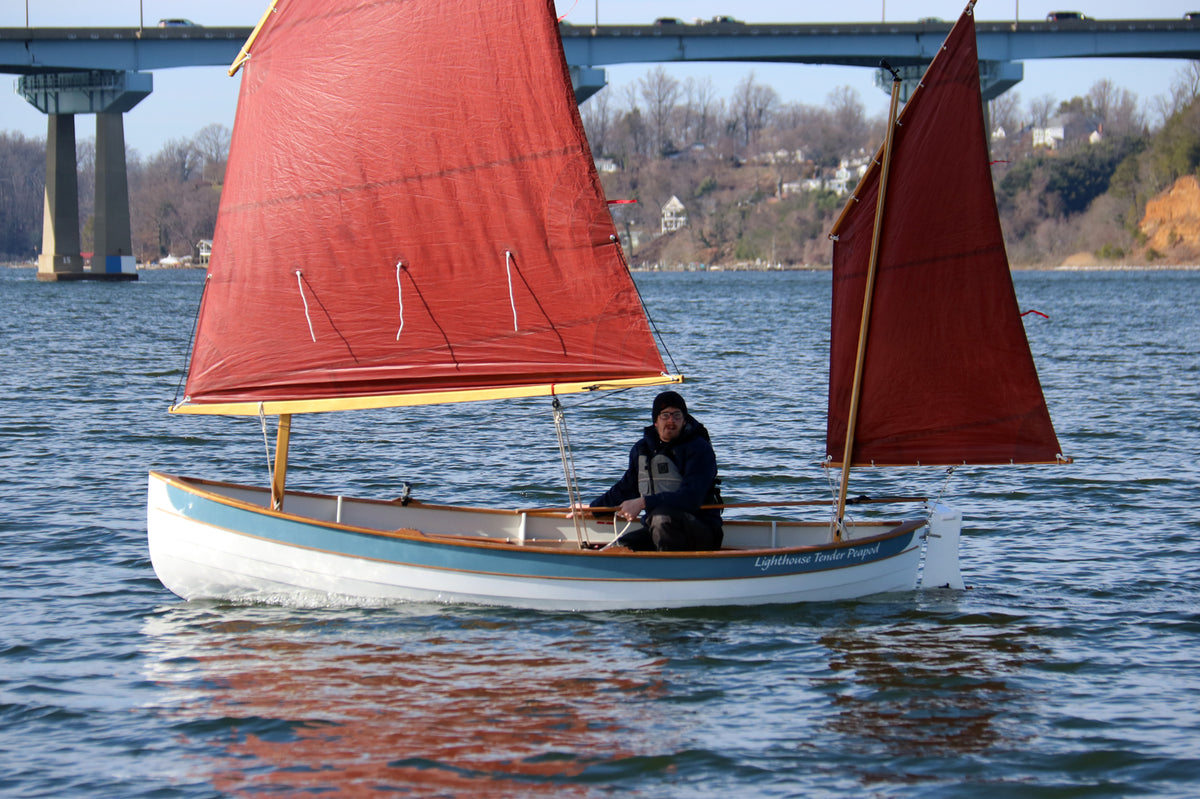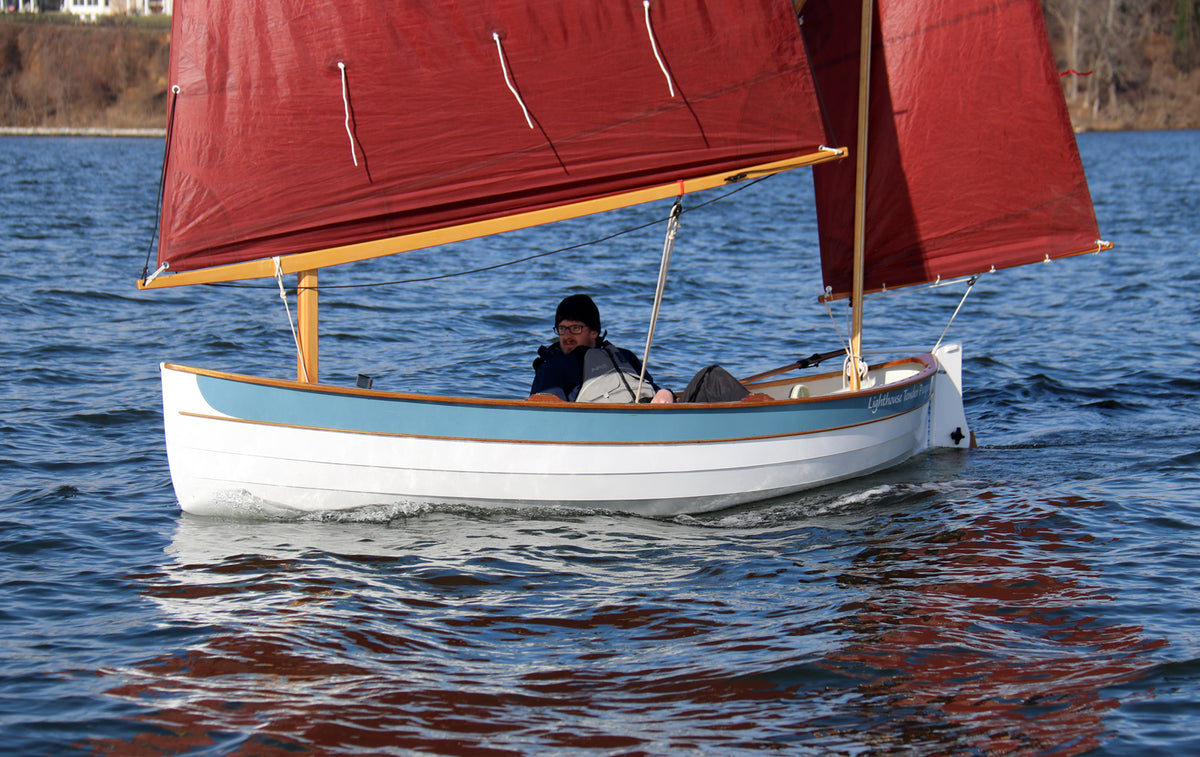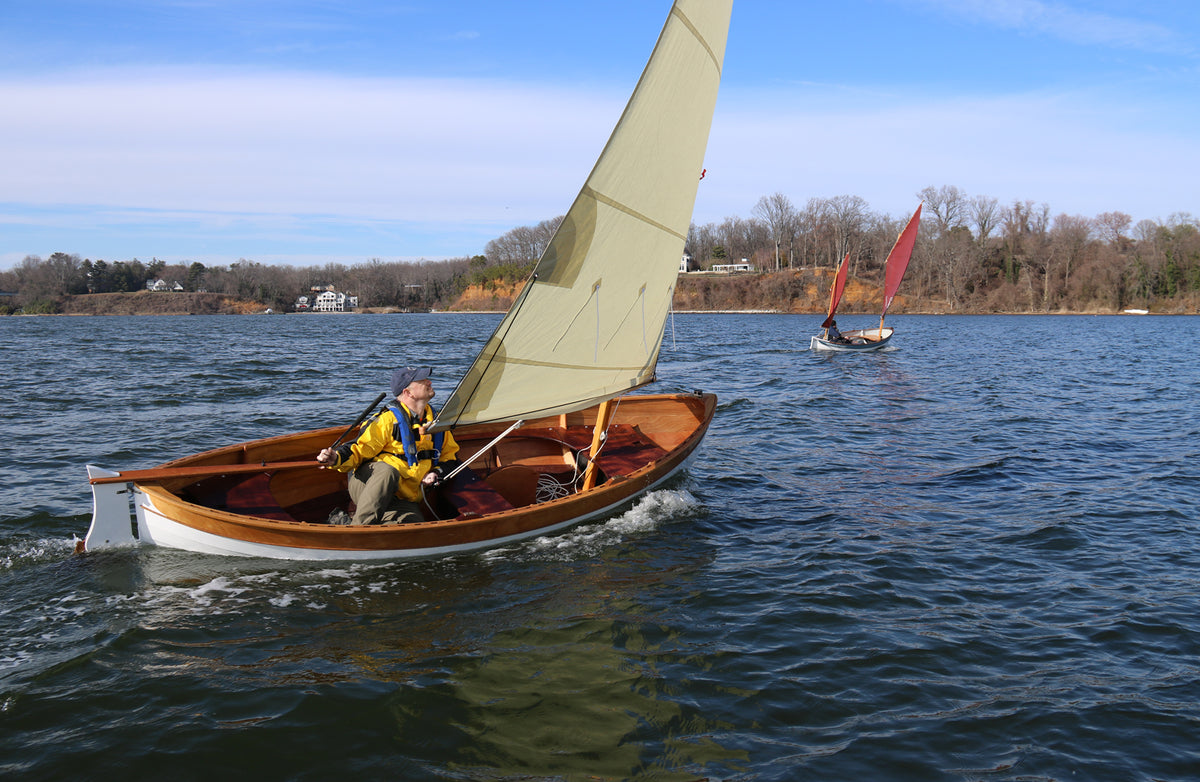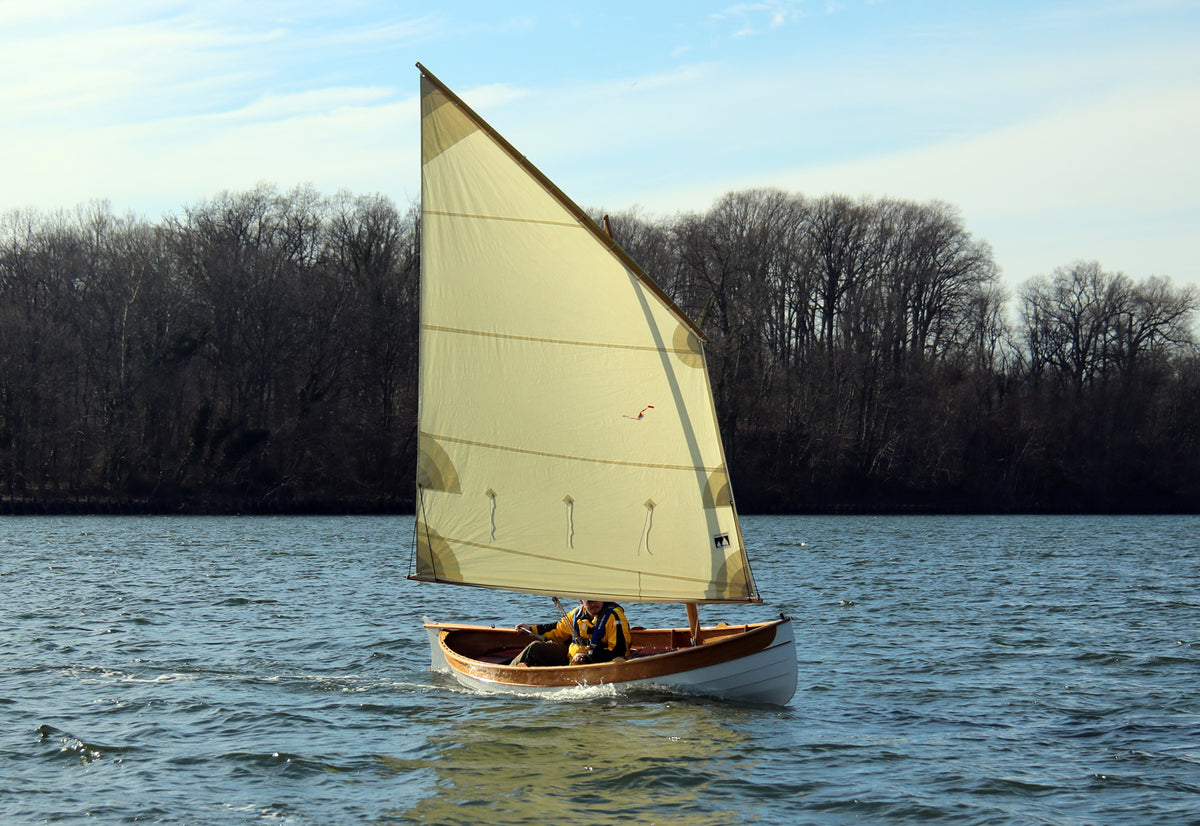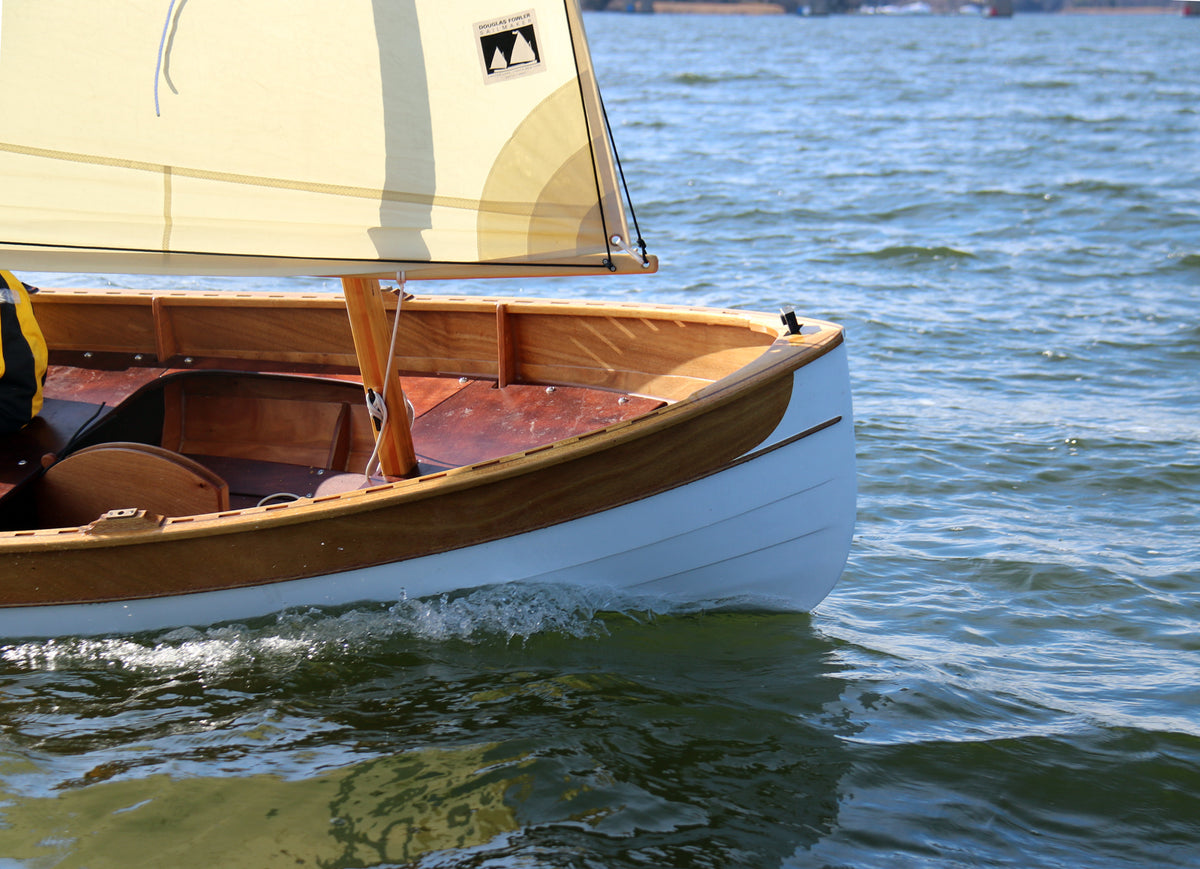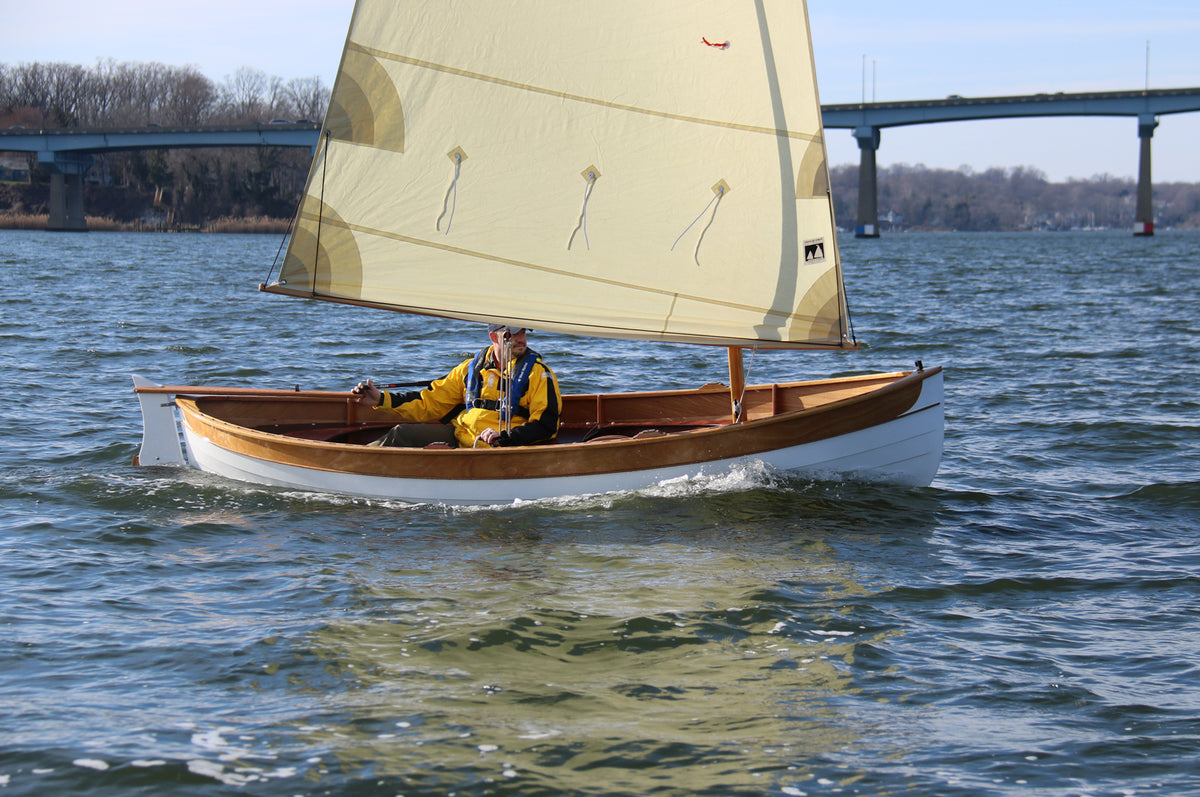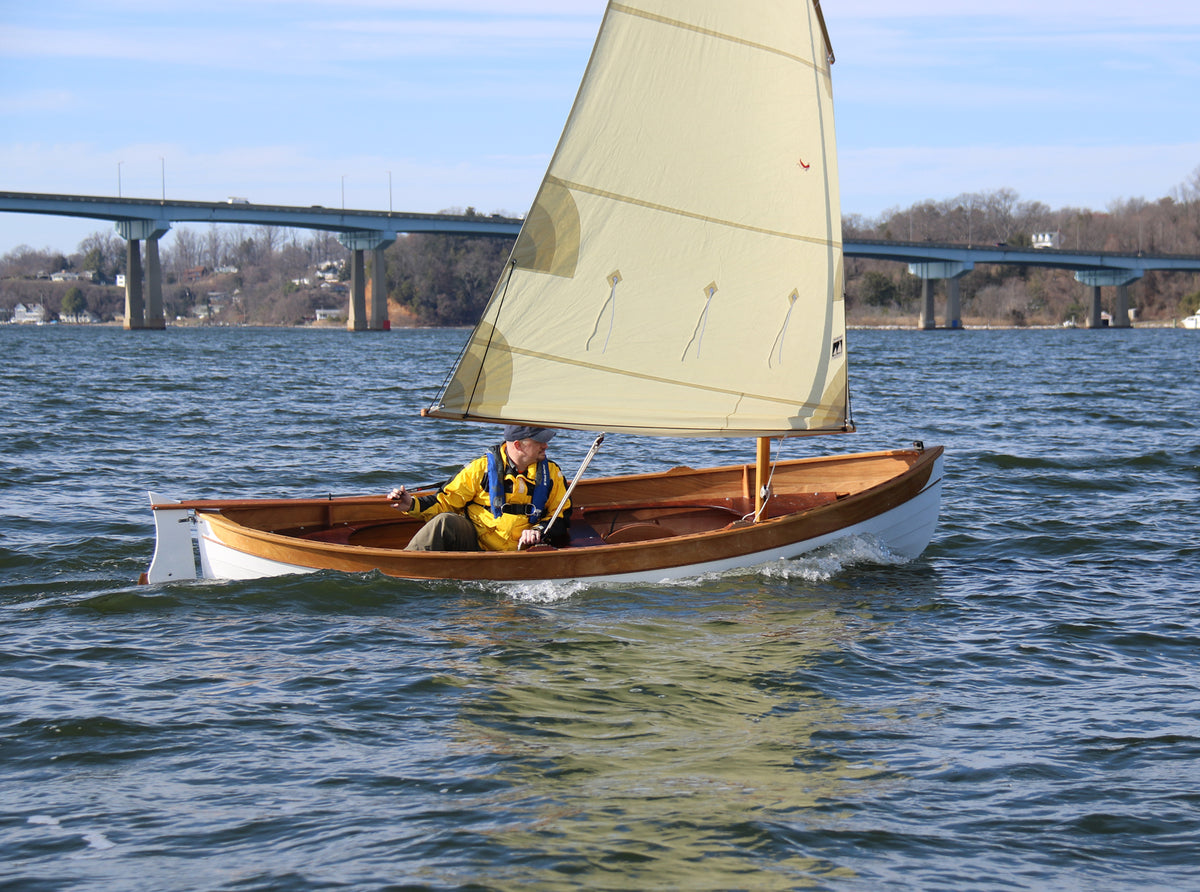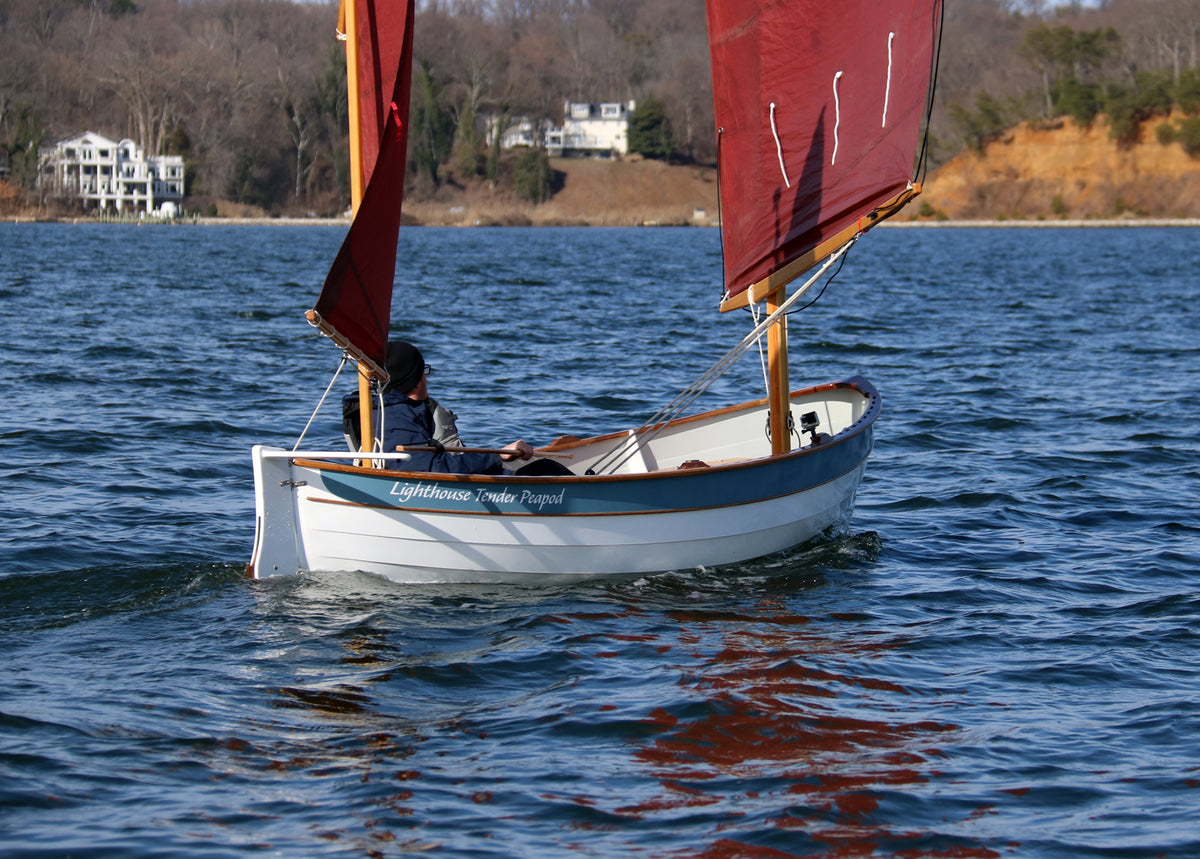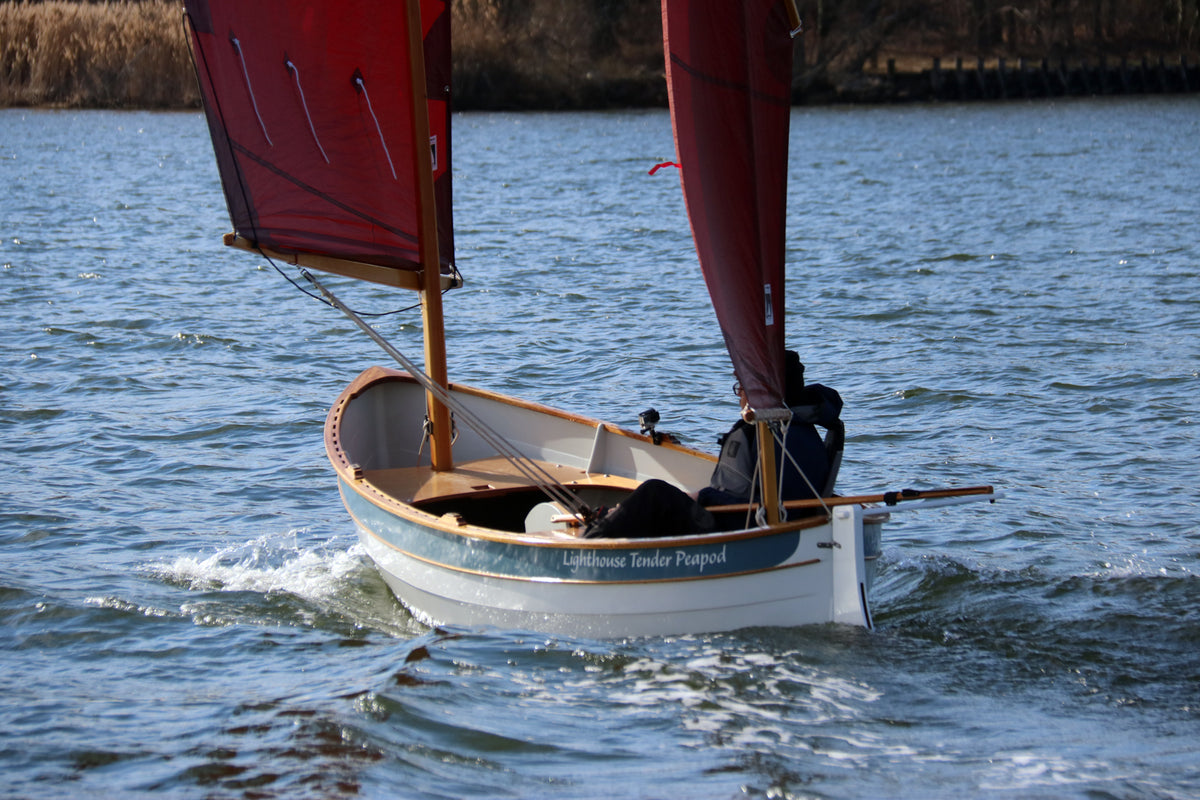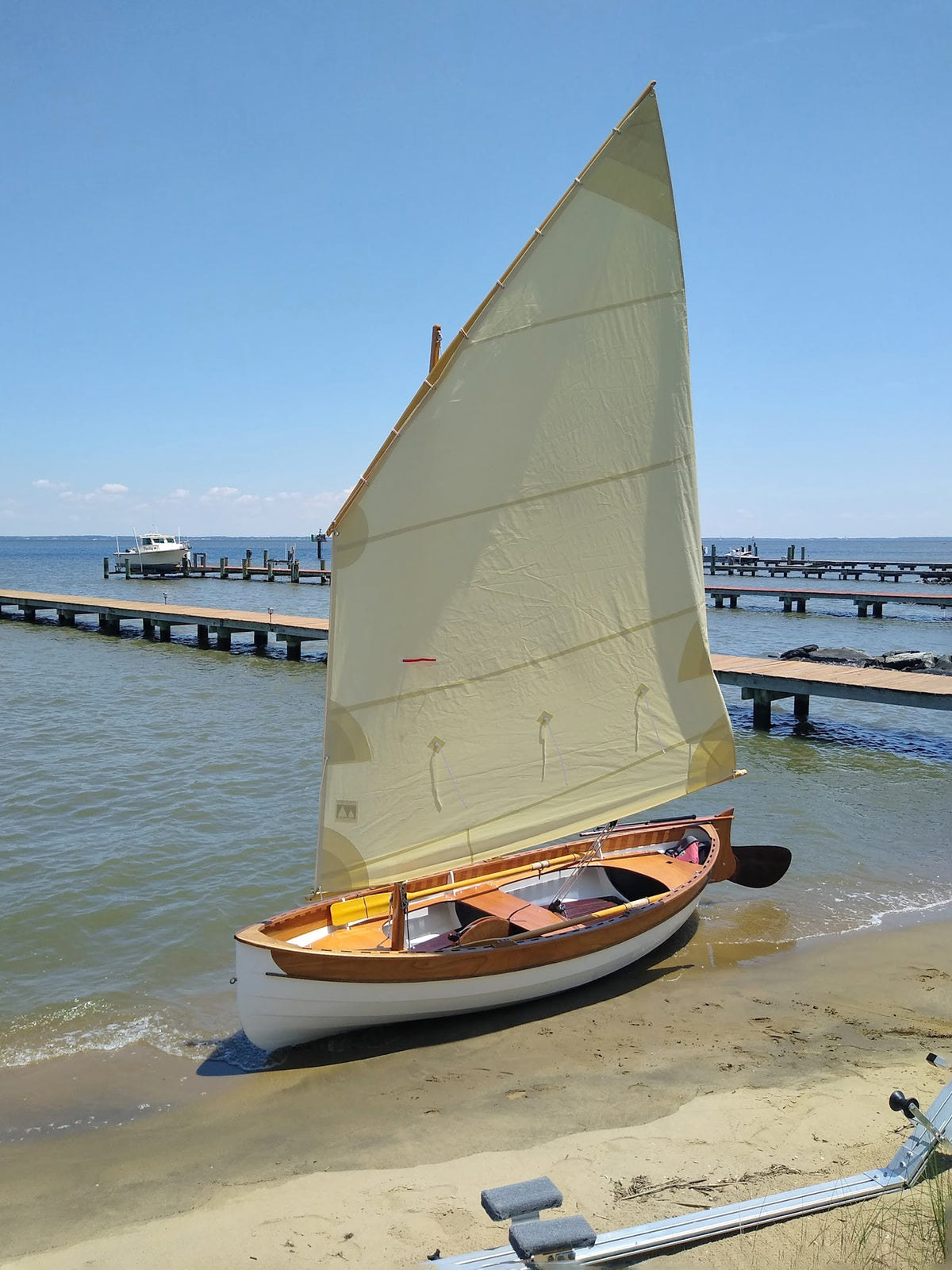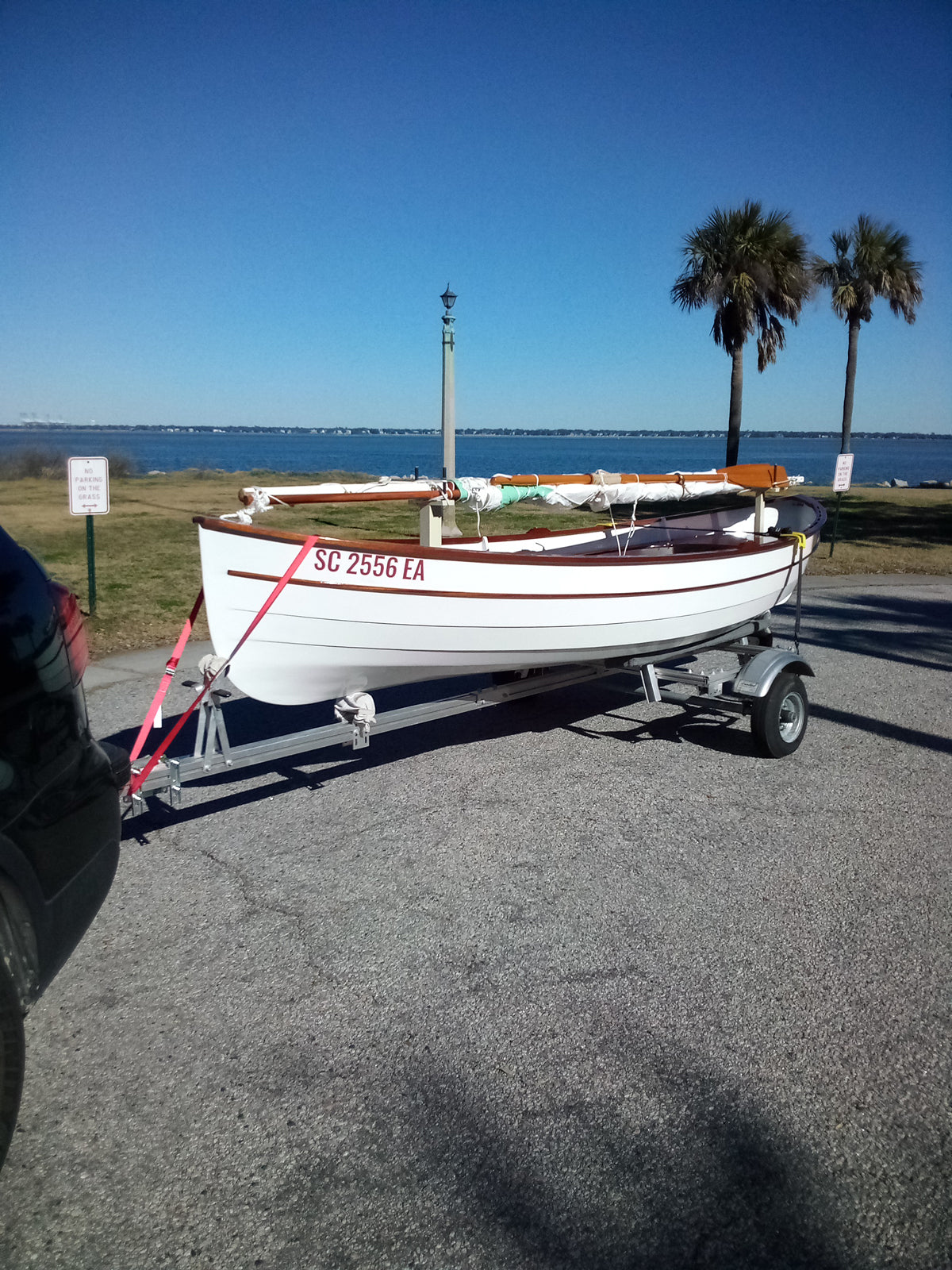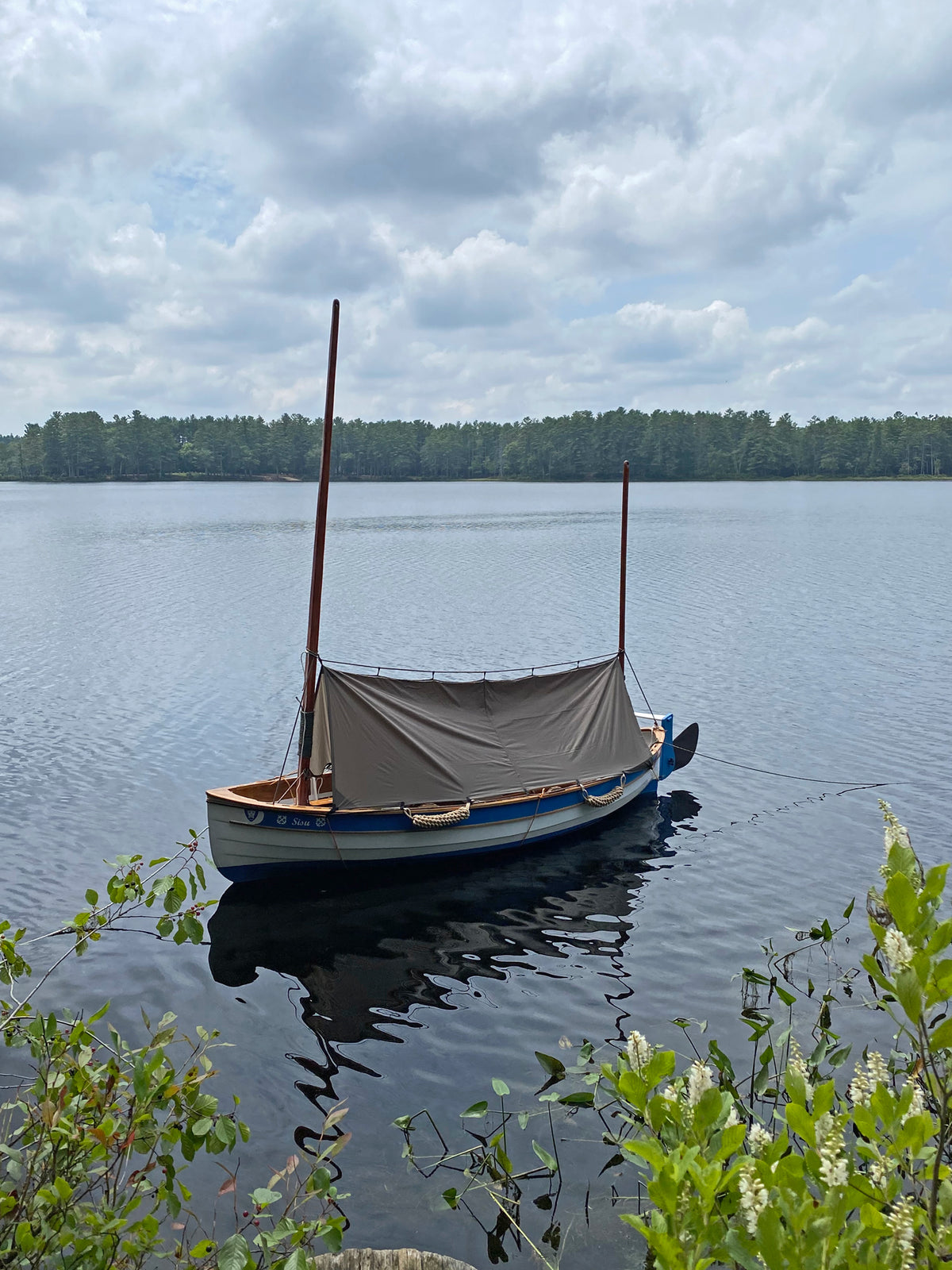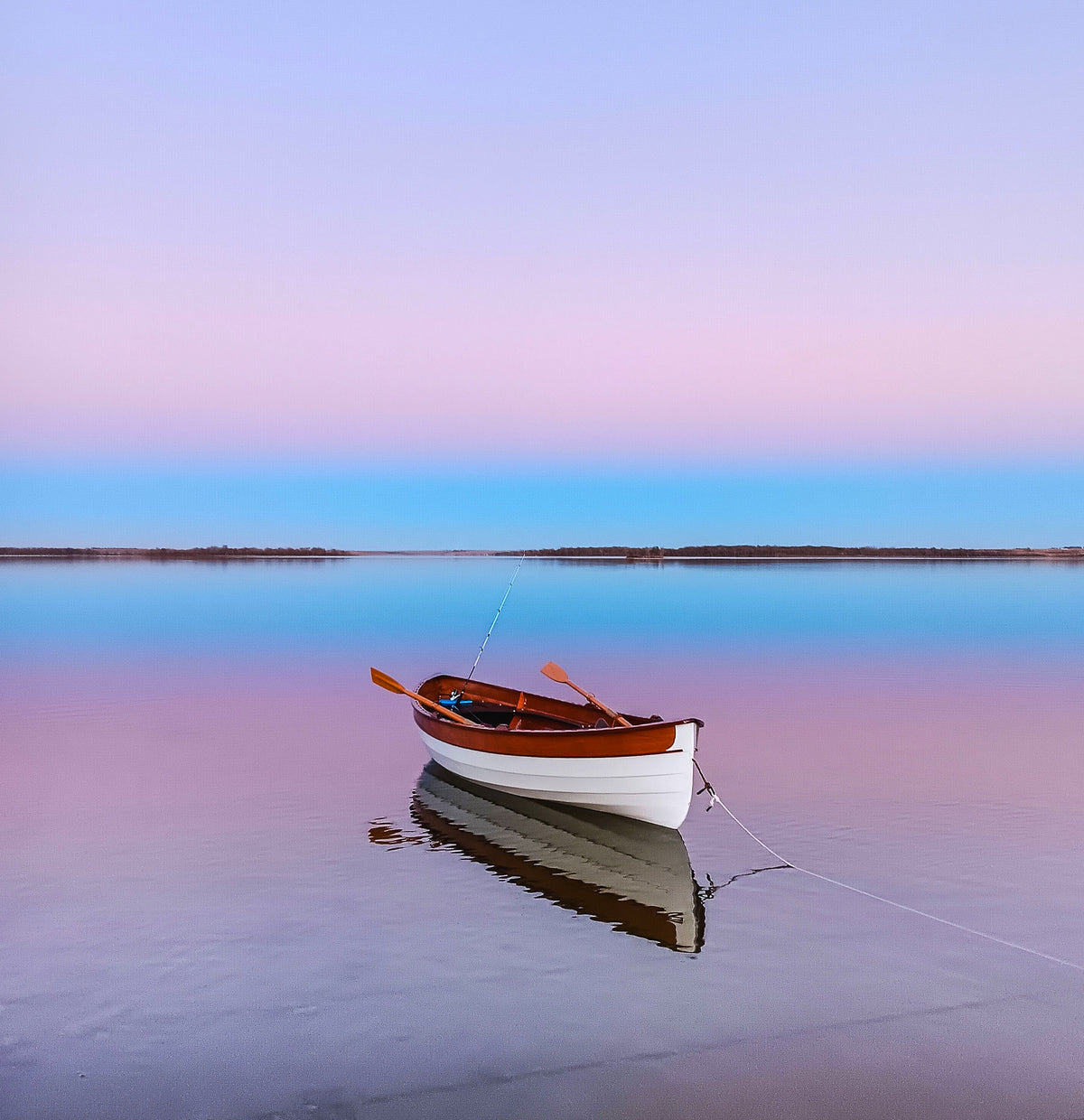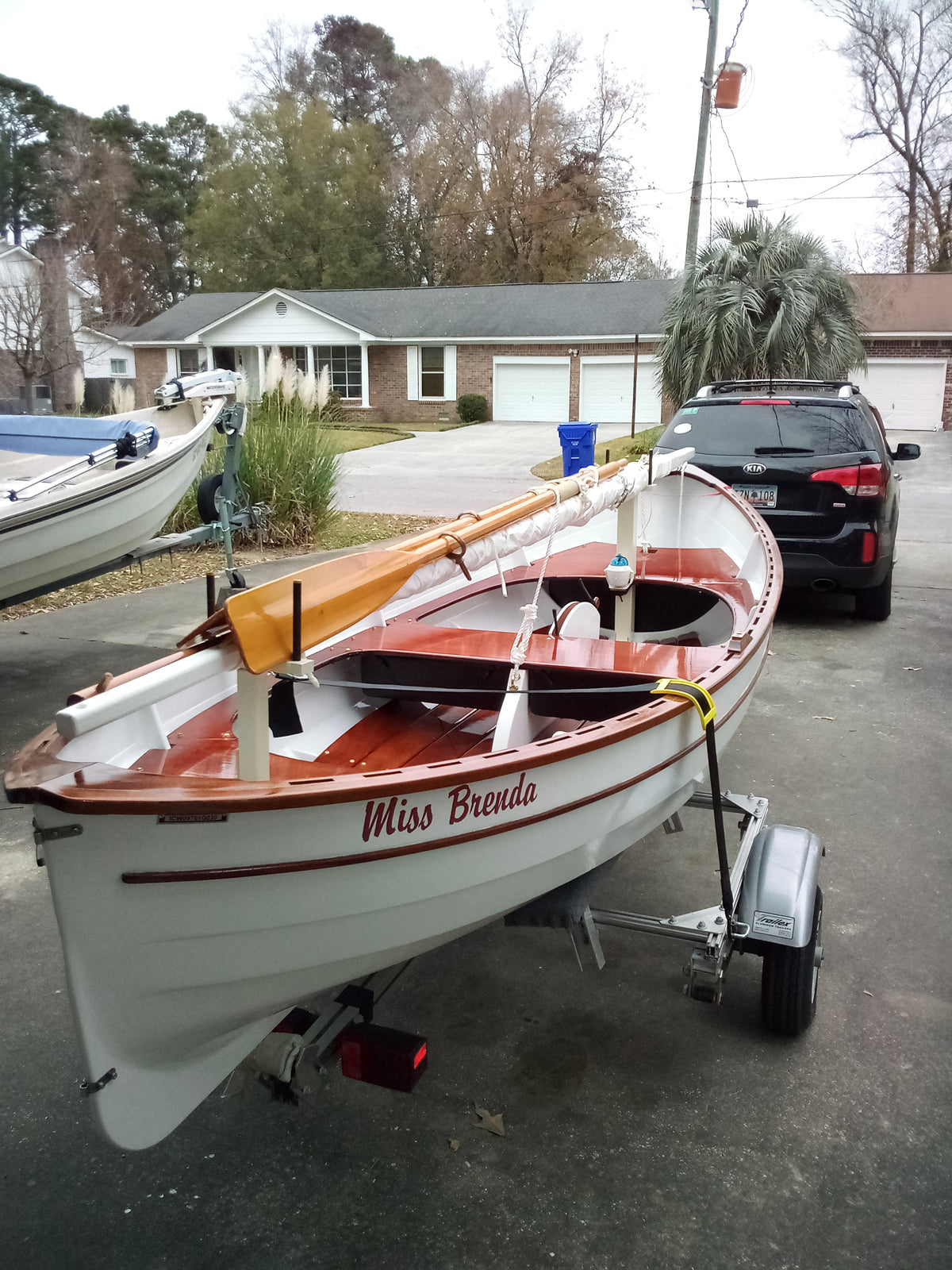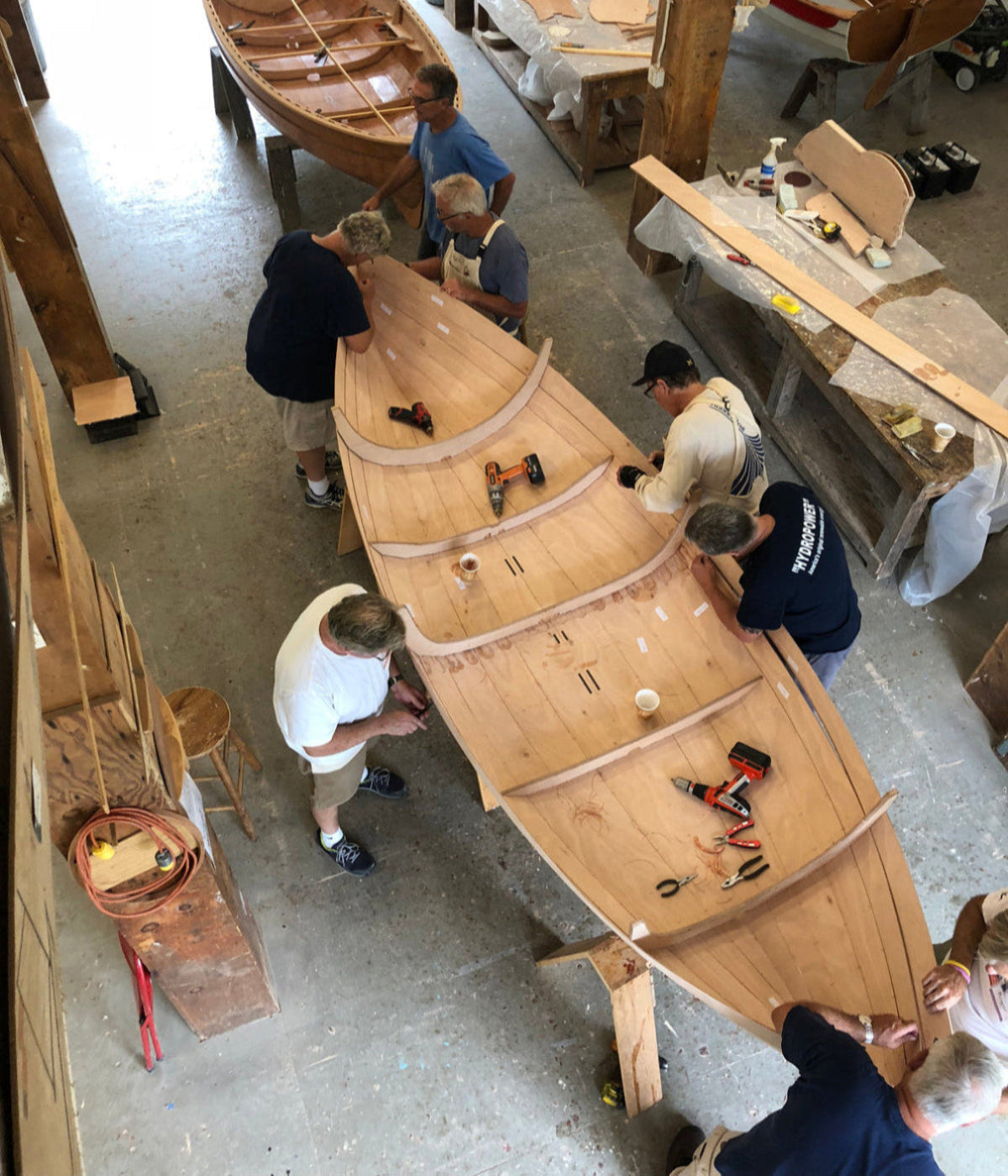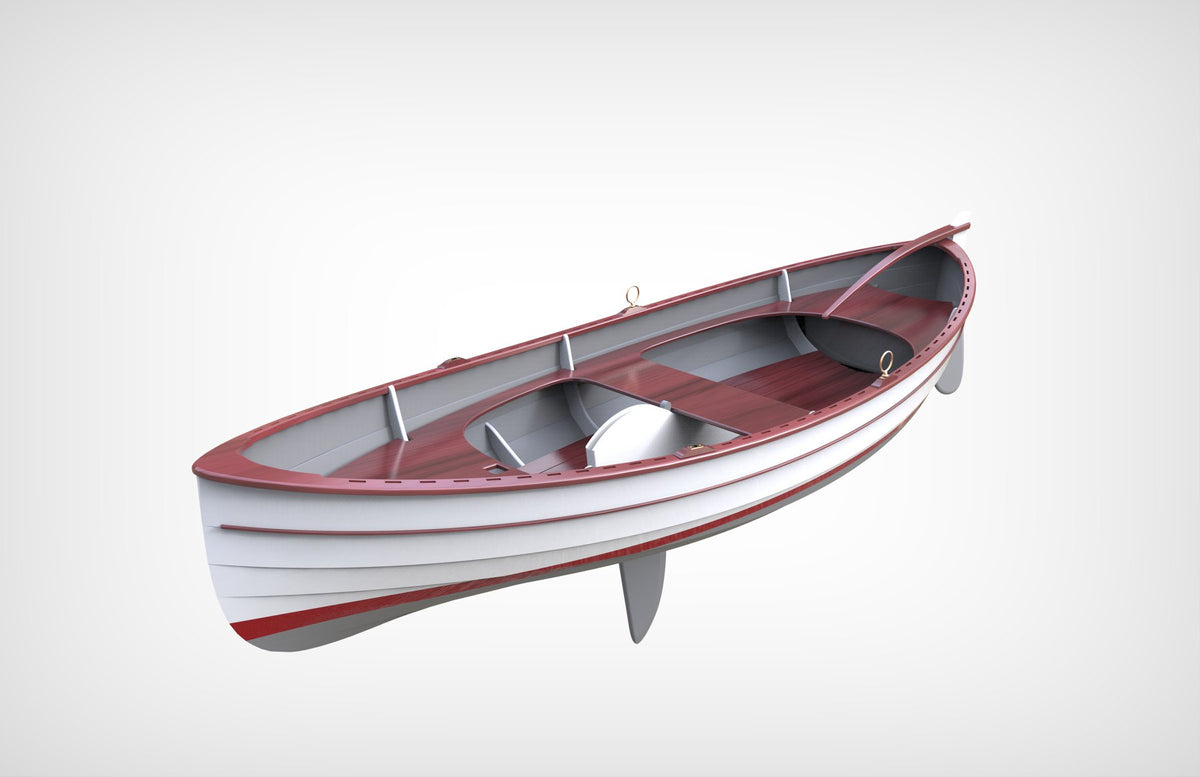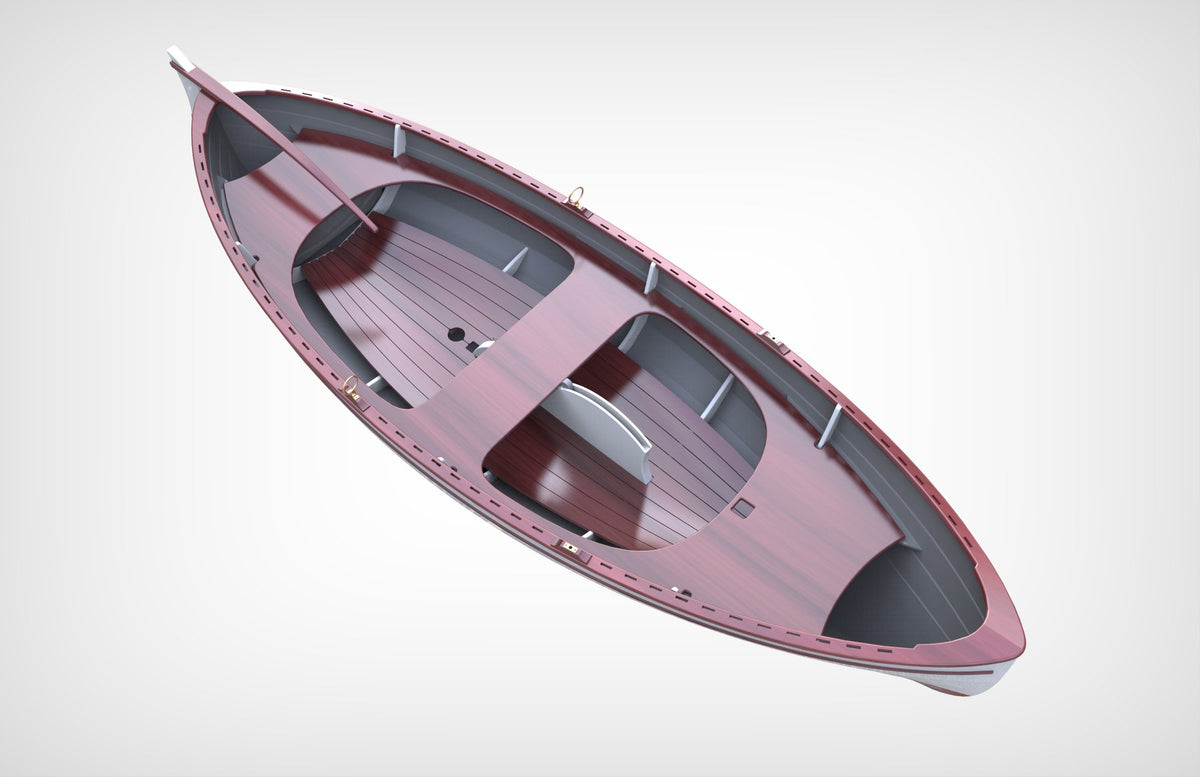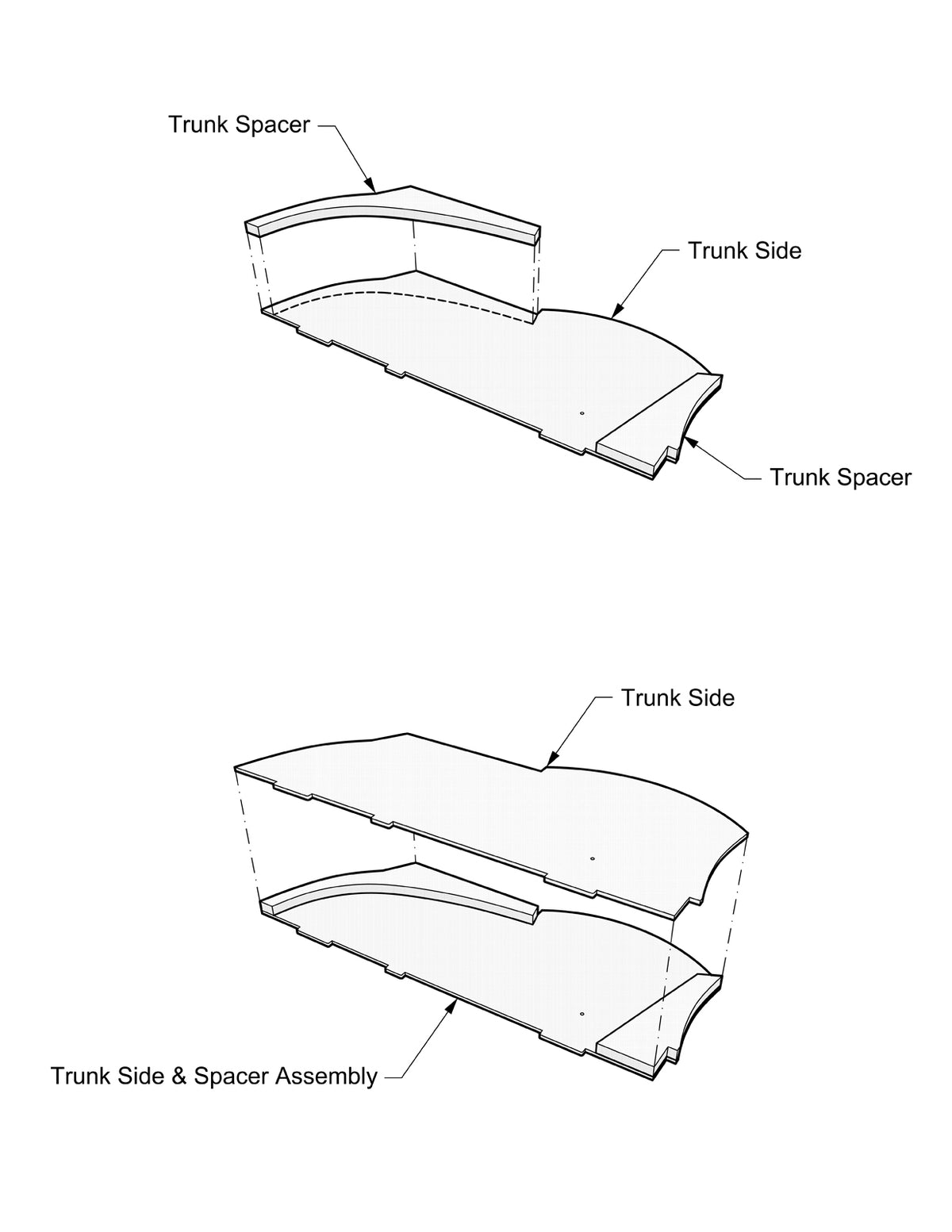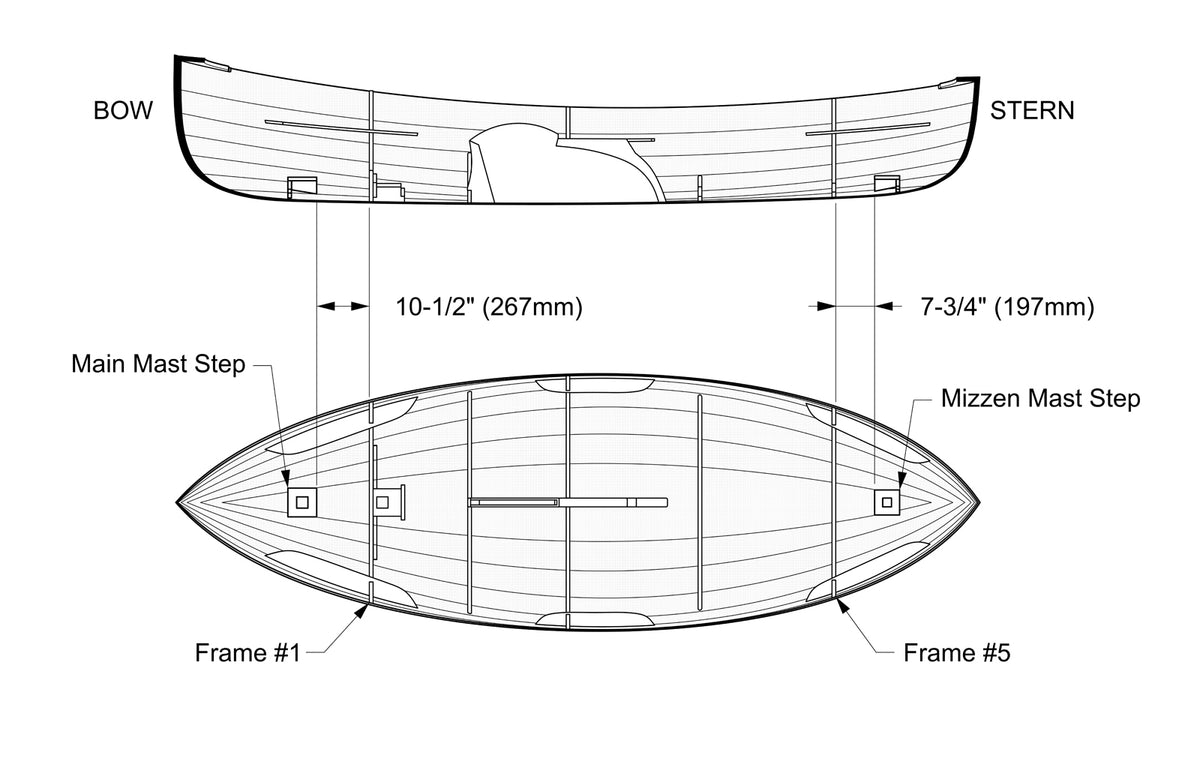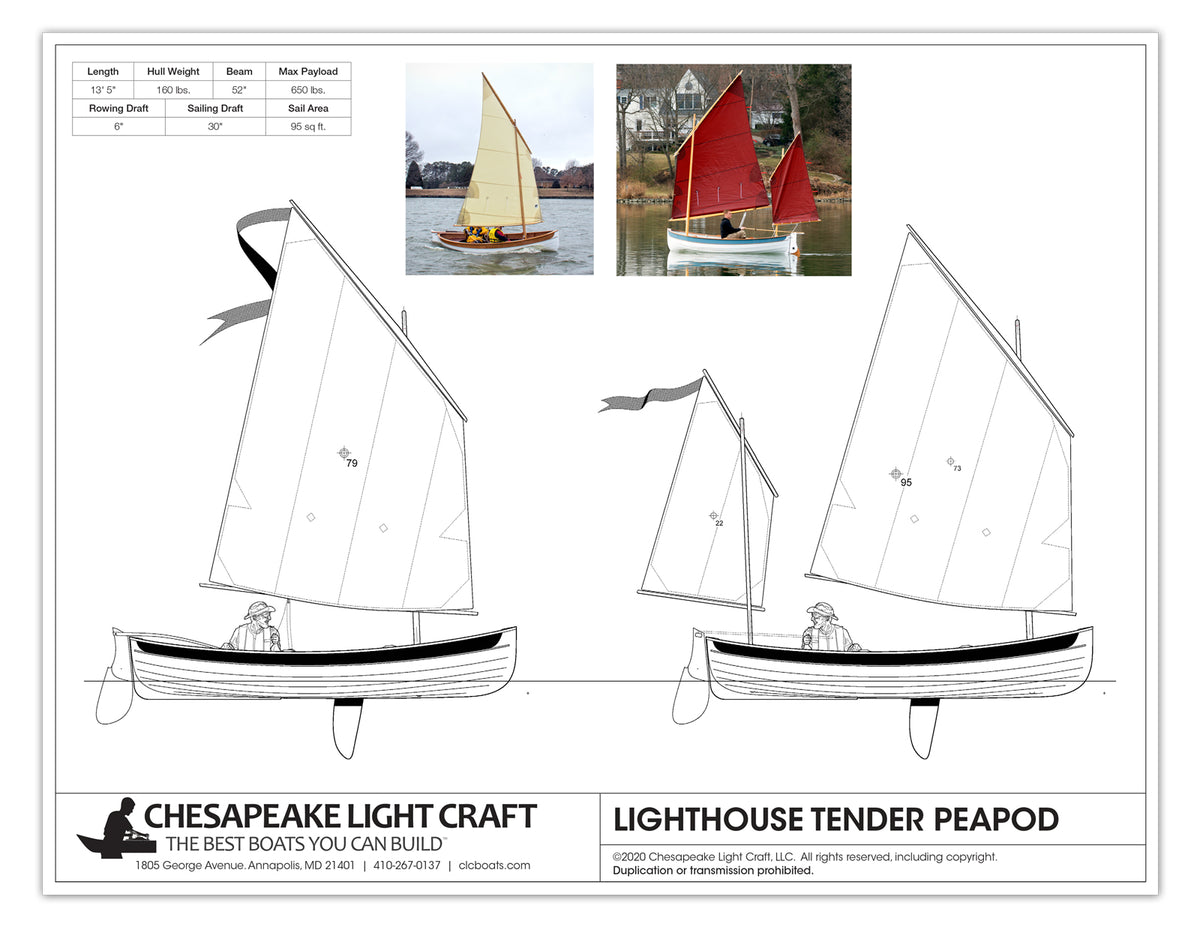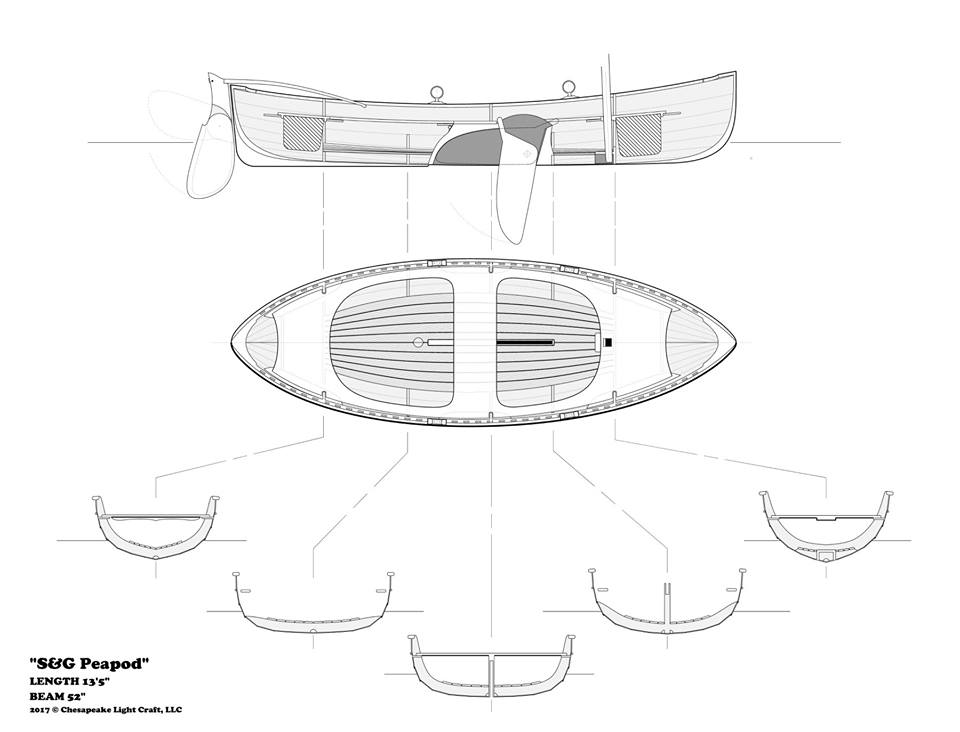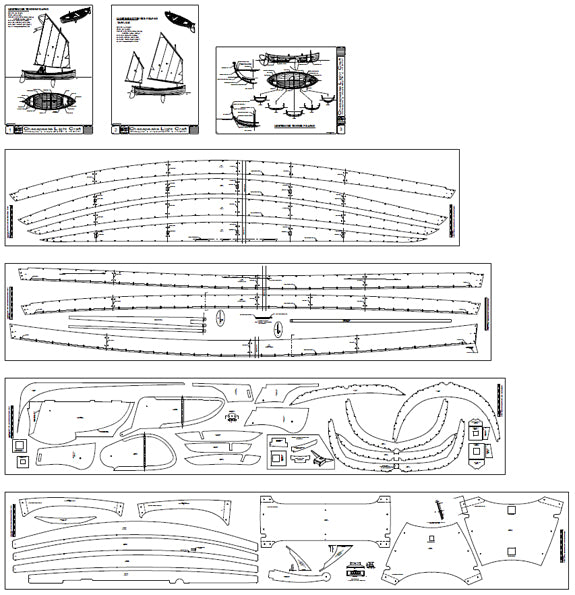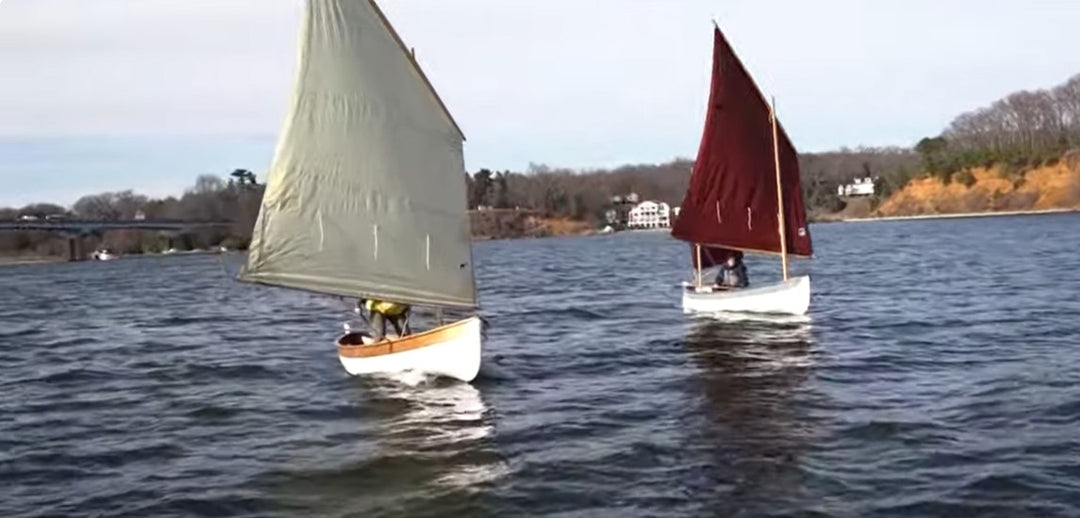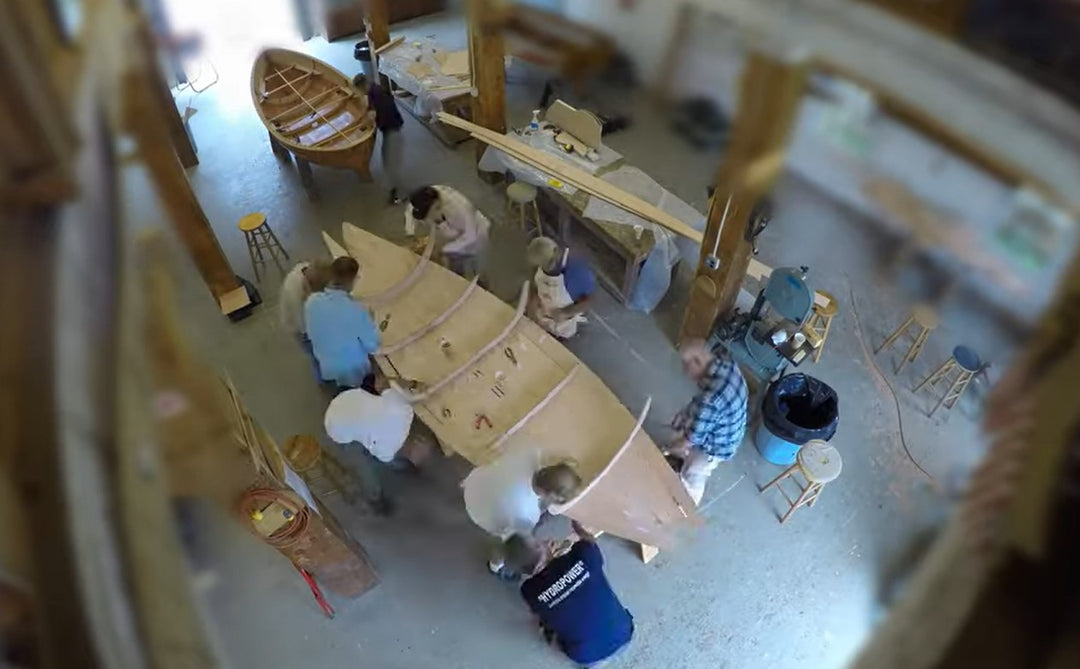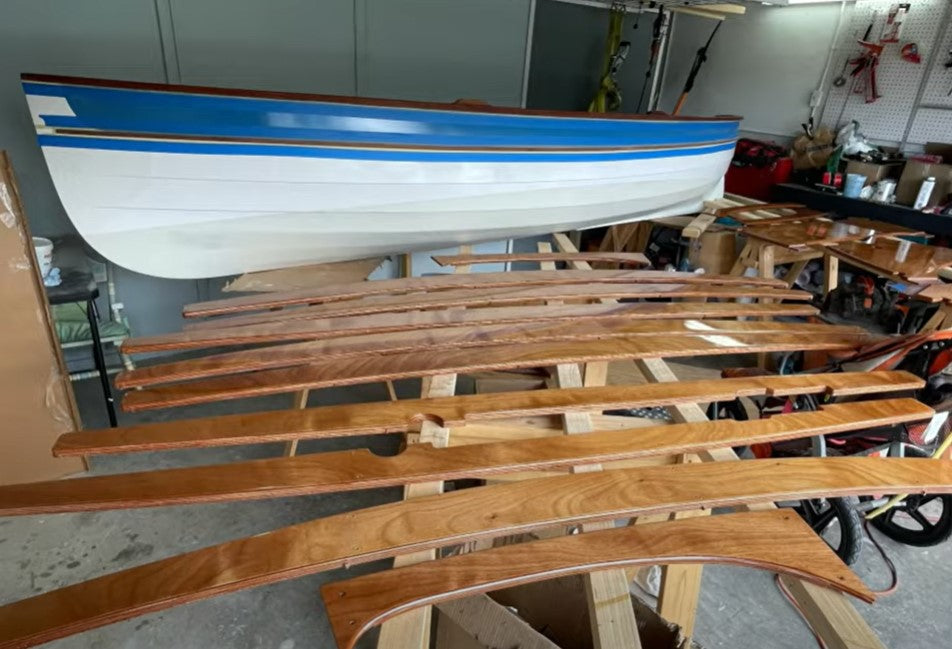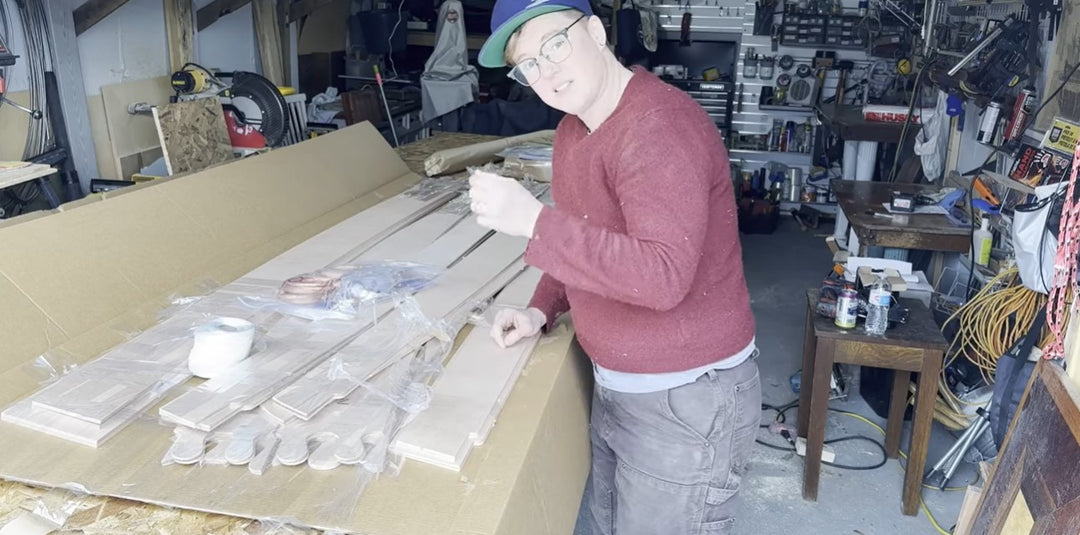Specifications
Performance
Stability
Speed
Cockpit Room
Payload
Ease of Construction
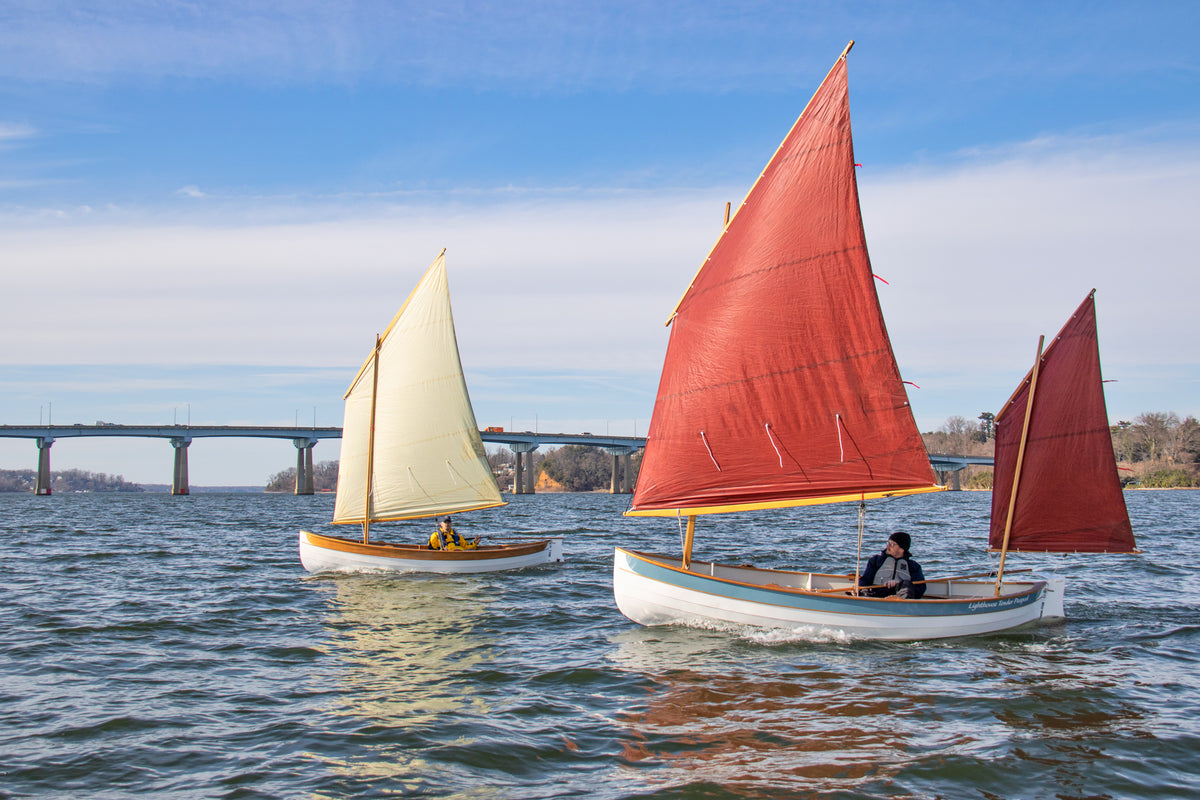
Overview
The Lighthouse Tender Peapod is modeled on the "peapods" indigenous to Maine. "Peapod" is a somewhat amorphous term for a double-ended rowing-sailing boat, used for inshore lobstering, fishing, and general utility such as tending lighthouses. Designer John C. Harris was inspired by the "Old Sailing Peapod" from Washington County, Maine, detailed in American Small Sailing Craft, Howard Chapelle's indispensable reference work of traditional designs. The boat in American Small Sailing Craft was built "about 1886" and its hull shape recorded by Chapelle in 1937.
A good peapod is stable enough to allow the crew to stand and retrieve heavy lobster pots over the side. Rowing qualities are central to the design, but sailing rigs were added whenever much distance needed to be covered. Stable and easily driven, they make fine sailboats. Traditional working peapods were extinct by the 1960's, but thanks to Chapelle and others the type found a new life as a pleasure boat.
A traditional peapod is really hard to build. It took John Harris the better part of 20 years to translate the Maine peapod's subtlety of shape and character into a design that can be built easily using stitch-and-glue techniques, without a complicated mold or complex joinery.
"You'd never guess it, but the Skerry design was my first hack at a peapod, way back in 2000," John says. "At the time, however, getting plywood to bend into such a complex shape was out of reach of available design technology. Instead, the Skerry developed into a cousin of the round-sided dory---a simpler, though no less attractive shape. It was a happy accident, as the Skerry ended up really light and really quick to build, like a dory, and became one of the most popular boat kits of all time."
CAD/CAM has come a long way, meanwhile, and John remarks, "We've gotten a lot smarter." CLC's new Tenderly Dinghy was the big breakthrough, John says. "The Tenderly Dinghy can be stitched-and-glued by most first-time boatbuilders, yet there isn't the slightest compromise in that boat's traditional hull shape for the sake of construction ease. It's an absolutely free-form shape, unconstrained by the need to be shipped out as a pre-cut boat kit. Show a Tenderly Dinghy to a professional boatbuilder unfamiliar with the design, and they'll assume it was assembled using complex traditional techniques."
Before the 100th Tenderly Dinghy kit had shipped, John was convinced that he could have his stitch-and-glue peapod at last. In many respects, the new peapod design is a Tenderly Dinghy with a pointed stern instead of a transom. After some tinkering, the prototype Lighthouse Tender was built at CLC, and another during a class at the WoodenBoat School during 2018. Both hulls were finished at CLC while cameras snapped pictures for the instruction manual.
The Lighthouse Tender rows and sails beautifully, upwind and down. It's stable and, like its traditional forebears, carries a heavy load. Though the Lighthouse Tender is 18" shorter than the Skerry, its payload is 45% larger, at 650lbs.
Reviewed by Mike O'Brien in WoodenBoat magazine, issue no. 277.
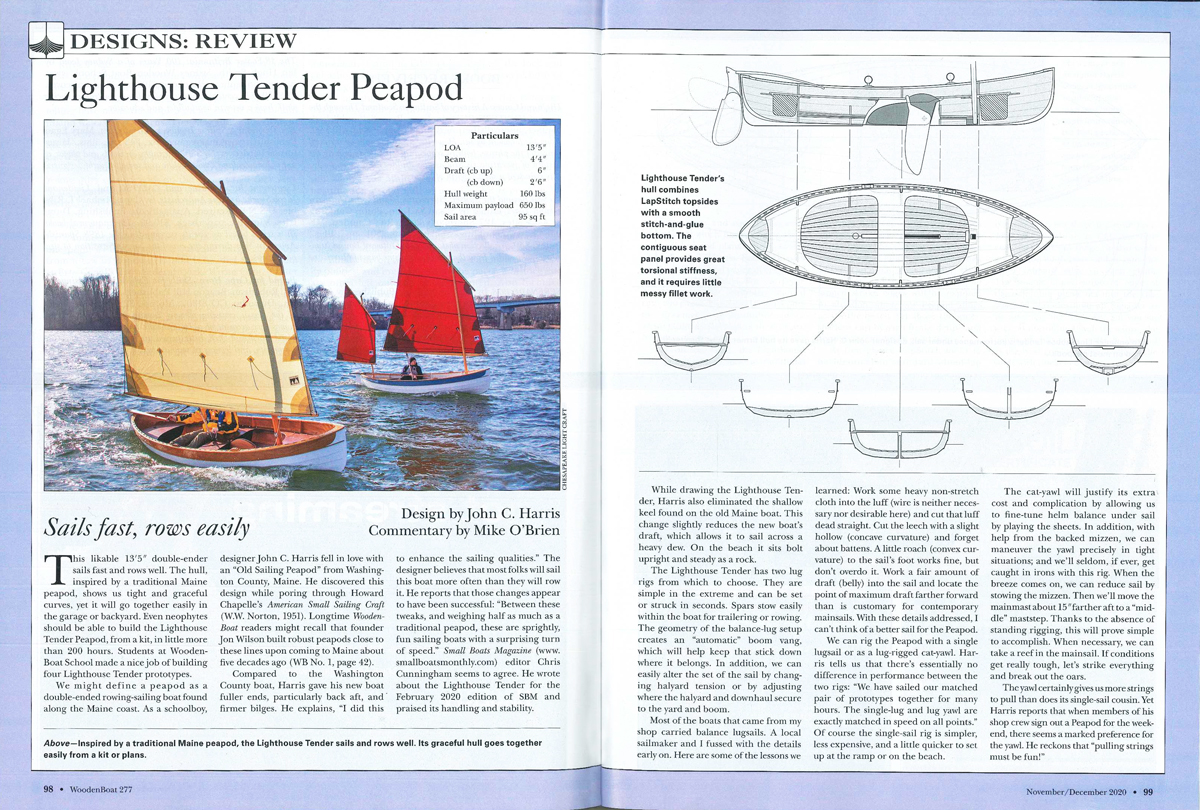
As seen in WoodenBoat Magazine #277
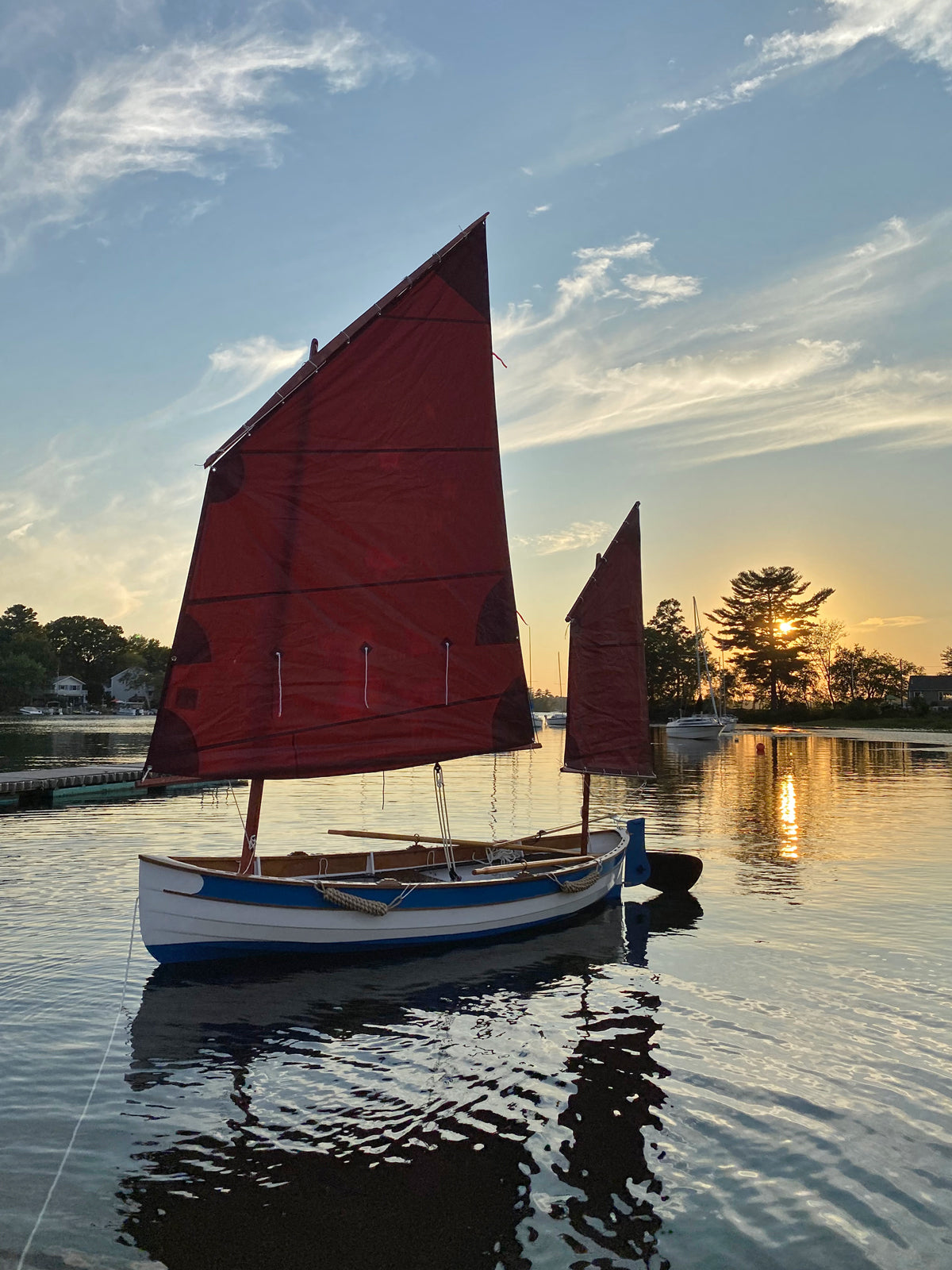
What builders are saying
Main Gallery
Construction Gallery
Line Drawings
Videos
Frequently Asked Questions
Take One of our Boatbuilding Classes
We offer classes for many of the boats we sell. Teaching sites stretch from Maryland to Washington State and from Maine to California. Click here to find out more.
View ClassesNeed Help Building it?
We’re here to help with any questions you might have during the build process.
